The piazza is the centre stage of life in Italy.
Oval or rectangular, terraced or shell-shaped, with streets bursting from it in all directions or with smaller squares branching off it, the Italian piazza is the focal point of Italy’s villages and cities and, traditionally, is surrounded by the most striking and historically important religious and lay buildings in town.
Meaning ‘town square’ in English, the concept of piazza started life in Ancient Greece as plateia (broad street), then evolved in Ancient Rome to platea (courtyard and/or broad street) to reach its focal role in Italy of the Middle Ages and the Renaissance.

This is when piazzas grew either in front of a town’s or city’s main church or town hall thus providing space for religious and/or civil functions to take place at a central urban point. And, then, with Italy being the proud heir of Ancient Rome, many Italian piazzas evolved at the same place at which an ancient Roman forum had stood over two millennia ago thus linking the past, the present, and the future in a long chain of town events, weekly markets, and human interactions.
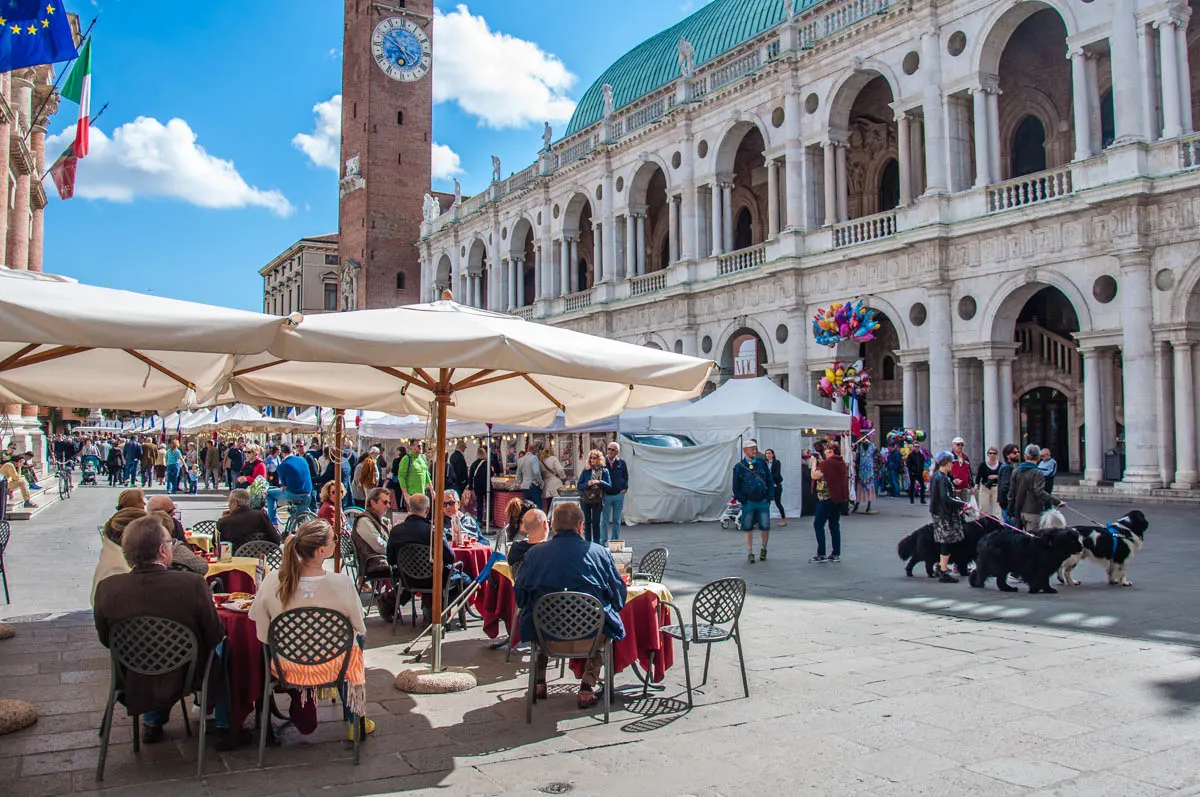
During my six years of living in Italy, I have had the pleasure to take in the beauty of many an Italian piazza. Whether it was to sip a coffee, to take a series of photos, to go for a nice evening walk (called a passeggiata in Italian), or to delve into the history of a particular town, my first port of call no matter where I have found myself in Italy has always been the local piazza.
As long as I was able to pinpoint the main piazza of an Italian village, town, or city, I immediately knew inside myself that I was going to be just fine and able to do and see the best of that destination.
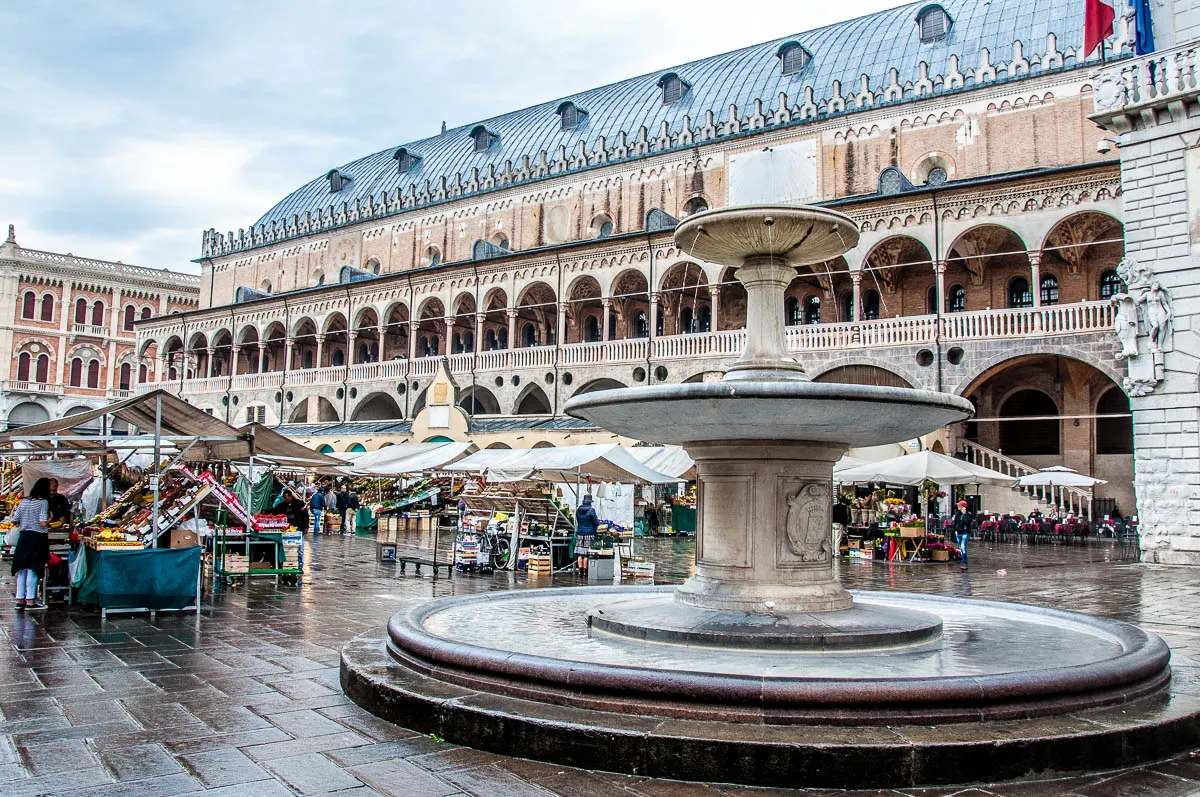
An Italian piazza is not just the physical hub of buildings surrounding a large open space in the middle. The piazza in Italy is the soul of the local community. It’s a place that changes with the seasons and a focal point where all large civic and religious events are held. Markets, festivals, parades… It all takes place at the Italian piazza. It’s where people come together and feel as one.
So, looking through the photos of the many Italian piazzas I have had the chance to admire and explore, it struck me that many of the most beautiful piazzas here are clustered in the cities and towns of the Veneto.
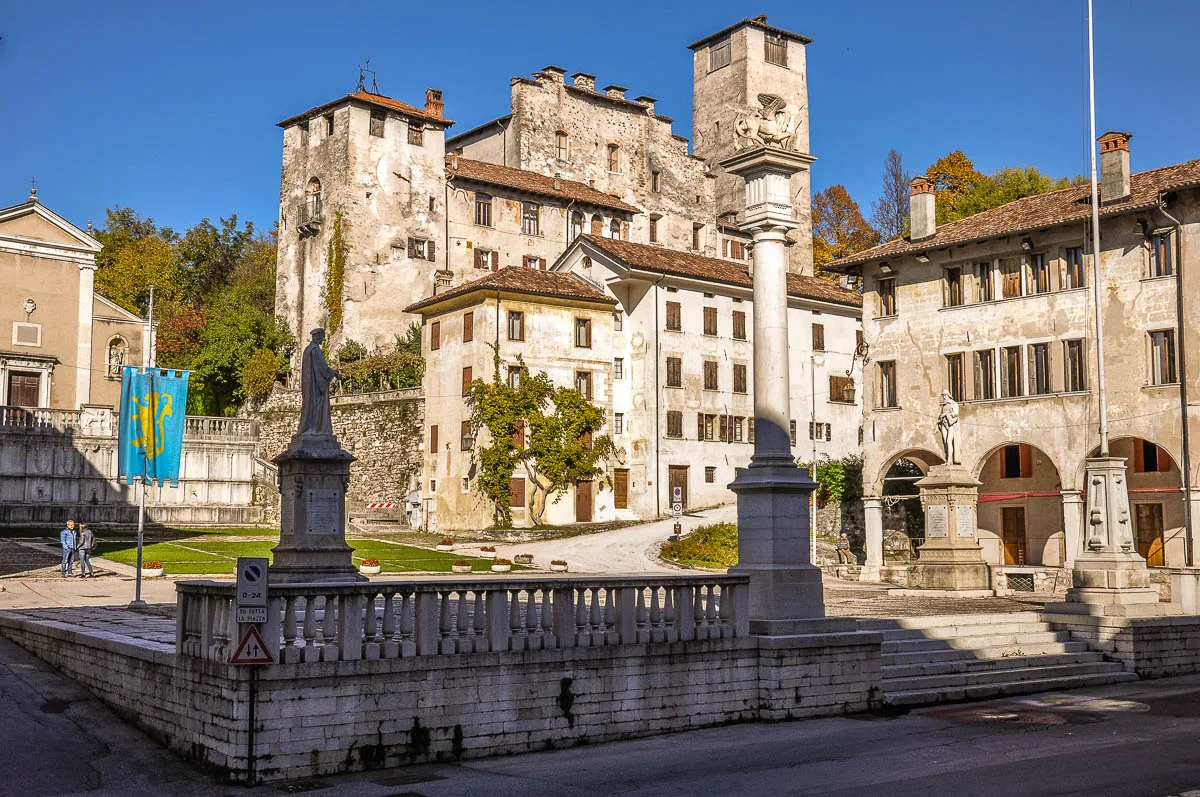
The Veneto is the Northern Italian region that is hugged by the Adriatic Sea to the east, the Dolomites to the north, Lake Garda to the west, and the River Po to the south. It is a region rich in history and happenings, a place where natural beauty and beauty created by the hands of people are at every corner.
As such, today I want to introduce you through my lens and words to over twenty of the most beautiful piazzas you can see for yourself in the Veneto, Italy.
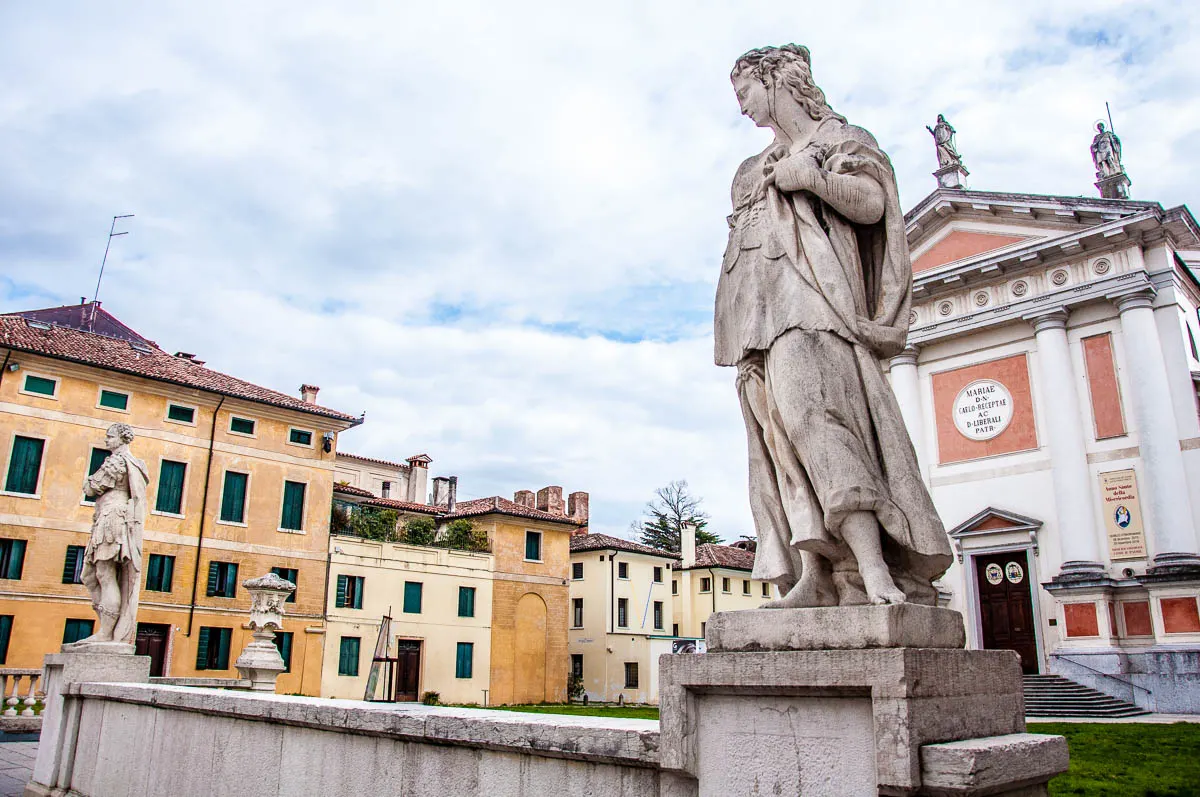
You will find these piazzas both in small towns and large cities. They are spread all over the Veneto’s topography – from the flat as a pancake Venetian plains to the region’s mountainous and hilly areas.
They are the focal points of medieval walled towns and of some of the world’s most famous cities. Above all, they are all beautiful – for their location, their history, the buildings that surround them, and for the local people who flock to them to relax and socialise on balmy evenings.
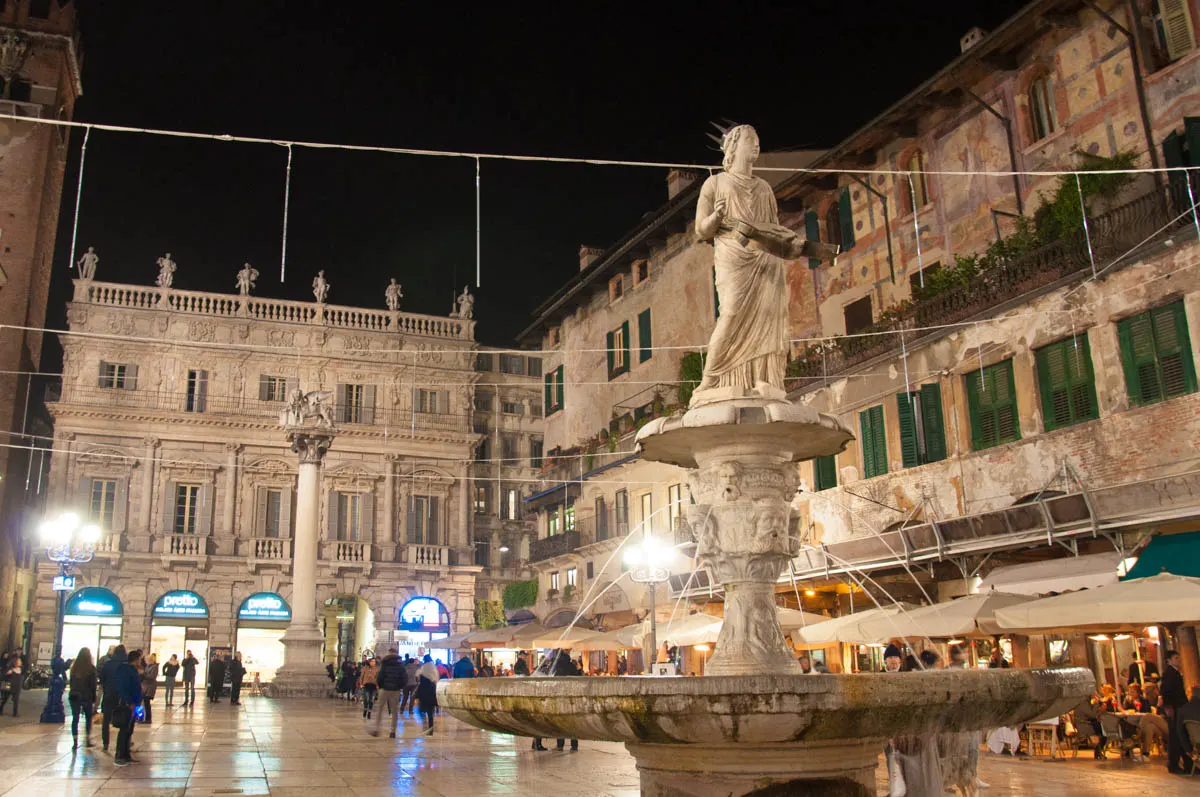
I have ordered these more than twenty most beautiful piazzas in the Veneto, Italy strictly in accordance with my personal preference and love for them.
So, make sure that you see them for yourself and then let me know how you would re-order them and which other local piazzas you would add to my list.
Now, let’s start this visual journey! Enjoy!
Italian Piazzas – 20 Most Beautiful Squares in the Veneto, Northern Italy
1. Piazza Flaminio, Serravalle (Vittorio Veneto)
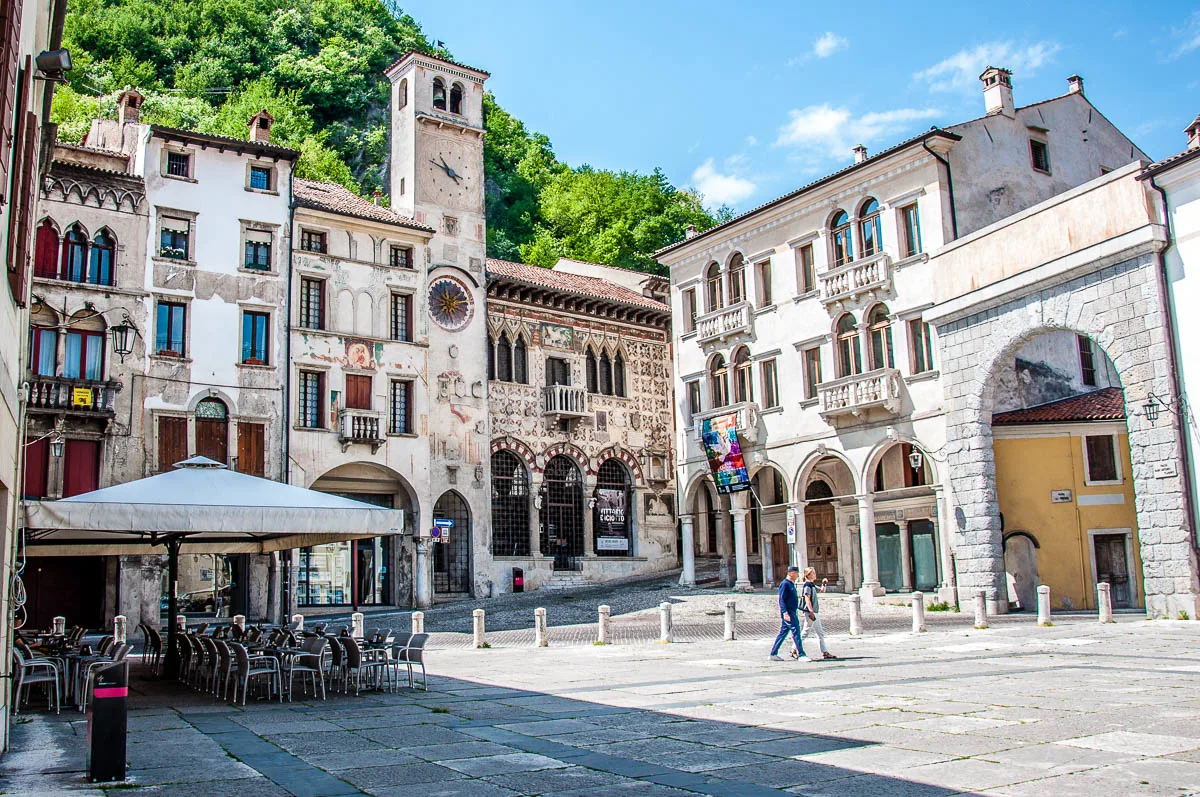
Standing at Piazza Flaminio in Serravalle, I feel like I am in the middle of a Renaissance fairytale.
The buildings are tightly packed, almost squished one next to another, yet they are in perfect harmony. The steep slopes of Mount Cucco provide a lush green backdrop. Long porticoes embrace on two sides Piazza Flaminio. Their arched openings create a constant play of light and dark like a pretty architectonic lace.
The eye is immediately drawn to the square’s tallest structure – a tower which, curiously, has two clock dials.
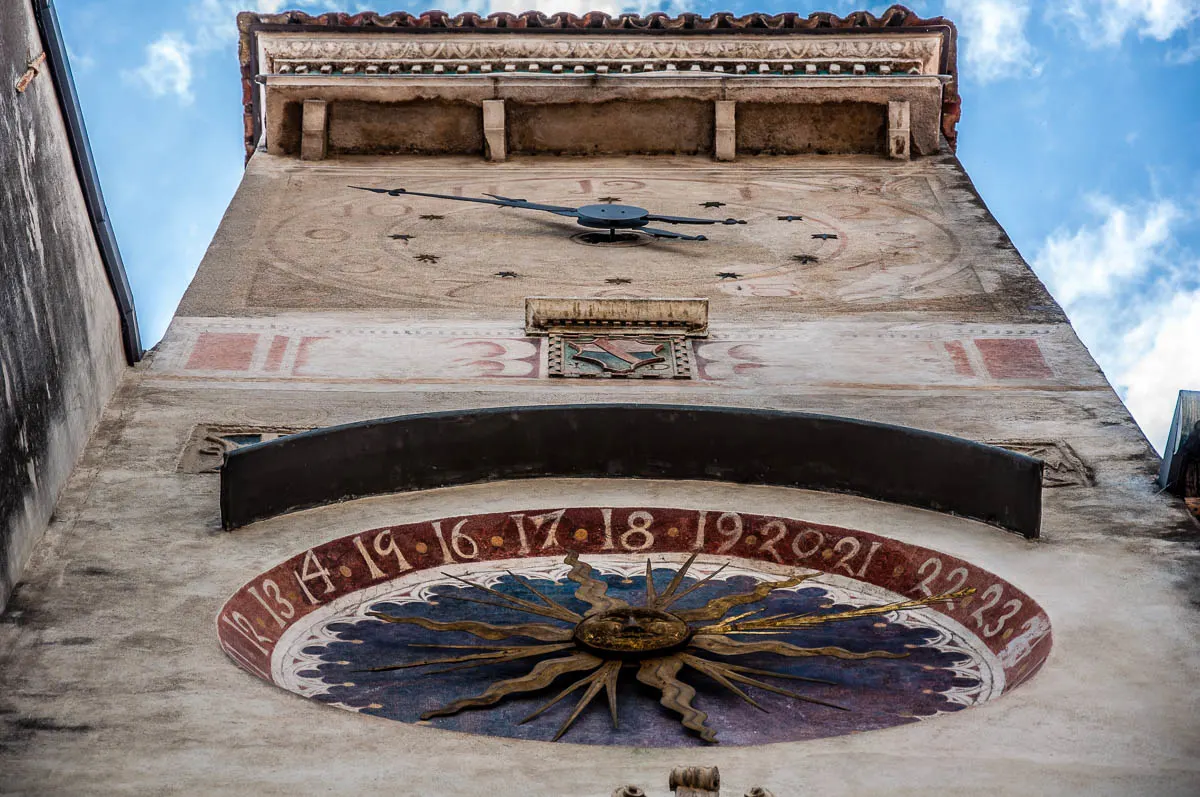
Look closer and you will see that the bottom dial has 24 divisions with the 24th hour standing at the place which nowadays is reserved for 3 o’clock. This is one of the most ancient clocks in Europe and it is tentatively dated to 1334. The top dial is from 1487 – the year in which the height of the tower was increased. At the same time, the bottom clock was covered and it was only re-discovered again at the end of the 20th century.
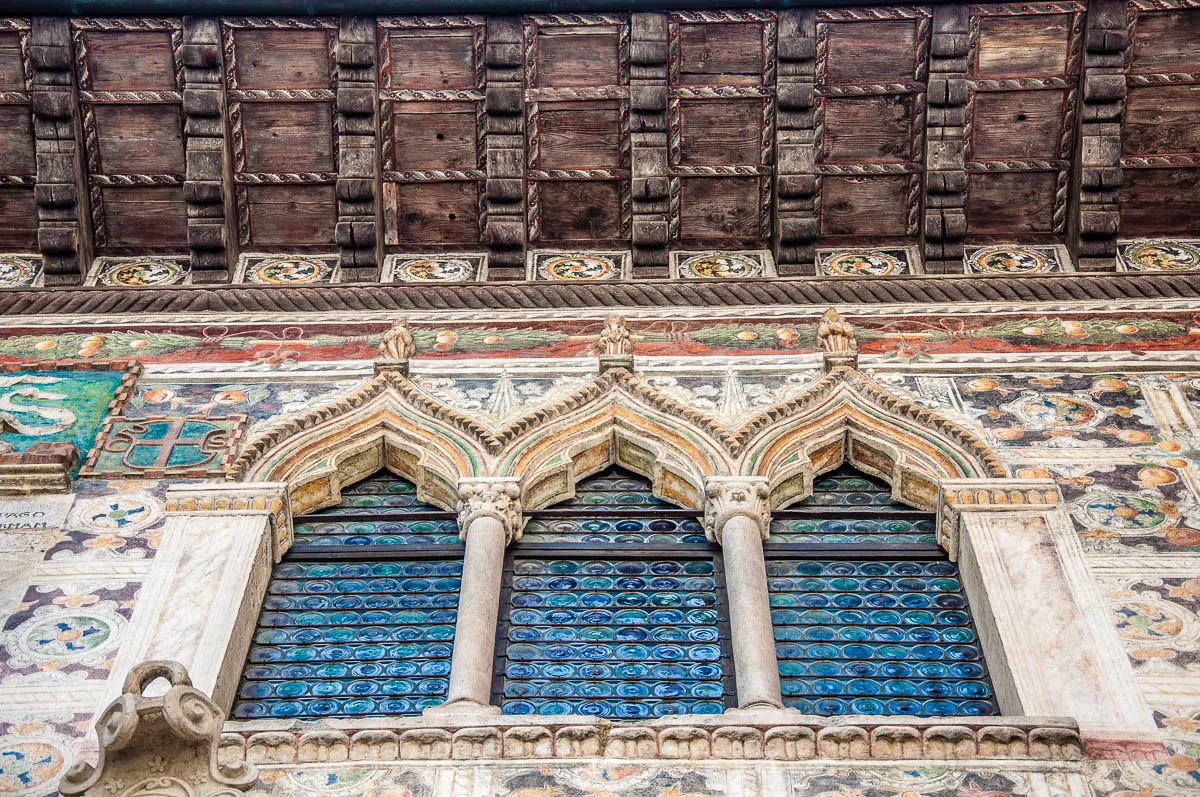
Among all the lovely facades that surround Piazza Flaminio in Serravalle, my favourite one is that of the Loggia Serravalese. It is frescoed with lush pomegranates and adorned with Venetian trifora windows. Inside it is the Museum of Cenedese which, as every small-town Italian museum, is a treasure trove of frescoes, paintings, and other objects of art and history.
Serravalle, originally a town in the Veneto, nowadays has been absorbed by the nearby larger town of Vittorio Veneto. Still, Serravalle preserves its medieval-cum-Renaissance spirit, and a visit to it, although off the beaten track, is much recommended if you want to experience the authentic beauty of the Veneto in Northern Italy first hand.
2. Piazza dei Signori, Vicenza
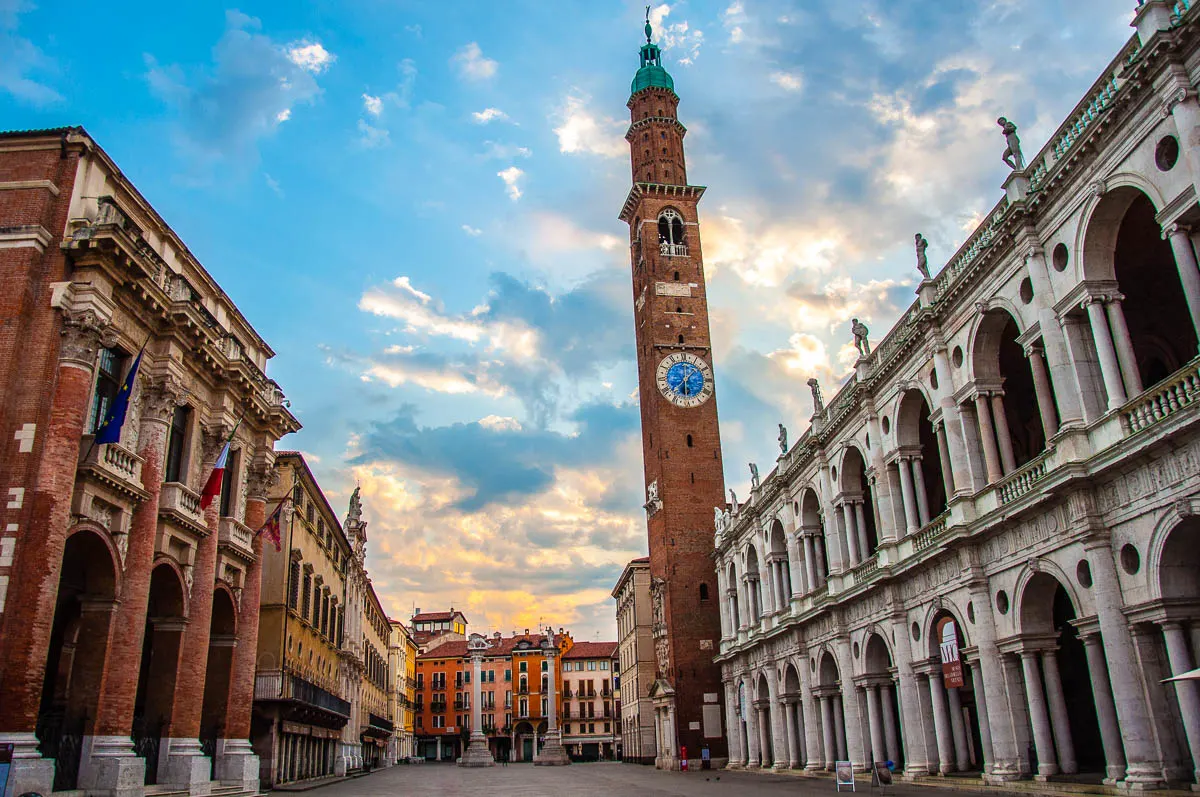
In my six years in Italy, I must have crossed this square over a thousand times.
There are many remarkable things about Vicenza’s Piazza dei Signori which for me remains Italy’s prettiest square that most people have never heard of. Here are a few:
- the piazza stands at the exact spot where the Forum of Vicetia – the Roman precursor of the city of Vicenza – once was;
- it stretches in the shadow of an 82 meters tall clocktower – the Torre Bissara;
- it houses a building that is 72 m long – Palazzo del Monte della Pieta’;
- it’s surrounded by tall colourful houses; and
- at one of its ends, there are two pillars – one crowned by the Venetian Lion and the other – by Christ the Redeemer.
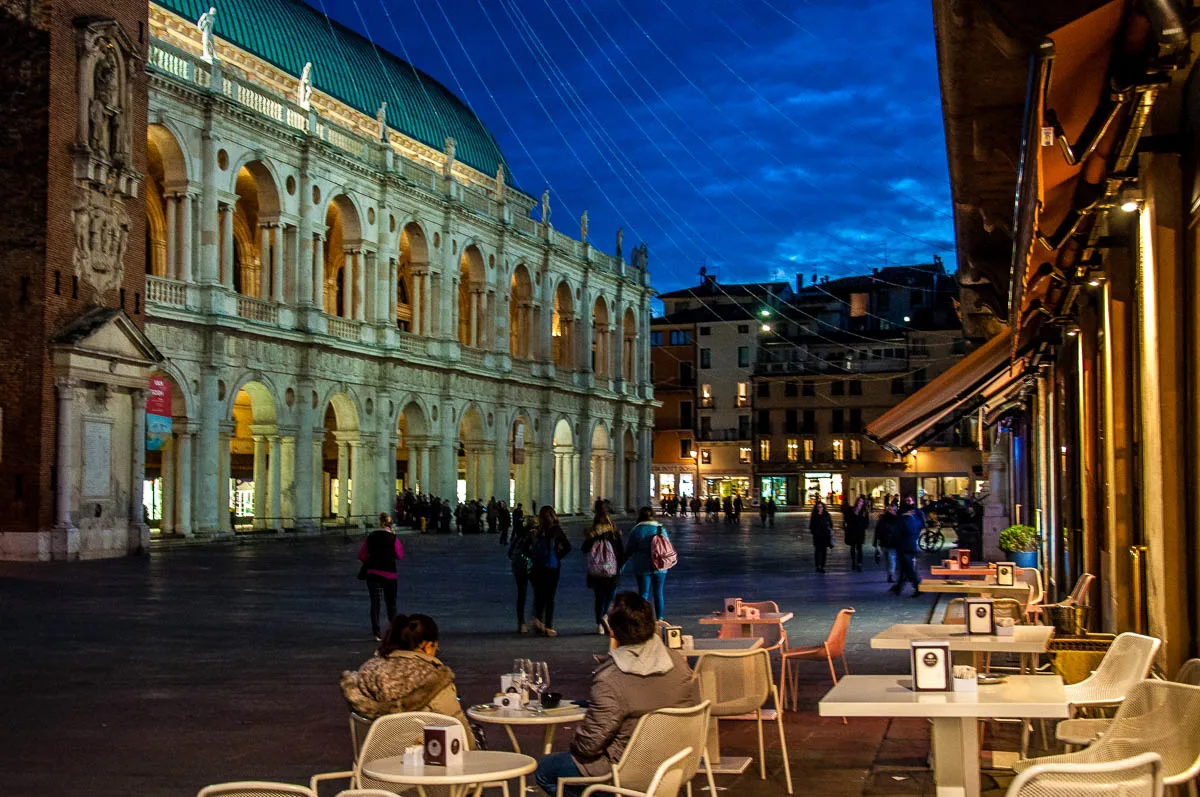
The most important thing about Vicenza’s Piazza dei Signori though is that it is flanked by two of Andrea Palladio’s most beautiful and iconic buildings – the Basilica Palladiana and the Palazzo del Capitaniato. Palladio was a renowned Italian Renaissance architect who sought inspiration in Vitruvius and the Ancient Roman architectural canons. His style – the so-called Palladian architecture – has been embraced and replicated worldwide.
The square itself was known as Piazza Grande during the Middle Ages. Its current name, Piazza dei Signori, means Square of the Lords in English as this is where the city’s Chief Magistrate and Captain lived when the Republic of Venice ruled over Vicenza from 1404 to 1797.
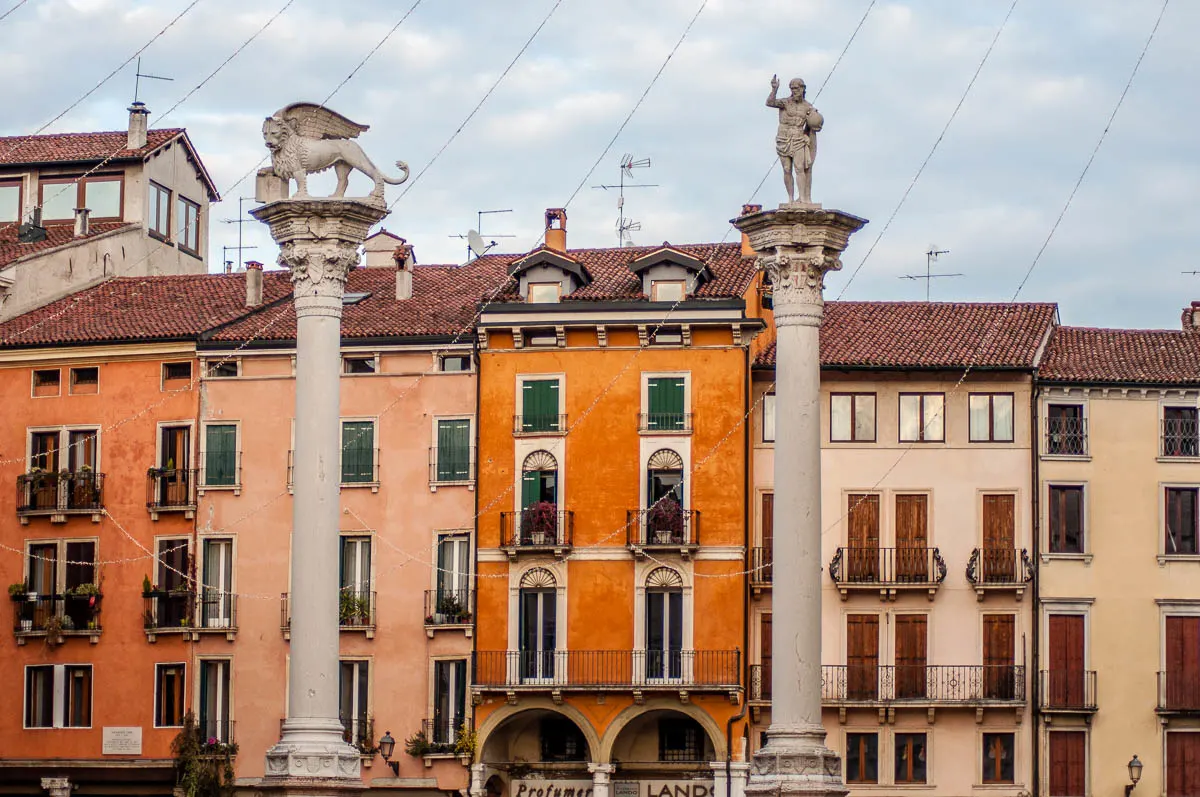
The piazza really lives up to its name. It simply is grand! Its expansive surface is paved with large flat stones on which the local kids love to run and ride their bikes. On warm evenings, crowds of elegantly dressed people descend on Piazza dei Signori to enjoy a nice evening walk in the company of friends and relatives.
Cafes and bars line the square serving cups of always excellent Italian coffee and glasses of aperitivo.
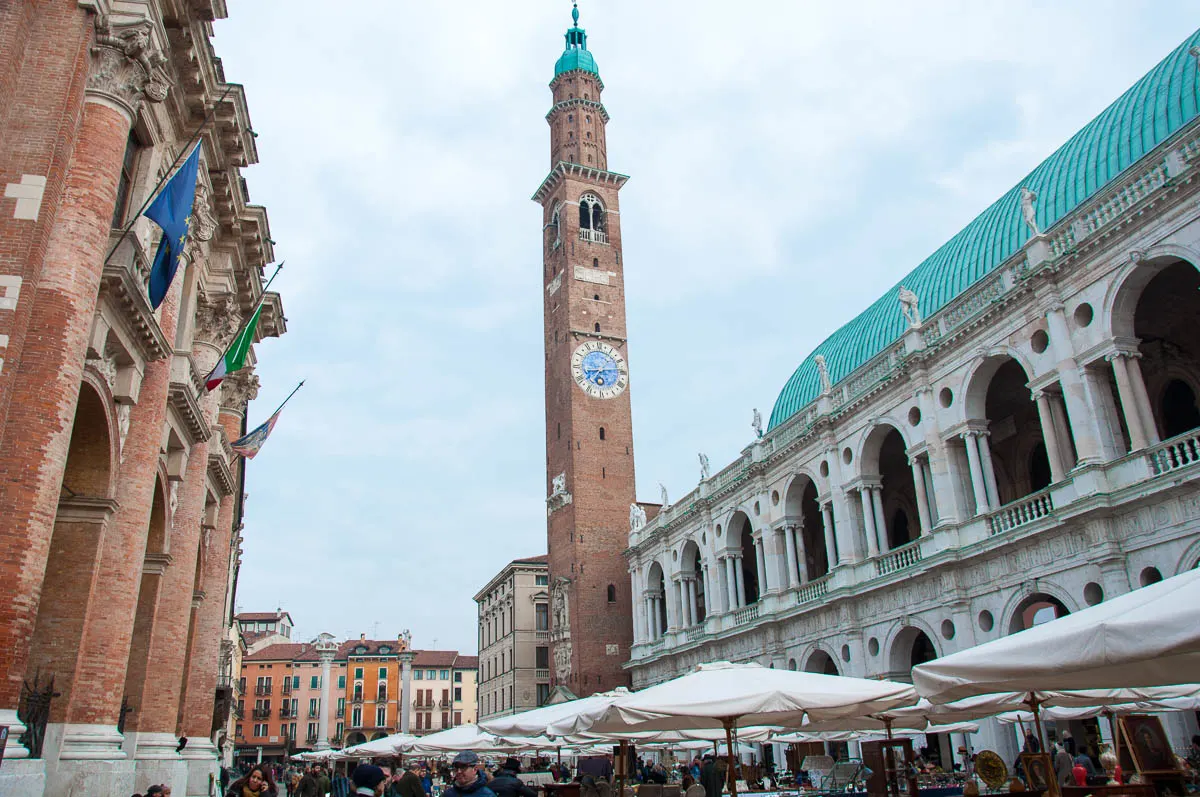
And then, every Tuesday and Thursday all-year-round, Piazza dei Signori is taken over by a myriad of market stalls selling anything and everything from tablecloths and scarves to bags, potted flowers, curtains, household items, and even underwear. And, as with everything in Italy, even the market has centuries-long traditions, for it has been held in this central Vicenza square since the Middle Ages.
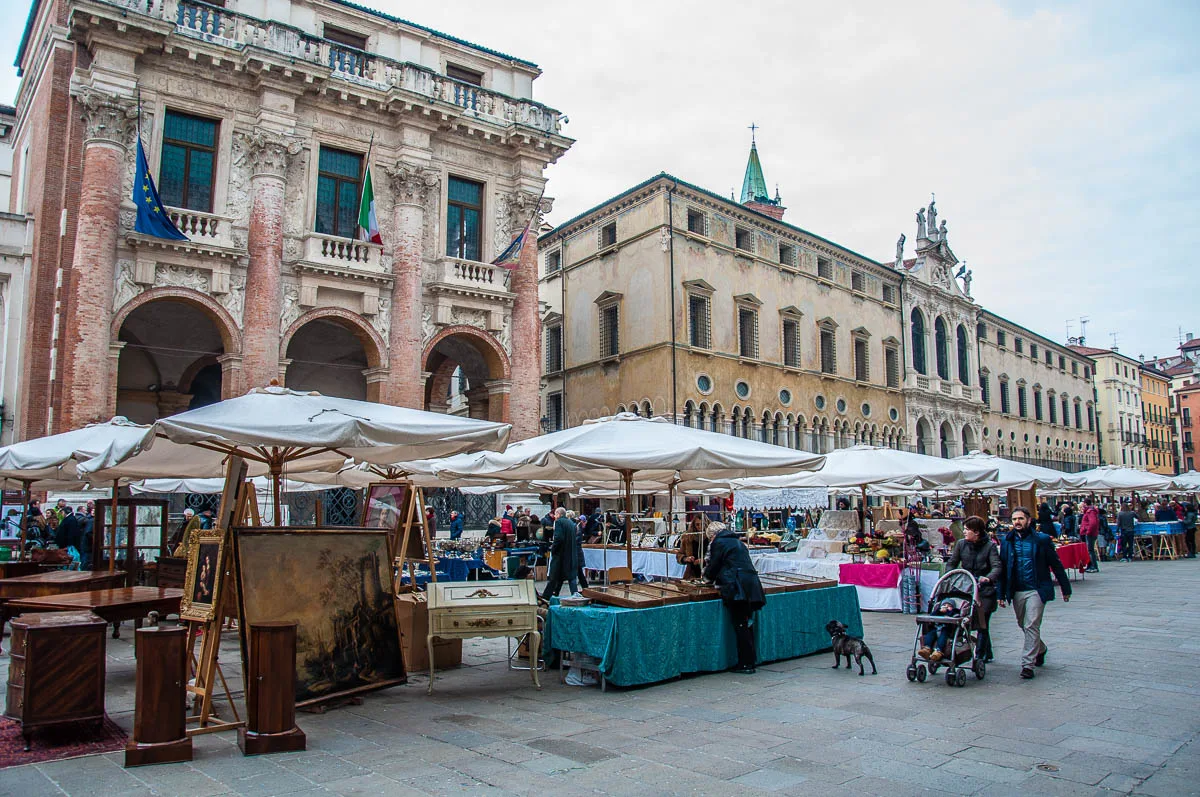
At weekends, Vicenza’s Piazza dei Signori hosts a long calendar of events: from flower markets to antique shows; from open-air concerts to art performances. Not forgetting the exciting chocolate festival which takes over the square for a long weekend every October. For Christmas, pretty strands of festive lights hang above Piazza dei Signori, thus giving it a very fairytale look.
As Italian piazzas go, Piazza dei Signori in Vicenza truly is a must-see!
More Information:
- Vicenza, Italy – 25 Best Things to Do and See in Vicenza – Northern Italy’s Hidden Gem
- The Beauty of Vicenza, Italy in 30 Photos and Stories
3. Piazza delle Erbe and Piazza della Frutta, Padua
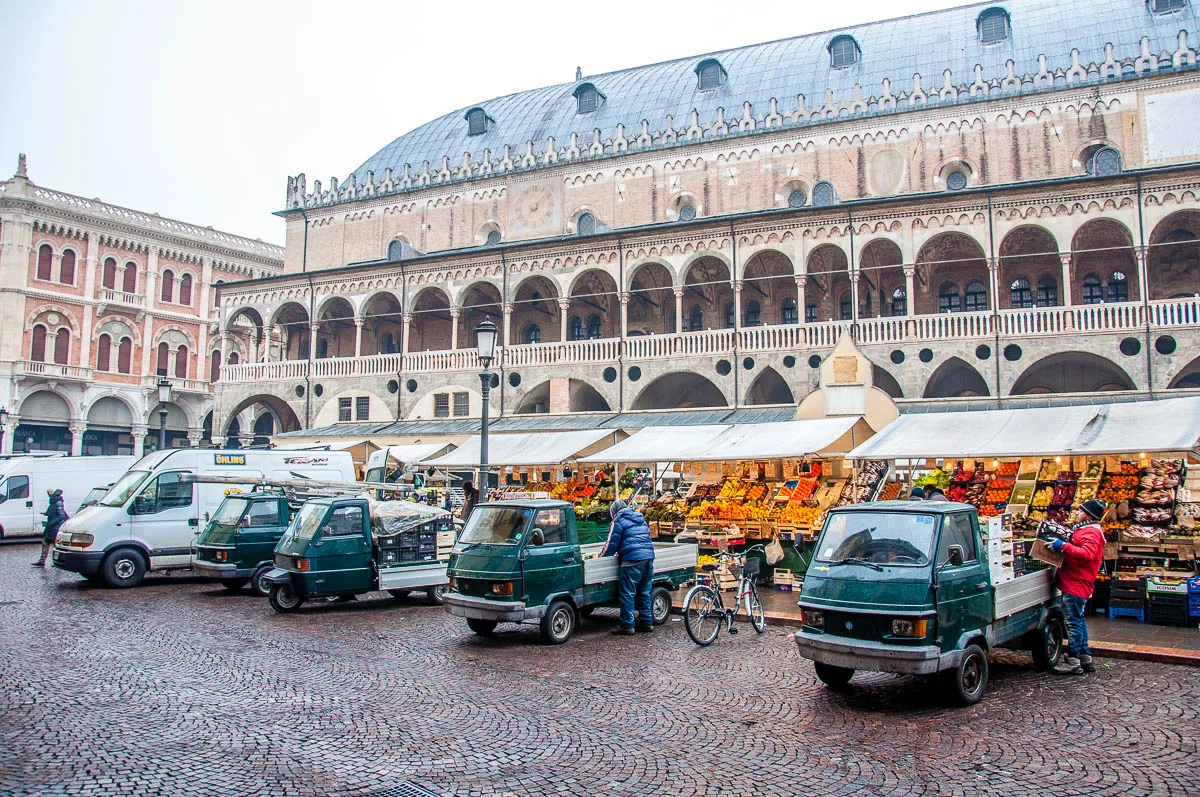
Padua has many beautiful piazzas. For me, the Piazza delle Erbe and the Piazza della Frutta are the ones I feel the most in tune with. I can literally spend hours there just taking in the general hubbub, browsing stalls and delis, and feeling content with life.
Standing one next to another and separated only by the large body of Padua’s medieval town hall, the Palazzo della Ragione, these two historical squares are pretty as a picture and are the liveliest places in town.
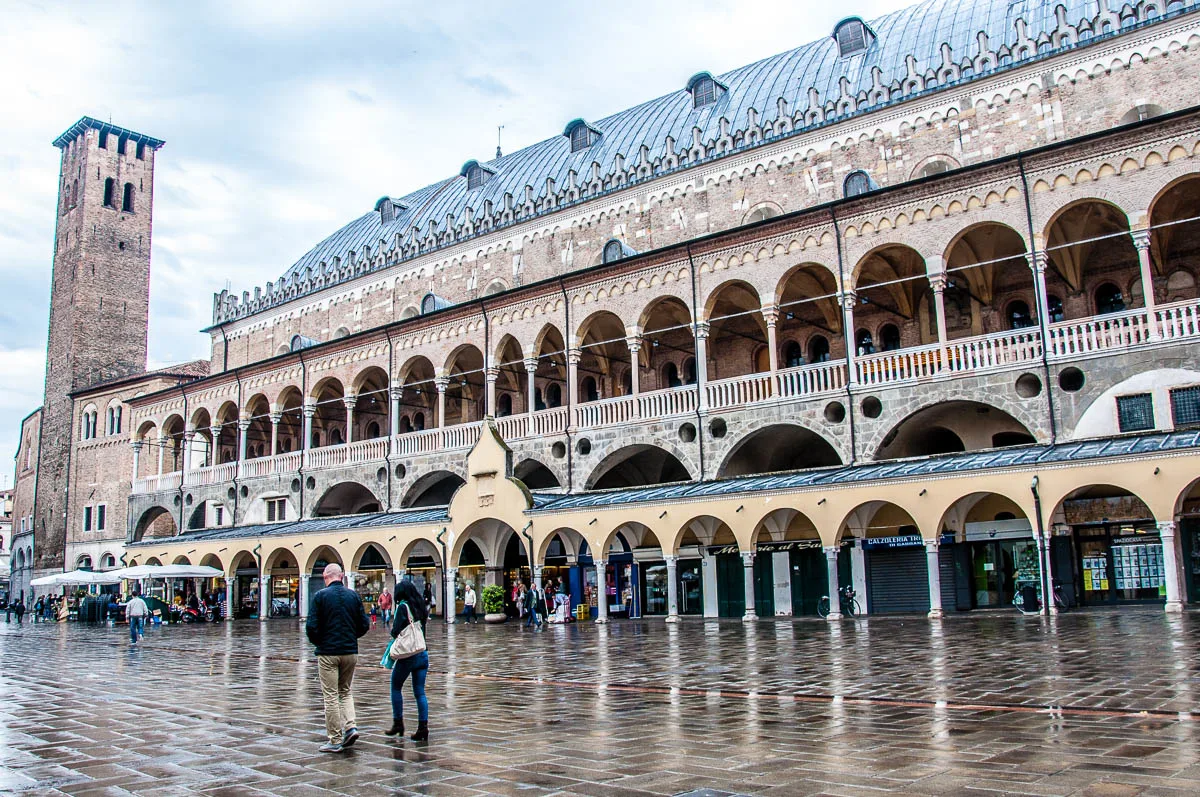
They host an eight-century-old market that sets up its stalls on the historic squares every day (Sundays excluded). Expect a proper, cinematic Italian experience with fresh fruit and veg by the crate, little Vespas and tiny three-wheelers called Ape (which means bee in Italian!) zooming around, and long porticoes surrounding the piazzas like a long piece of lace.
It’s a lovely place to go to, either just to walk around imbibing Padua’s views, smells, and sounds or to shop and eat some of the best food on this side of Italy.
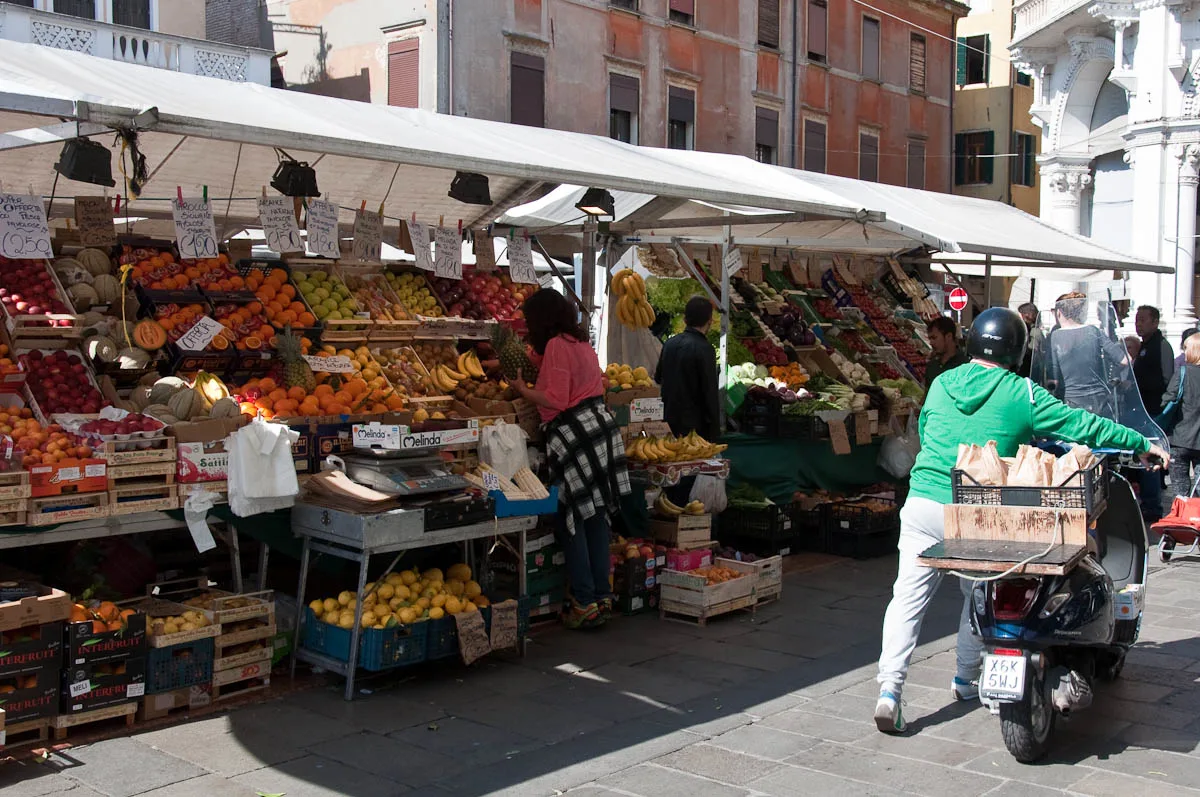
The market at Piazza delle Erbe and Piazza della Frutta ends in the early afternoon, so in the evenings the area is taken over by the chairs and tables of the adjacent bars and cafes. With Padua being a student city (the University of Padua is the second oldest University in Italy and the fifth oldest in the world), expect a lively atmosphere with groups of friends chatting over glasses of spritz and aperitivo.
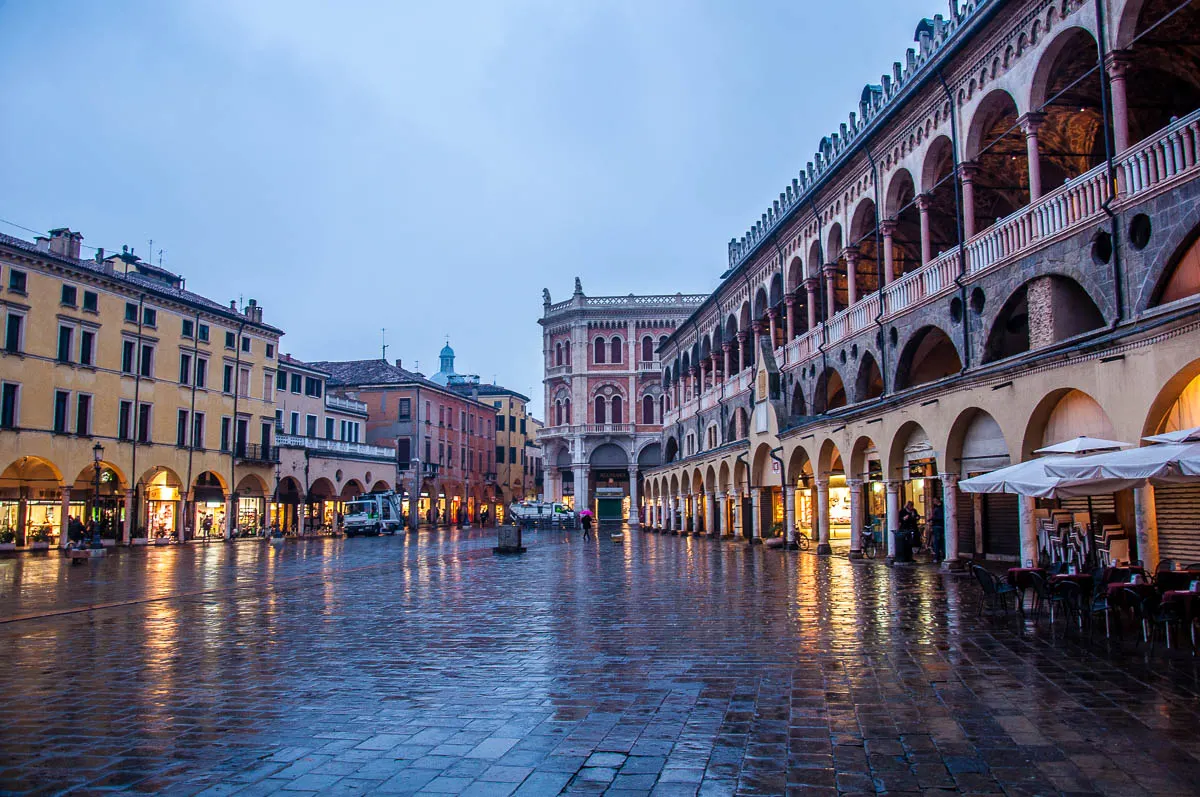
The light and bright atmosphere of the piazzas nowadays is in quite a sharp contrast with something that used to take place there a few centuries ago. From the Middle Ages through the Renaissance period, Piazza delle Erbe was one of two places in Padua where public hangings and beheadings were held. Several gruesome from our modern point of view capital punishments took place at Piazza delle Erbe which at the time was known as Piazza della Giustizia (Justice Square).
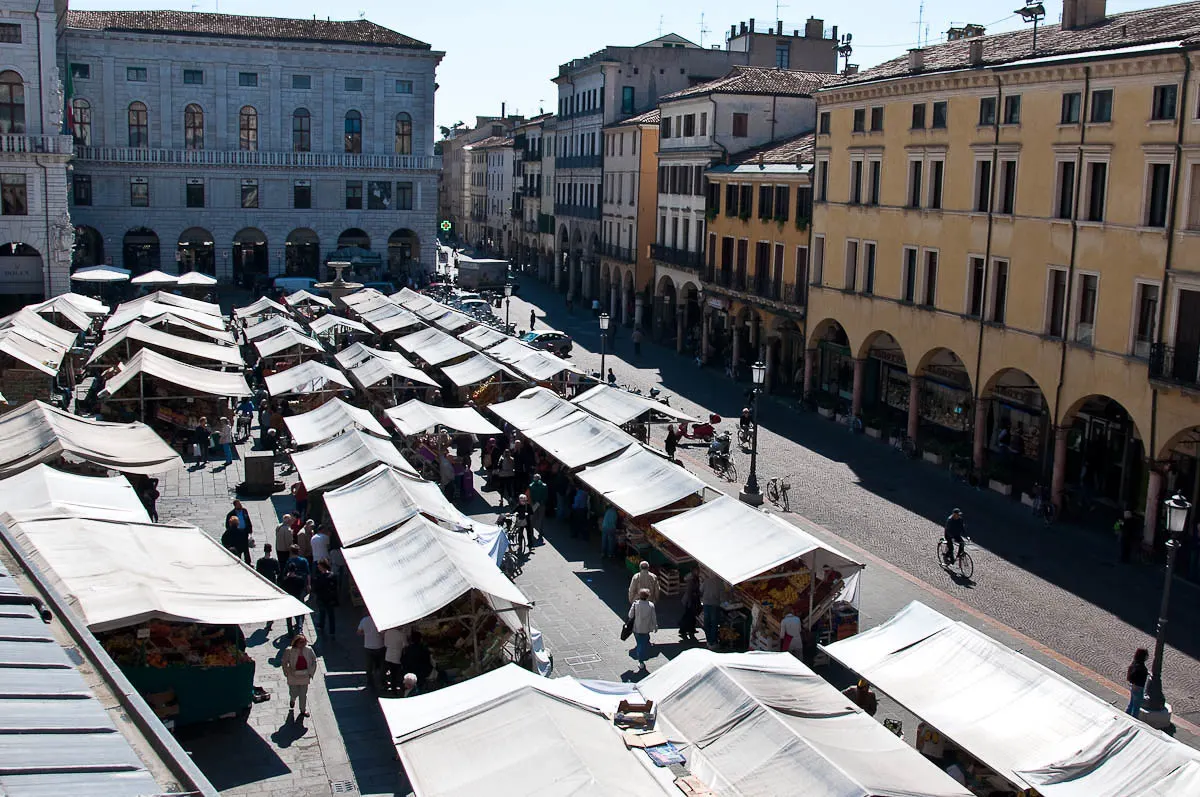
Thankfully, nowadays the vibe there is completely different.
More Information:
- 10 Reasons to Stay in Padua during Your Italy Holidays
- Padua, Italy – 89 Reasons to Visit the City of the Saint
4. Piazza delle Erbe, Verona

Looking back, my very first proper experience with an Italian square was at Piazza delle Erbe in Verona. It was back in 2007 (so long ago now!) and I was in Verona for the day as part of a two-week coach holiday across the south of Europe.
So, what did I do once the tour guide gave us a couple of hours of free time after his long speech about Verona’s sights was finally over?! Well, as every self-respecting tourist, I saw Juliet’s House and then I sat at an outside table at Piazza delle Erbe and ate a large gelato.
I watched the pigeons stealing crumbs between the tables, the stallholders at the adjacent knick-knacks market, the tourists wandering up and down the square, and then I admired for a bit the majestic facade of Palazzo Maffei. It was hot, really hot, in spite of it being the end of September. The waiters were chatting standing at the doors of the many restaurants and cafes that line Piazza delle Erbe. And it all felt so relaxed, so carefree. A spontaneous moment of true happiness.

Since then, I have had the chance to return to Piazza delle Erbe in Verona several times. And each time I rediscover its beauty with new eyes and a happy heart.
Piazza delle Erbe – Verona’s charming central public space – is the city’s most ancient square. It stands right where Verona’s Roman Forum once stood. The piazza is surrounded by beautiful historical buildings and serves as the stage of a daily market selling souvenirs, clothes, and knick-knacks.
A lively market has been held at Piazza delle Erbe since Roman times. During the Middle Ages, spices (in Italian erbe) were some of the most sought-after goods and soon the square became known as Piazza delle Erbe in recognition of the large number of spice merchants selling their wares on it.

Piazza delle Erbe is a lively place where many of Verona’s main streets converge and where the flow of people is constant from dawn till dusk. Up and down the square you will find many bars and restaurants. Grab a gelato during the day or an aperitivo in the early evening and indulge in a spot of people-watching.

Then dedicate some time to the most important sights to see and photograph at and around Piazza delle Erbe in Verona.

For example, the Baroque Palazzo Maffei, the Venetian sculpture of St. Mark’s Lion, the frescoed Mazzanti Houses, and the Madonna Verona fountain to mention but a few of all the beautiful buildings and sights that can be seen there.
More Information:
- 20 Best Things to Do and See in Verona, Italy in One Day – The Ultimate Itinerary with Photos and Tips
- The Intriguing Story of Madonna Verona Fountain – The Symbol of Verona
5. Piazza San Marco, Venice
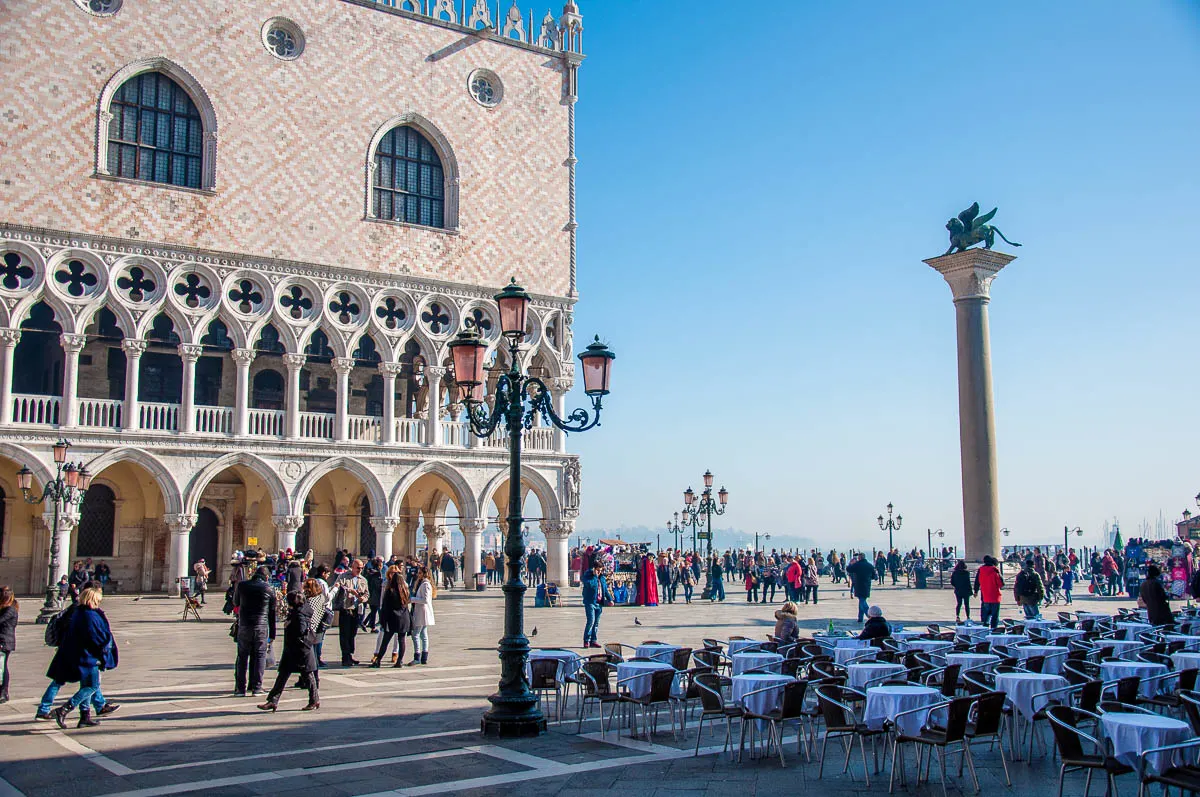
What can I say?!
This is one of the most famous Italian piazzas in the world. It is a place that is monumental in size and yet so elegant that Napoleon declared it ‘the most beautiful drawing room in Europe’.
Truly majestic, Venice’s St. Mark’s Square attracts millions of visitors each year and yet it has dozens of secret corners that few manage to uncover.
Unfortunately, St. Mark’s Square is also one of the most endangered places in the world due to natural forces and overtourism.
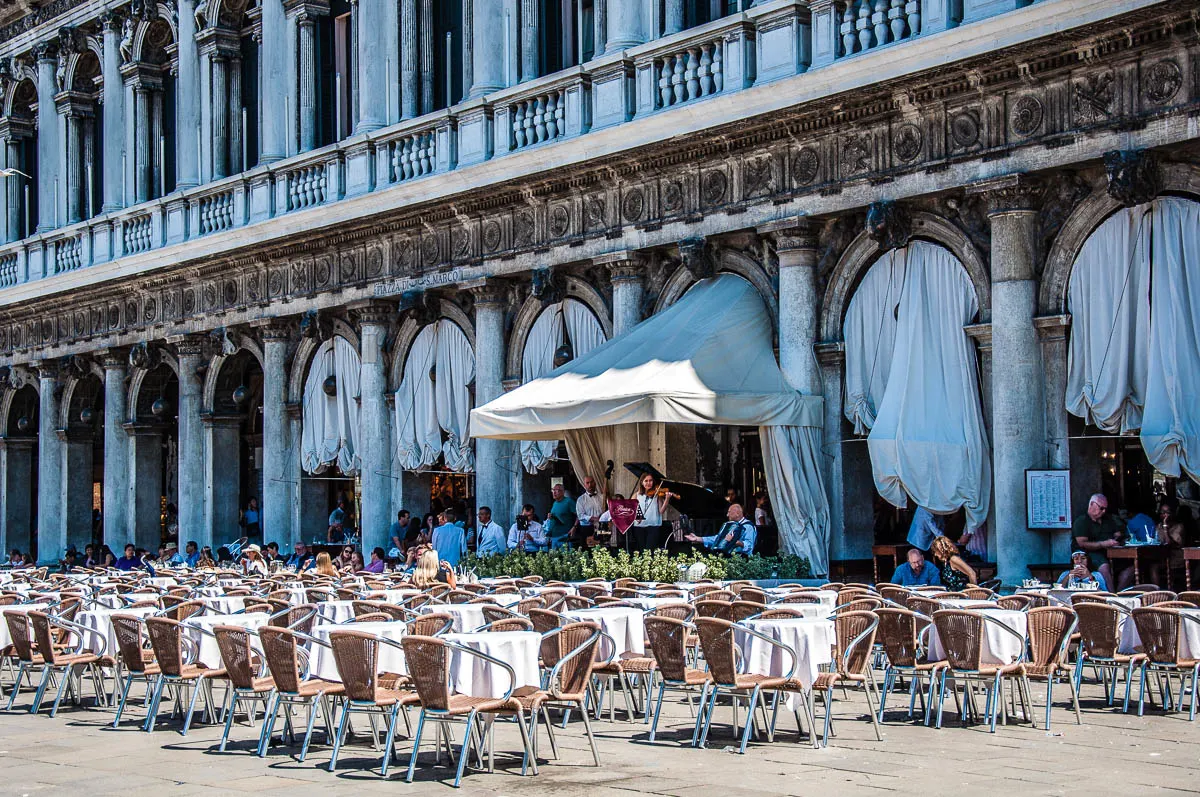
The piazza turns into a sea of either people or water on several days throughout the year.
For example, during the Venetian Carnival when thousands of people descend on St. Mark’s Square to watch such iconic events like the Flight of the Angel.
Not to mention the devasting episodes of acqua alta when this famous Italian piazza becomes something akin to a cold swimming pool where no-one with a heart and appreciation of Venice should go to have a dip.
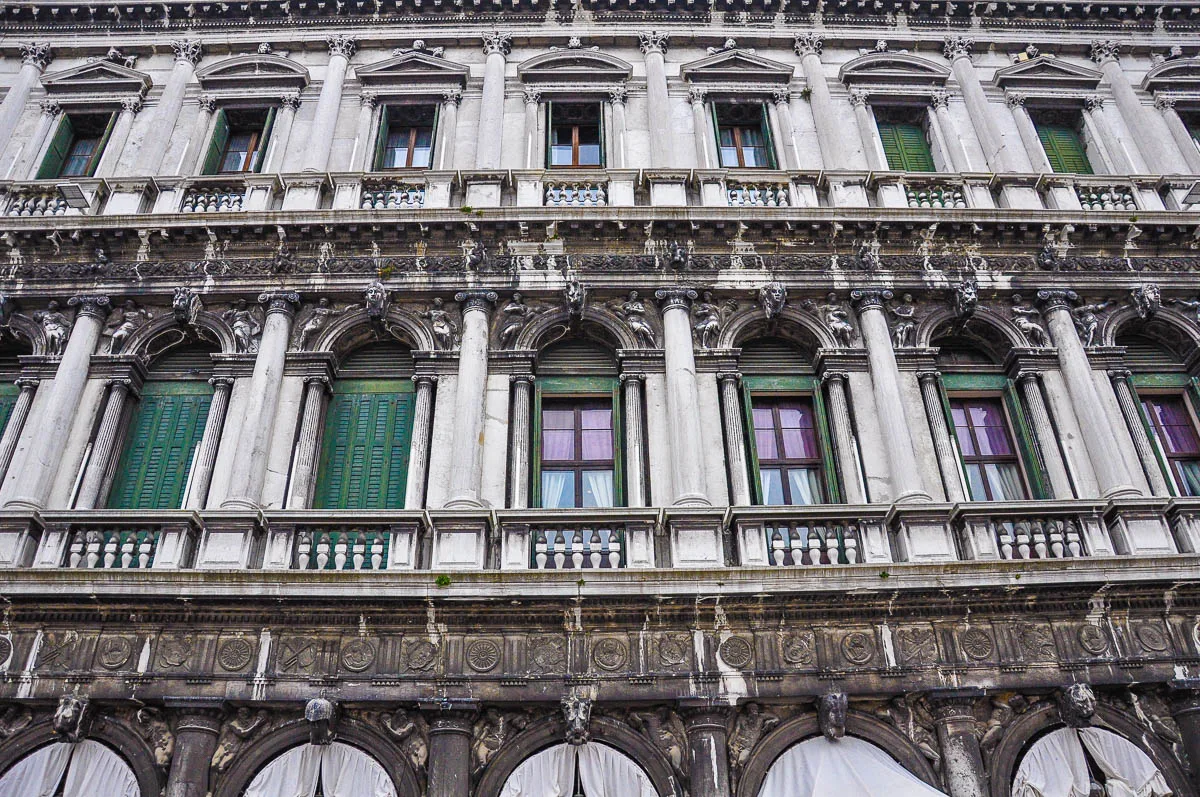
St. Mark’s Square is surrounded on three sides by the imposing buildings of the Procuratie Vecchie and Nuove.
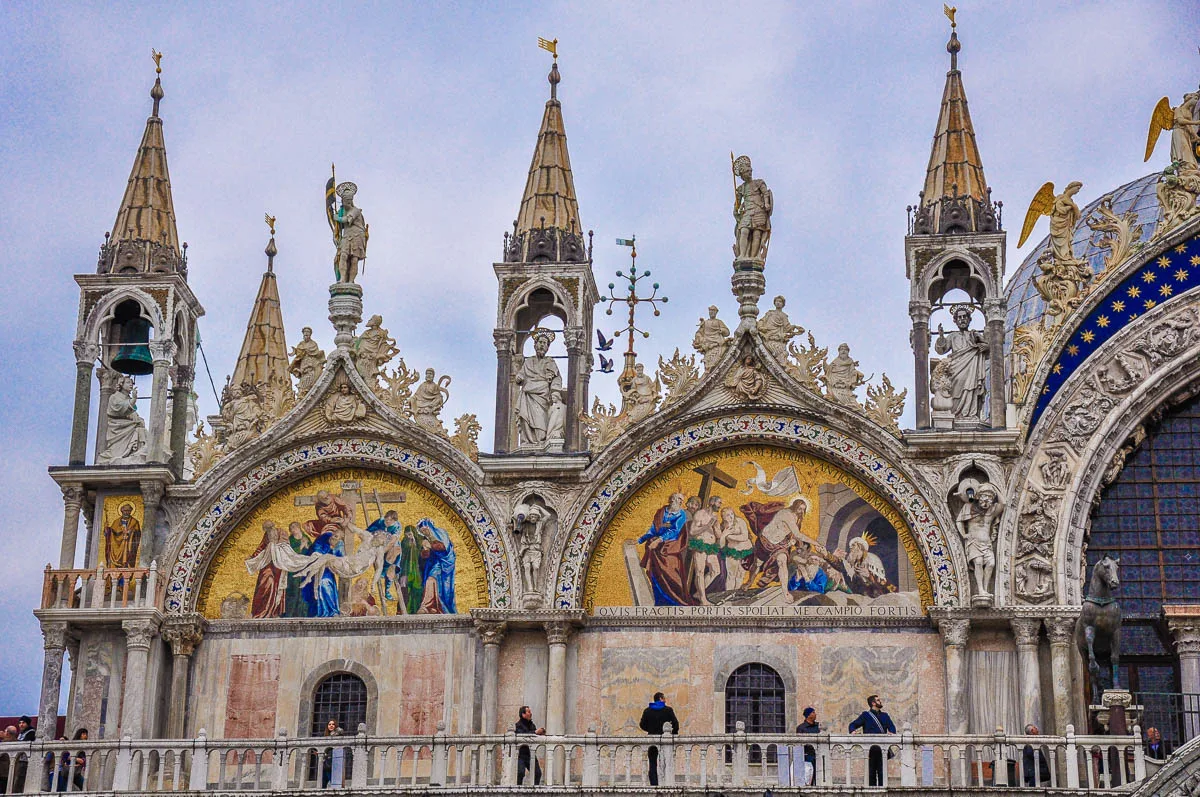
Covered in marbles and elaborate mosaics, St. Mark’s Basilica glistens in the sun on the fourth side of the piazza.
It is at this point that an offshoot square, known as Piazzetta San Marco, stretches forward towards the water.
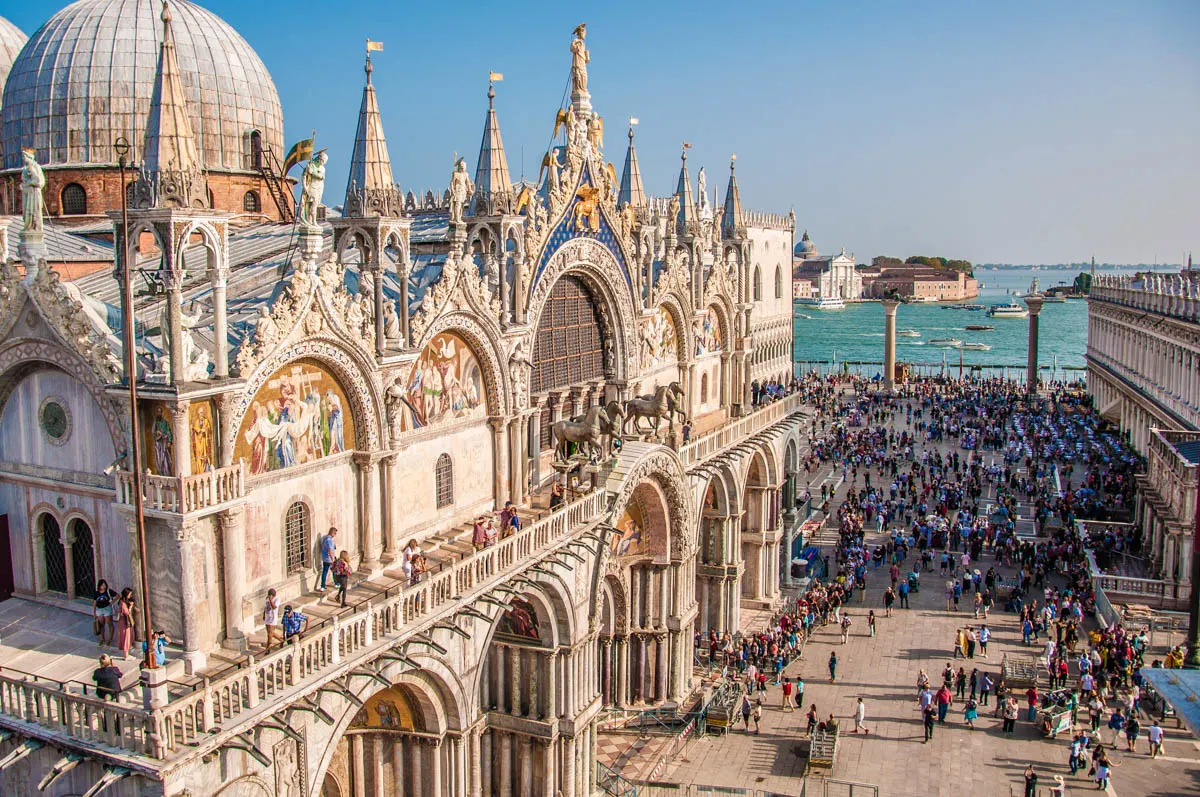
Together St. Mark’s Square and the piazzetta form an upturned L. Along the L’s short stroke stand the Doge’s Palace on one side and the National Marciana Library on the other. Between them are Venice’s iconic pillars – one topped by St. Mark’s Lion and the other by San Teodoro, Venice’s first patron, with a statue of a crocodile to represent the dragon slain by the saint.
Then, beyond the pillars is St. Mark’s Basin – a blue expanse that it’s like a natural continuation of St. Mark’s Square and the Piazzetta San Marco.

All of this beauty is best enjoyed from the top of St. Mark’s Bell Tower or St. Mark’s Clock Tower. The bird’s-eye views of St. Mark’s Square stay in your heart forever.
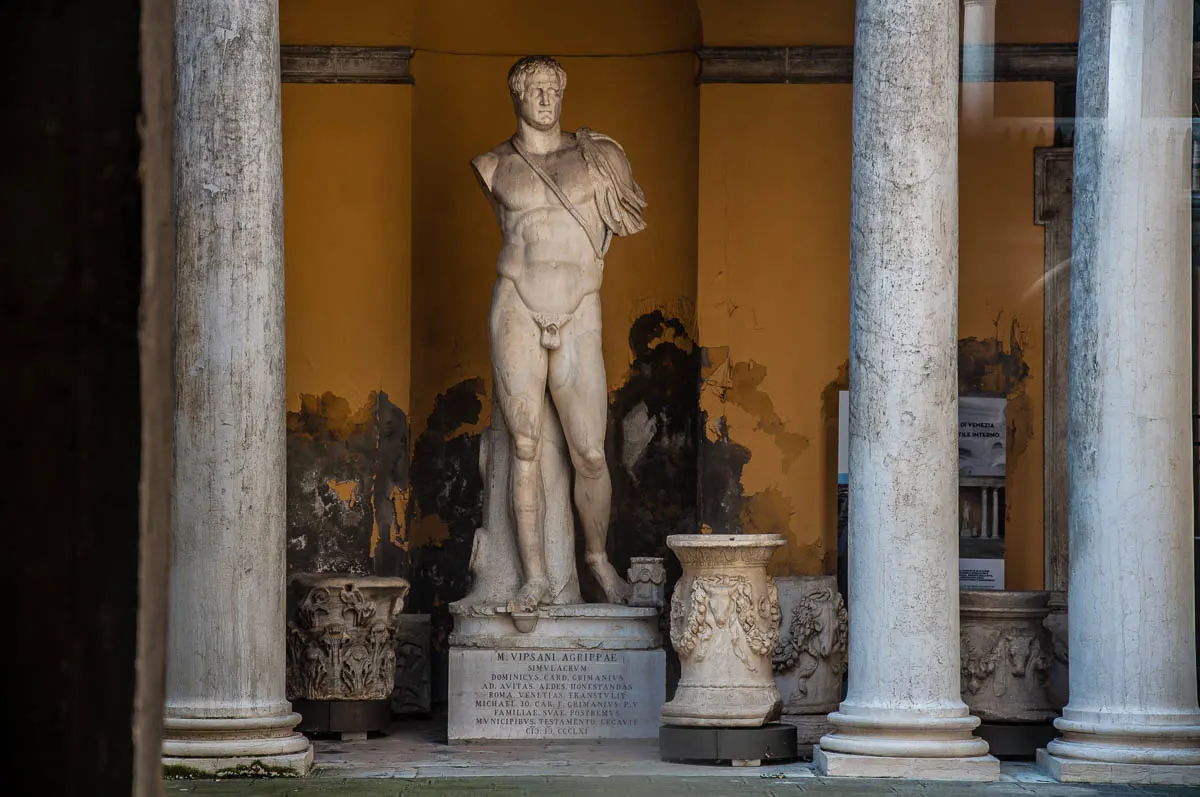
Walking around St. Mark’s Square, visiting one by one the wonderful sights that surround it and exploring the many treasures, the museums, the hidden corners, the St. Mark’s Basilica and the Doge’s Palace has been one of the biggest pleasures and privileges of my life in Italy so far.
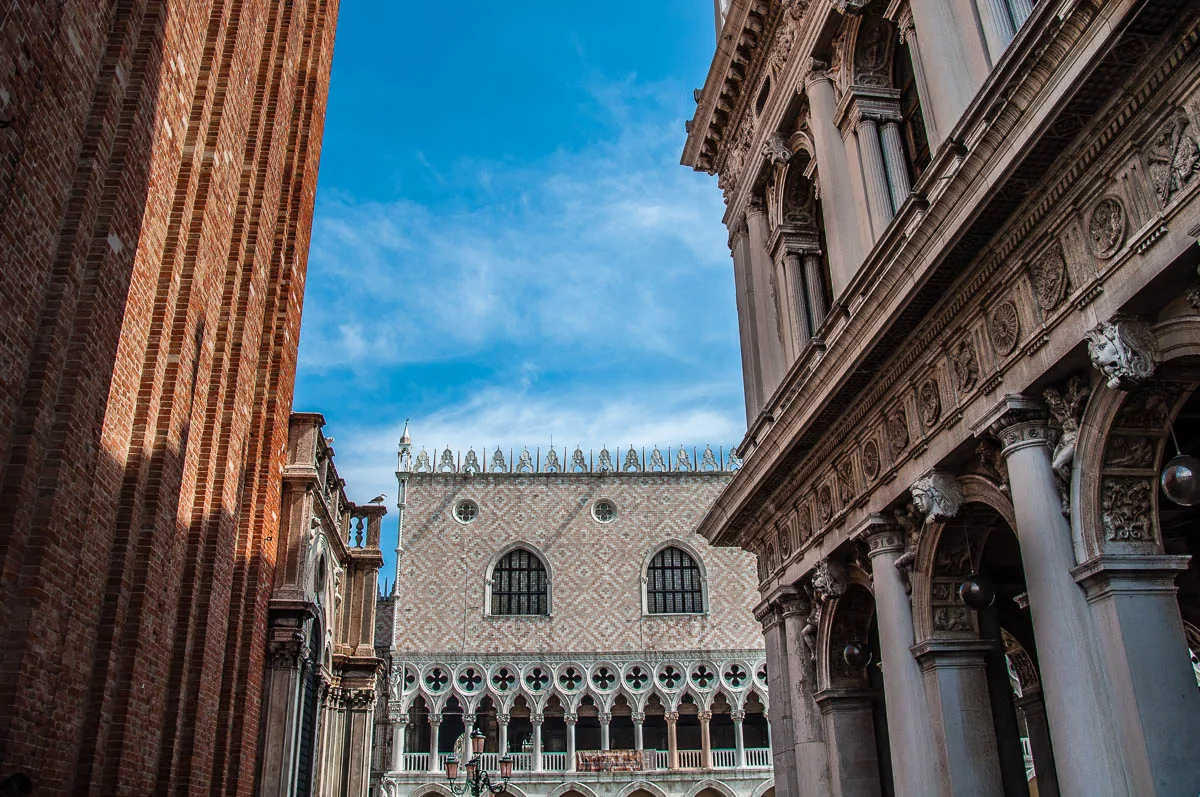
Curiously enough, St. Mark’s Square is the only piazza in Venice. All other squares in town – small and big ones – are known as campi.
Campo means field in English and up to a couple of centuries ago, this is exactly what the open spaces between the houses and palaces of Venice used to be – arable land where orchards grew, animals grazed, and even people were buried at the end of their days.
Nowadays, Venice’s former urban fields are paved but continue being known as campi. Hence, only one Venetian piazza features in this list – the truly majestic and one of a kind St. Mark’s Square.
More Information:
6. Piazza dei Signori, Verona

Let’s go back to Verona for another gem of an Italian piazza.
Called Piazza dei Signori, you will find it right next to the lively Piazza delle Erbe (see point 4 above). Narrow passages link the two. Together they form the beating heart of Verona.

Beautiful historical buildings surround Piazza dei Signori. Right in the middle of it stands a statue of Dante. The greatest Italian poet that has ever lived, spent several years of his life in Verona. He even wrote Paradise from his Divine Comedy here whilst enjoying the patronage of the Scaligeri – a medieval dynasty that ruled the city.

The Palazzi Scaligeri – the former palace of the dynasty – flanks Piazza dei Signori and nowadays serves as the seat of the Province of Verona. The Scaligeri’s monumental tombs are a few steps away from the palace and just off the square.

Two other important historic buildings to admire at Piazza dei Signori in Verona are the 12th-century Palazzo della Comune and the Renaissance Loggia del Consiglio.
Keep an eye out for the so-called Lion Mouths. Called bocche di leone in Italian, these are small openings in the facade of the Palazzo della Comune where the citizens of Verona could post anonymous complaints and information about people breaking the laws like selling silk while evading the Venetian monopoly on the trade.
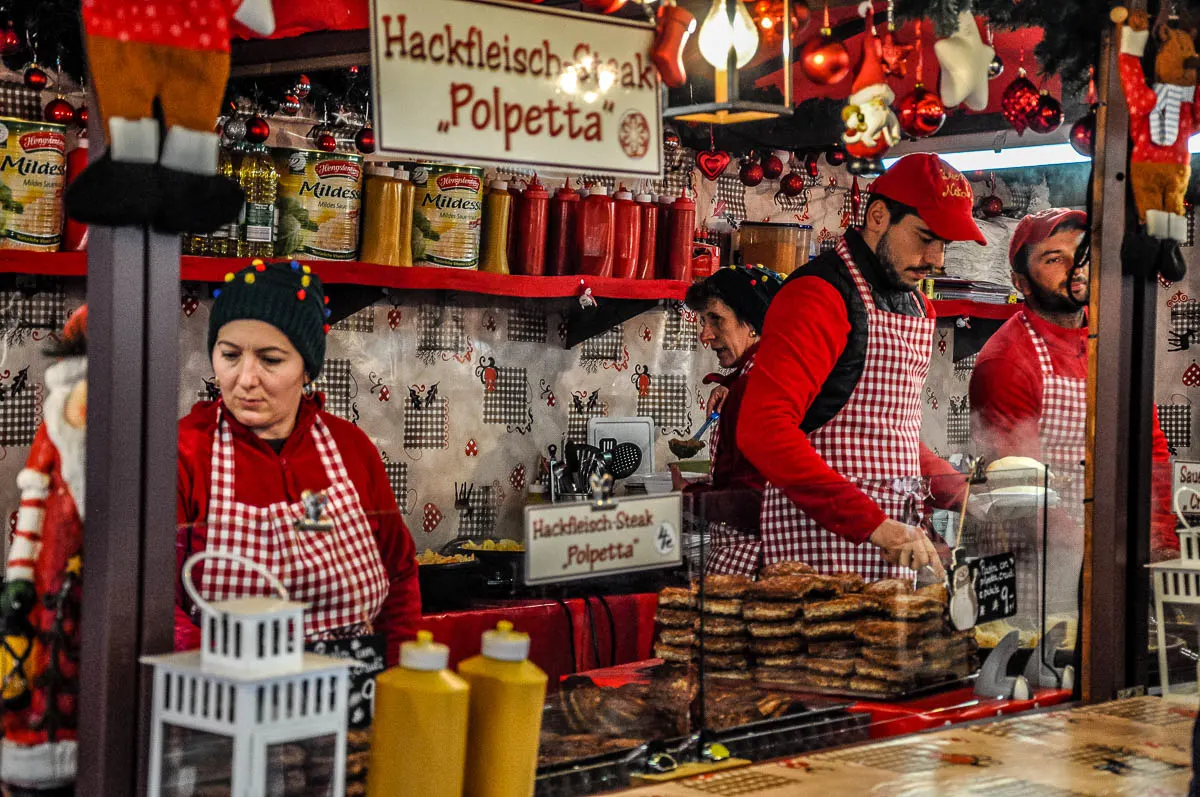
Verona’s Piazza dei Signori is very pretty and also a very lively, sociable place to see for yourself. All throughout the year, the square hosts many events. From a large Christmas market in winter to a wine festival in autumn, make sure that you stop here during your visit to the city to see what’s on.
I particularly love the Christmas market here. With a great selection of food and crafts, it’s a favourite place for me to stock on Christmas presents. Every year, as soon as the market opens, I make sure that I visit it at least once for some festive cheer, a bit of shopping, and a portion of German sausages and sauerkraut.
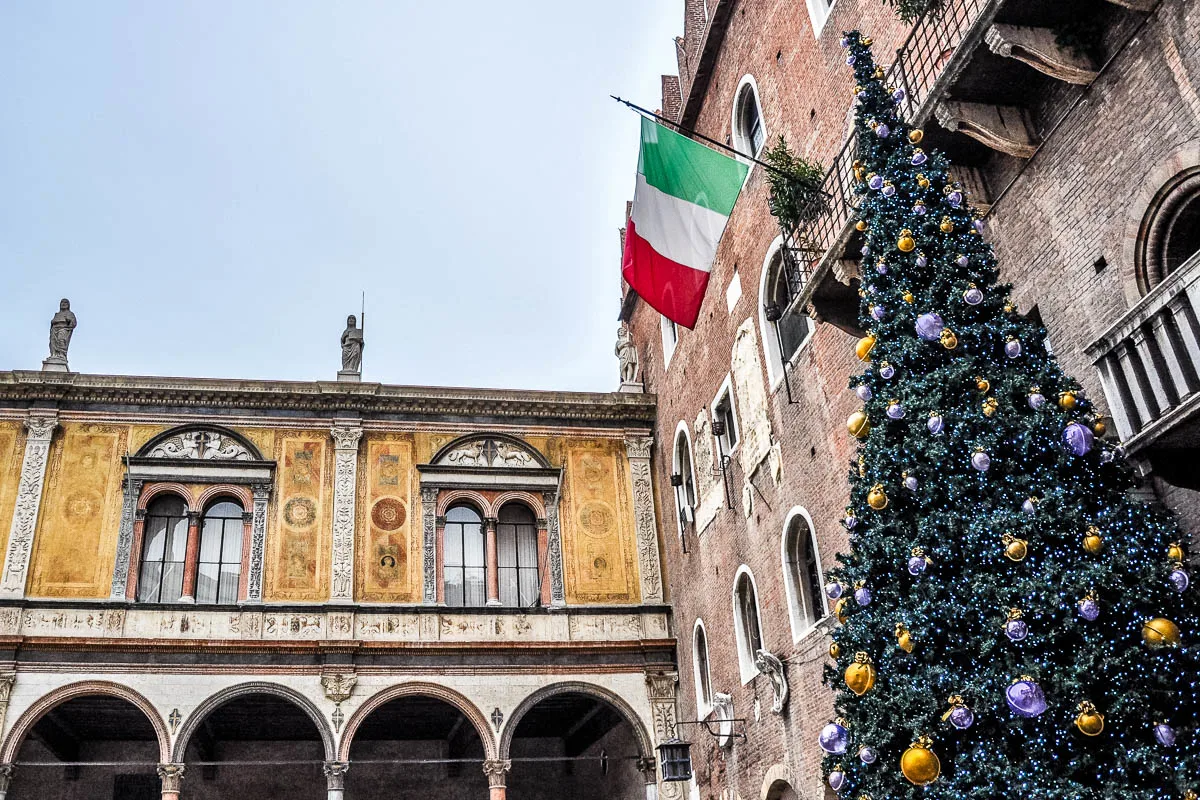
And, then, let’s not forget that Verona is the City of Love. So, for St. Valentine’s the stalls of the festive market at Piazza dei Signori here are arranged in a heart shape. You can enjoy the full effect from the top of the Torre Lamberti – the 84-metre tall tower that dates back to the 12th century and the entrance of which is just off this beautiful Italian square.
More Information:
7. Piazza Castello (also known as Piazza degli Scacchi), Marostica
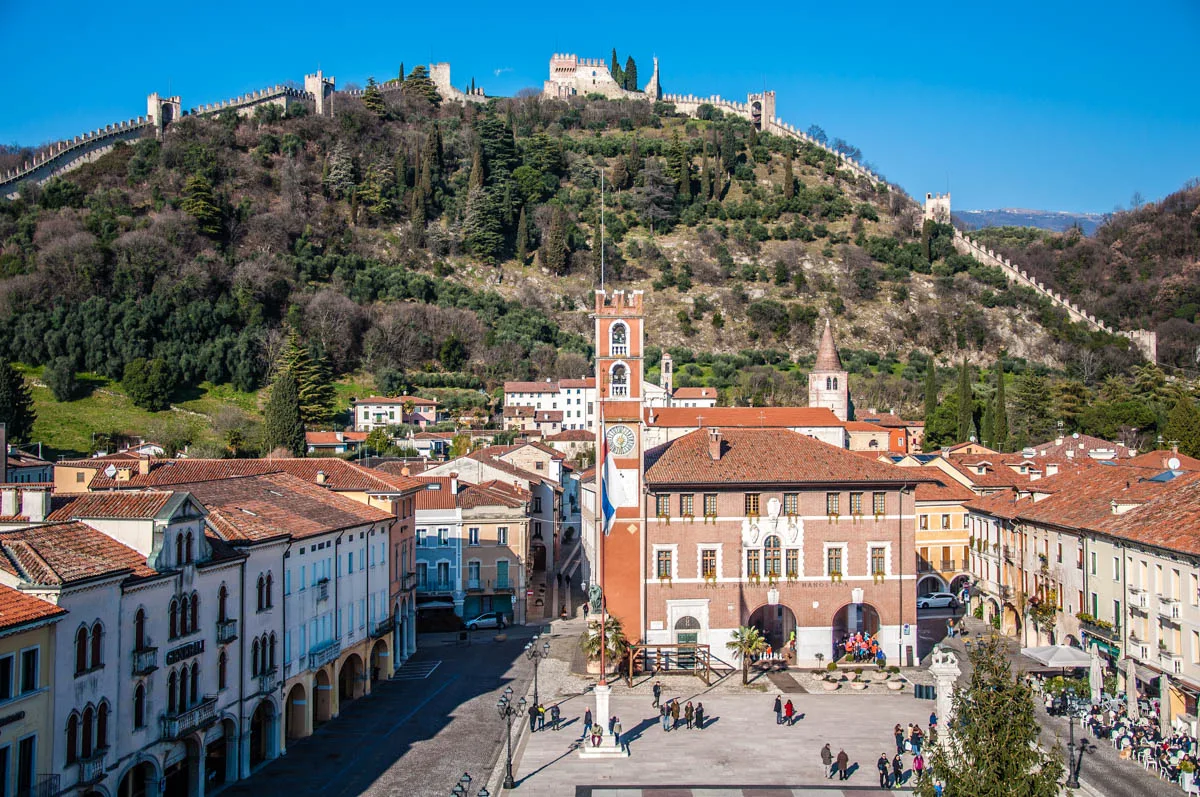
Marostica is one of the Veneto’s most charming medieval walled towns. Huddled at the bottom of a steep hill, it is surrounded by a mighty defensive wall which then climbs all the way to the hilltop thus enclosing the town in an impenetrable defensive ring.
Two castles – the Lower and the Upper one – are slotted in the defensive wall. While the Upper Castle is in ruins and hosts a restaurant, the Lower Castle still stands in its entirety and houses a very interesting museum. Right in front of the Lower Castle, you will see the town’s sprawling main square. It’s called Piazza Castello and, curiously enough, it has a huge chessboard pattern in its centre.
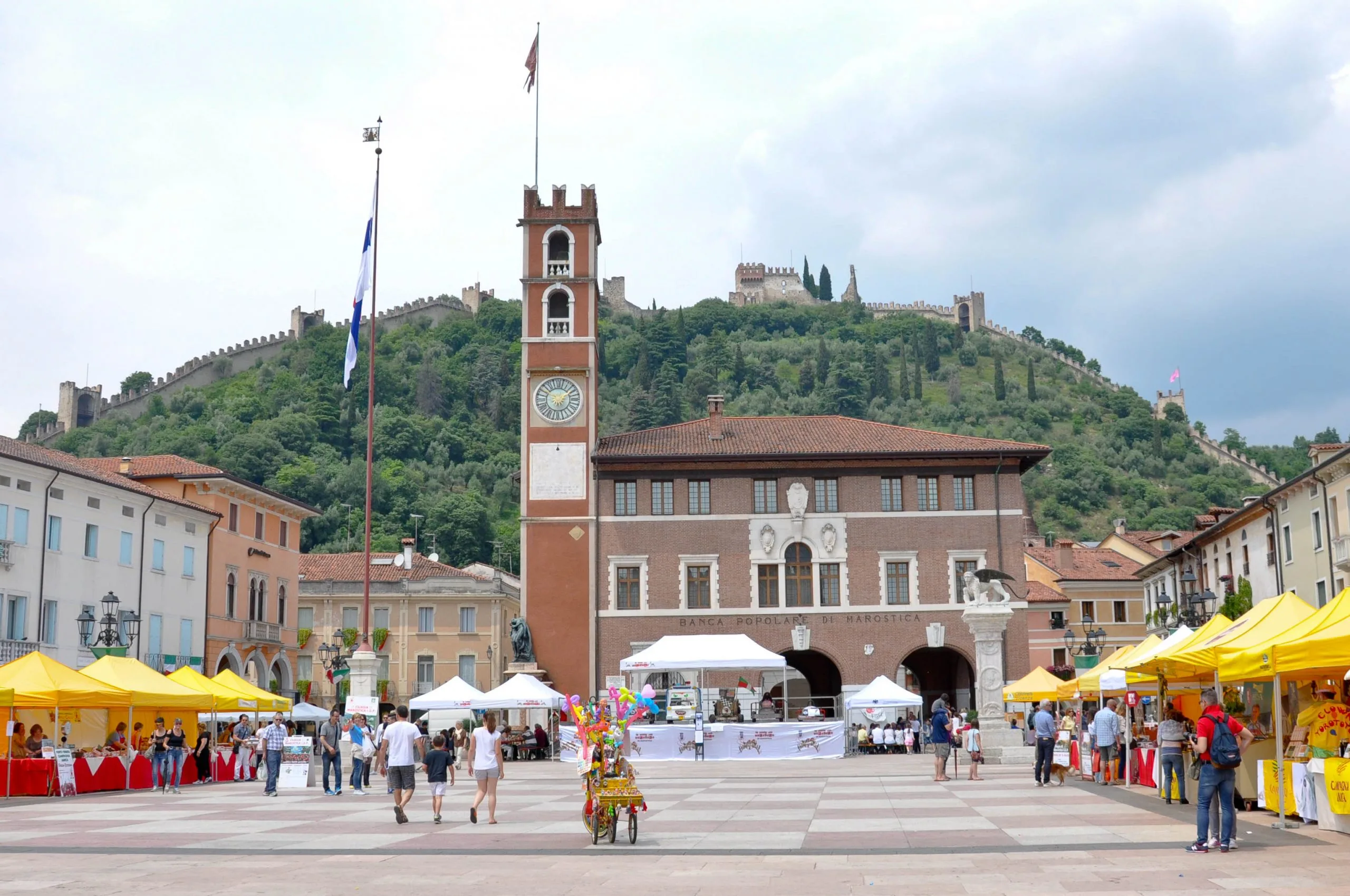
I really love Marostica and over the last six years, I have taken every opportunity to go there – for a day trip or even for a couple of hours. The town is beautiful and very atmospheric. It hosts many festivals all throughout the year and the local cherries are particularly famous.
I love how the whole town of Marostica comes together to celebrate a special event. People flock to the main square where bands play live music into the night, shops arrange thematic window displays, kids run around and families enjoy dinner and gelato in the many traditional restaurants that line Piazza Castello.
The most curious thing about Marostica though is the legend about the chess game that apparently took place here in 1454. This is when two noblemen battled it out for the hand in marriage of a beautiful princess. Instead of using swords and spears, they played a chess game. A very civilised way to solve conflicts, if you ask me! You can read the whole legend here.
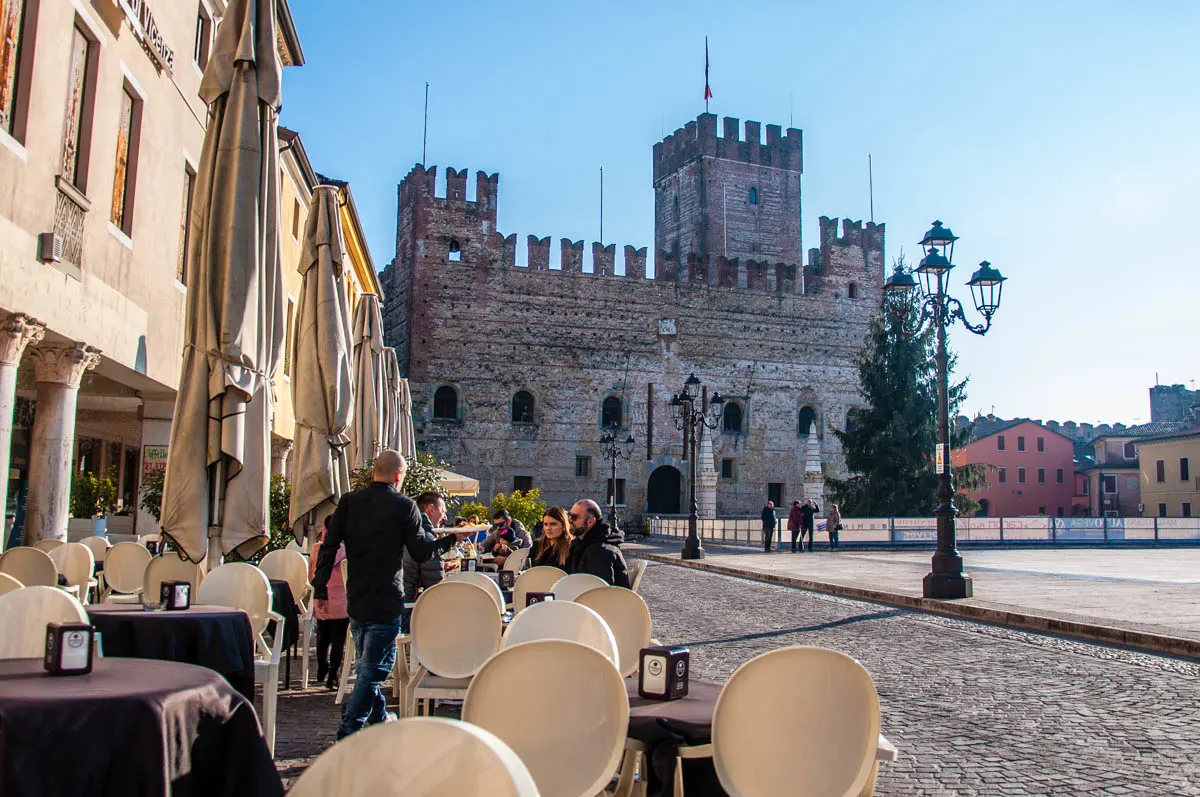
Over the last few decades, Marostica has been celebrating this local legend and the town’s connection to the noble game of chess by staging every other September a huge chess game with actors drawn from the local community.
Wearing lavish period costumes, they recreate the legendary chess game on Marostica’s chessboard-patterned Piazza Castello. It is a big show with dozens of performers and even horses. A spectacular fireworks display marks the grand finale.
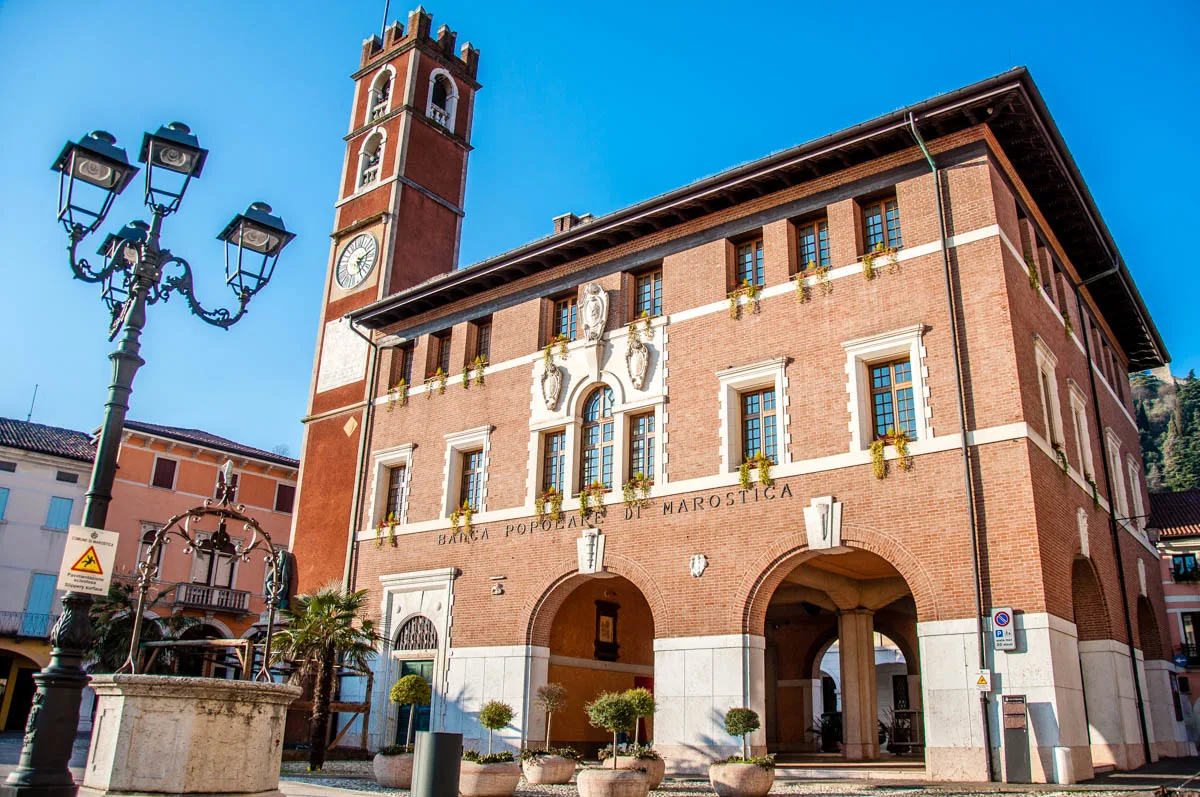
If you visit Marostica outside of the live chess season, you can still see the chessboard square which is surrounded by great restaurants and cafes. You can also admire the costumes that the participants wear as they are part of the permanent museum exhibition in the Lower Castle.
Above all, you can play your own game of chess on the two smaller chessboards in the portico of the Banca Popolare di Marostica which overlooks Piazza Castello.
More Information:
8. Piazza della Pieve, San Giorgio di Valpolicella
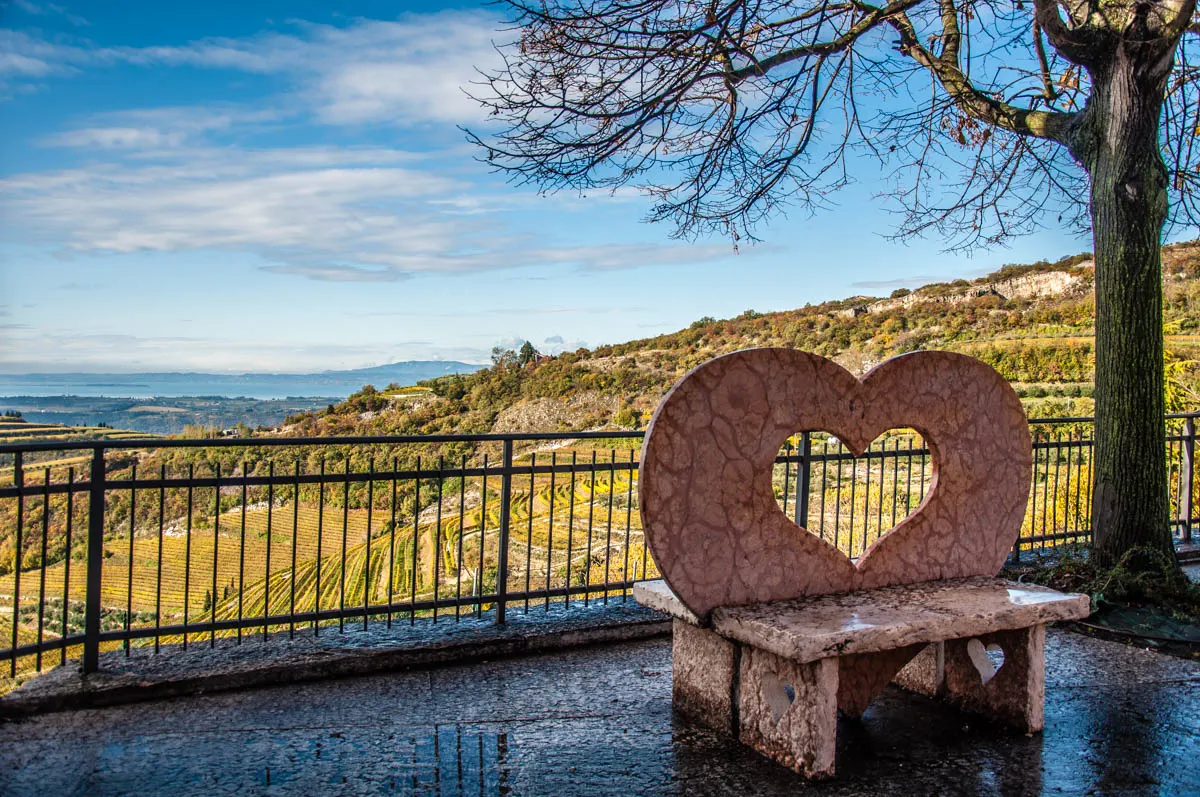
San Giorgio di Valpolicella is the prettiest Italian village you may have never heard of. Huddled on a hilltop near Verona, it enjoys spectacular views over the surrounding Lessinia Hills all the way to Italy’s largest lake – Lago di Garda.
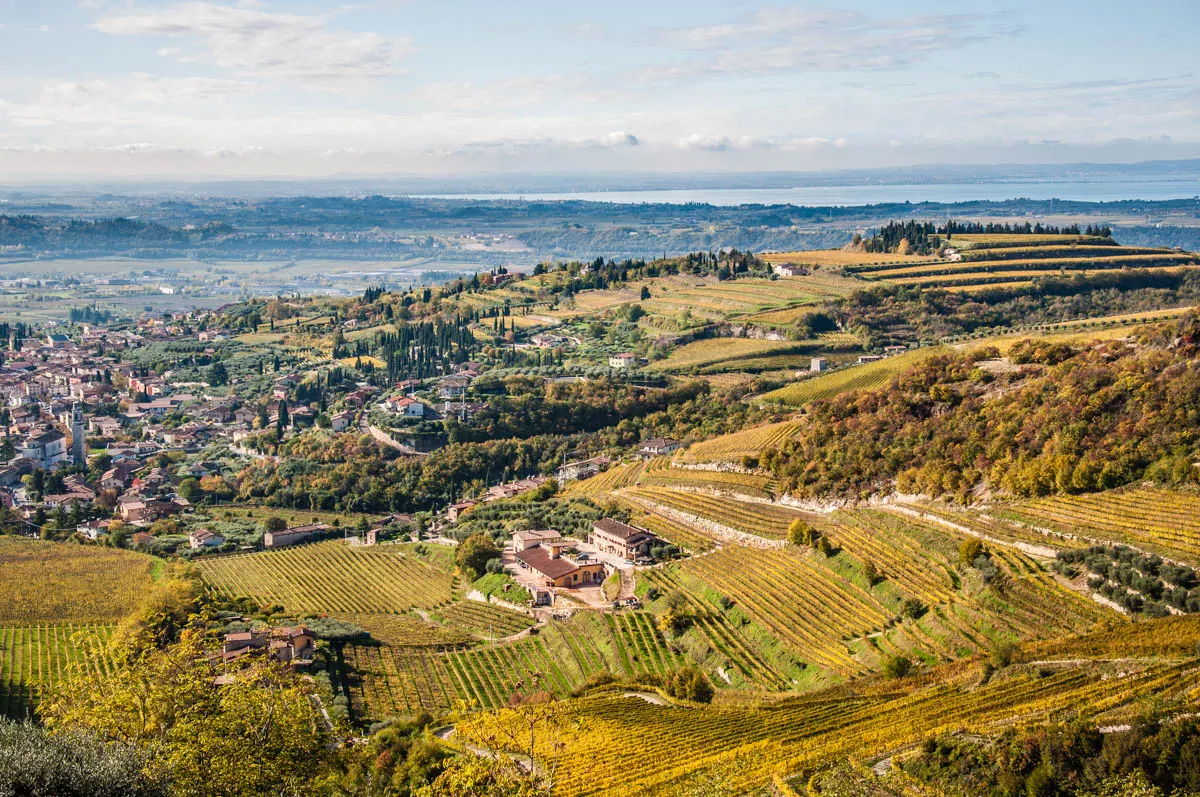
The village is tiny but it has a large square. It is like a huge terrace which hangs over the hillside vineyards. It’s so lovely sitting on the benches there and just looking at all the beauty all the way to the horizon.
The blue waters of Lake Garda glisten in the distance. The leaves of vines and shrubs go woosh-woosh-woosh in the breeze. You pretty much feel on top of the world.
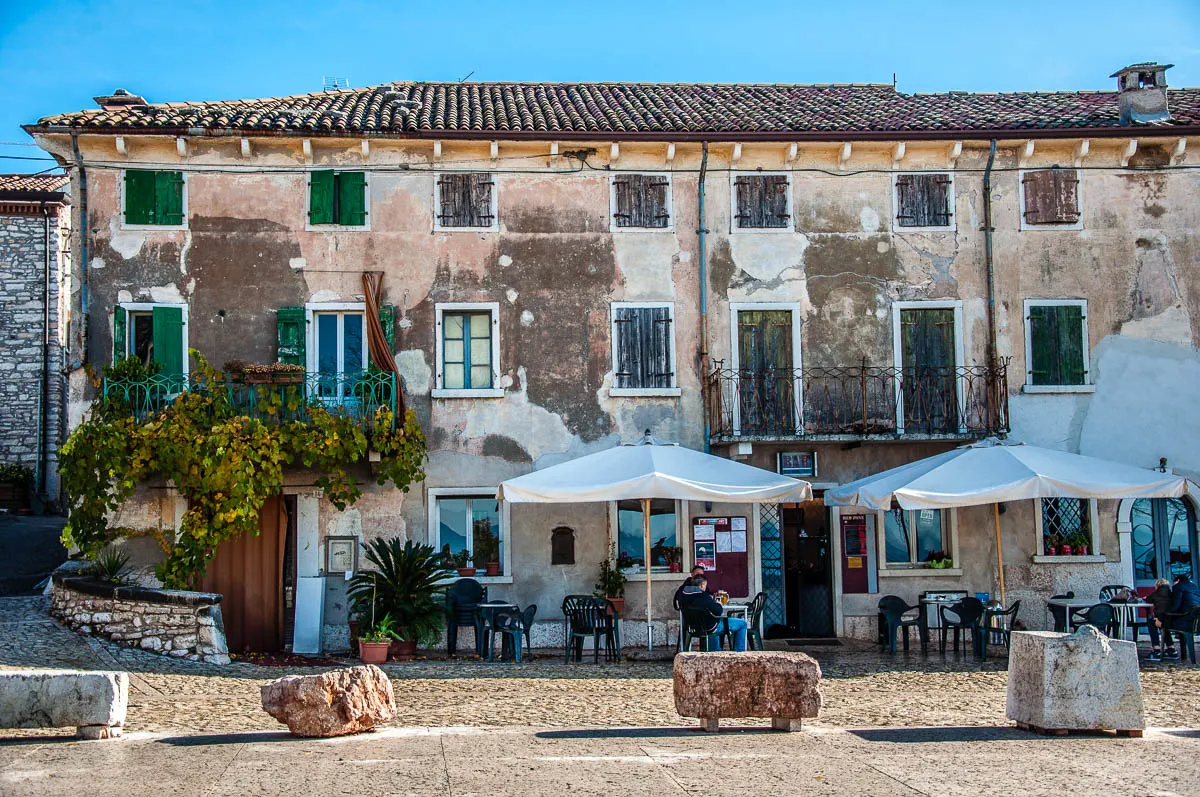
The square is called Piazza della Pieve as just a step or two off it stands a stone rural church – a pieve as this type of churches are known in Italian.
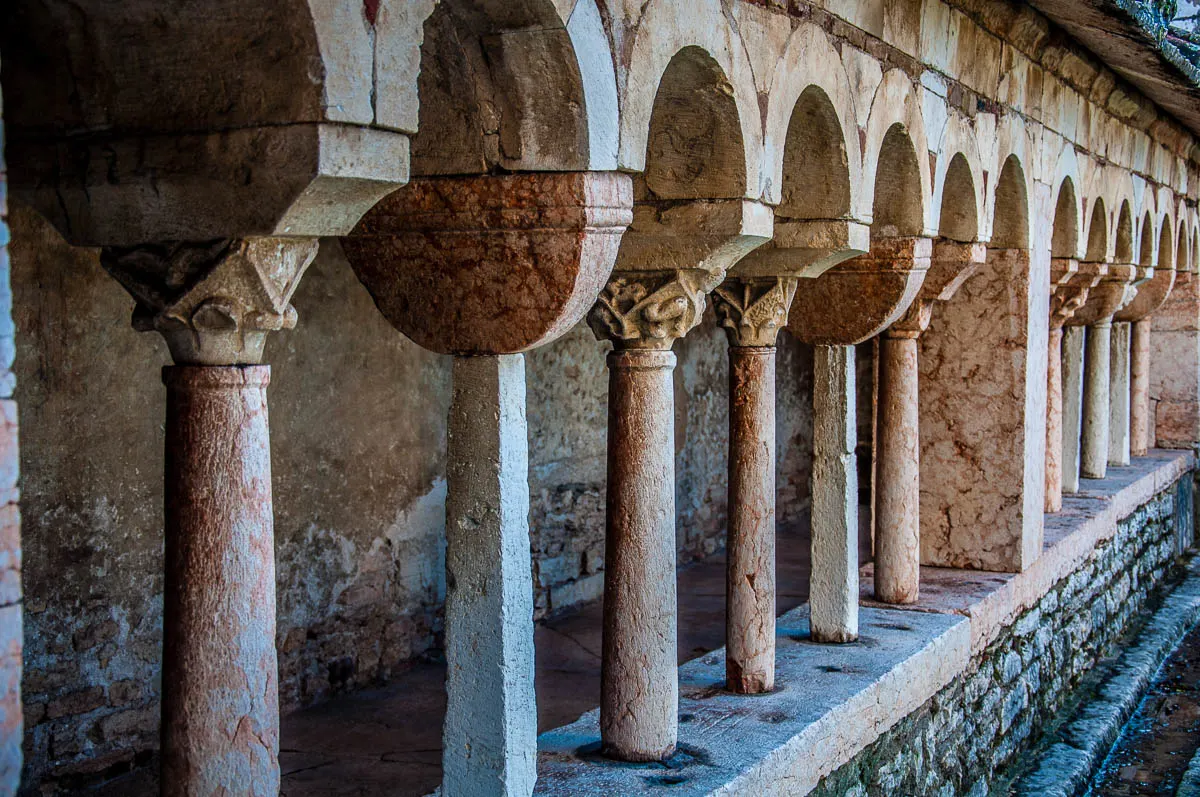
The church is ancient and built in the Romanesque style. I particularly love the small cloister attached to it at the back. It’s a lovely place to see. And so, so peaceful!
More Information:
9. Piazza della Liberta’ and Piazza Garibaldi, Bassano del Grappa
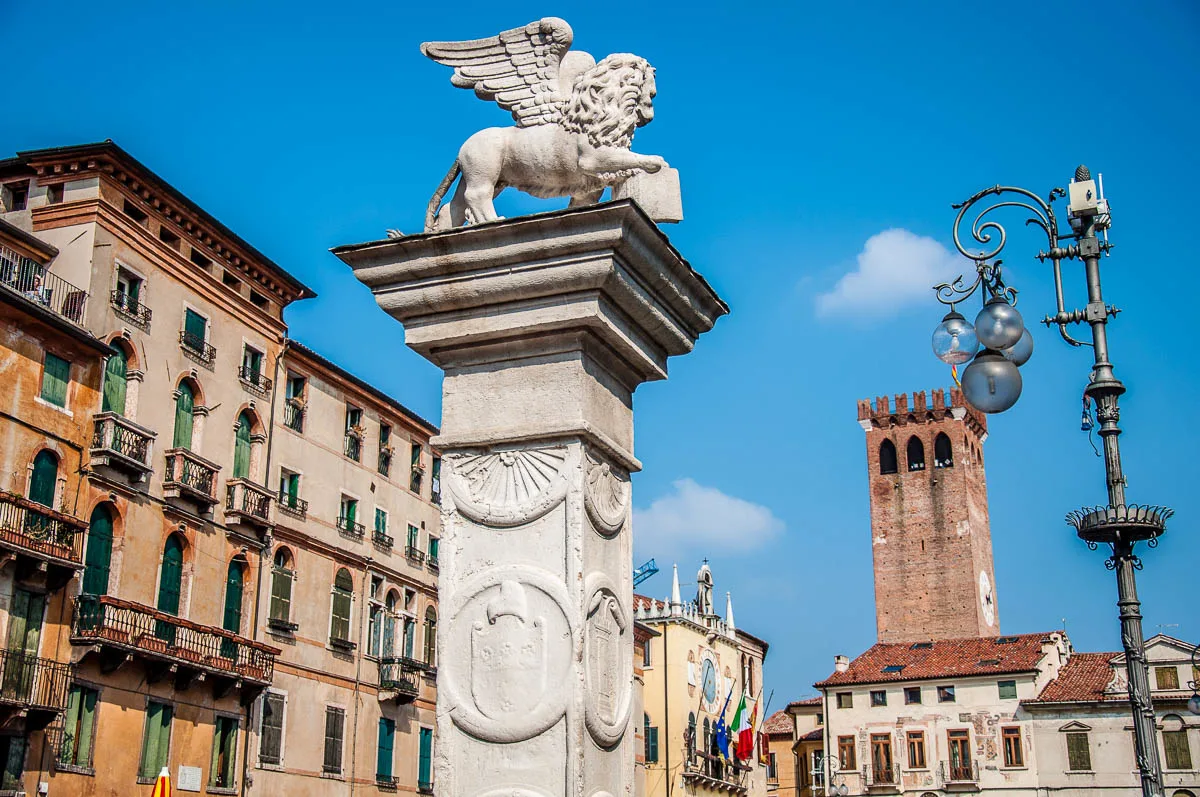
Some of the most beautiful piazzas in the Veneto are right one next to another. This is just the case with Piazza della Liberta’ and Piazza Garibaldi in the charming city of Bassano del Grappa.
Bassano del Grappa has so much to offer to the curious traveller yet it is often overlooked in favour of the nearby tourist magnet of Venice. Still, if you make an effort to go out of most tourists’ comfort zone, Bassano del Grappa will reward you with unforgettable sights and views. Not least, its two lively main squares – one with cobbles and one covered with stone slabs, both surrounded by historic buildings and palaces with frescoed and ornamented facades.
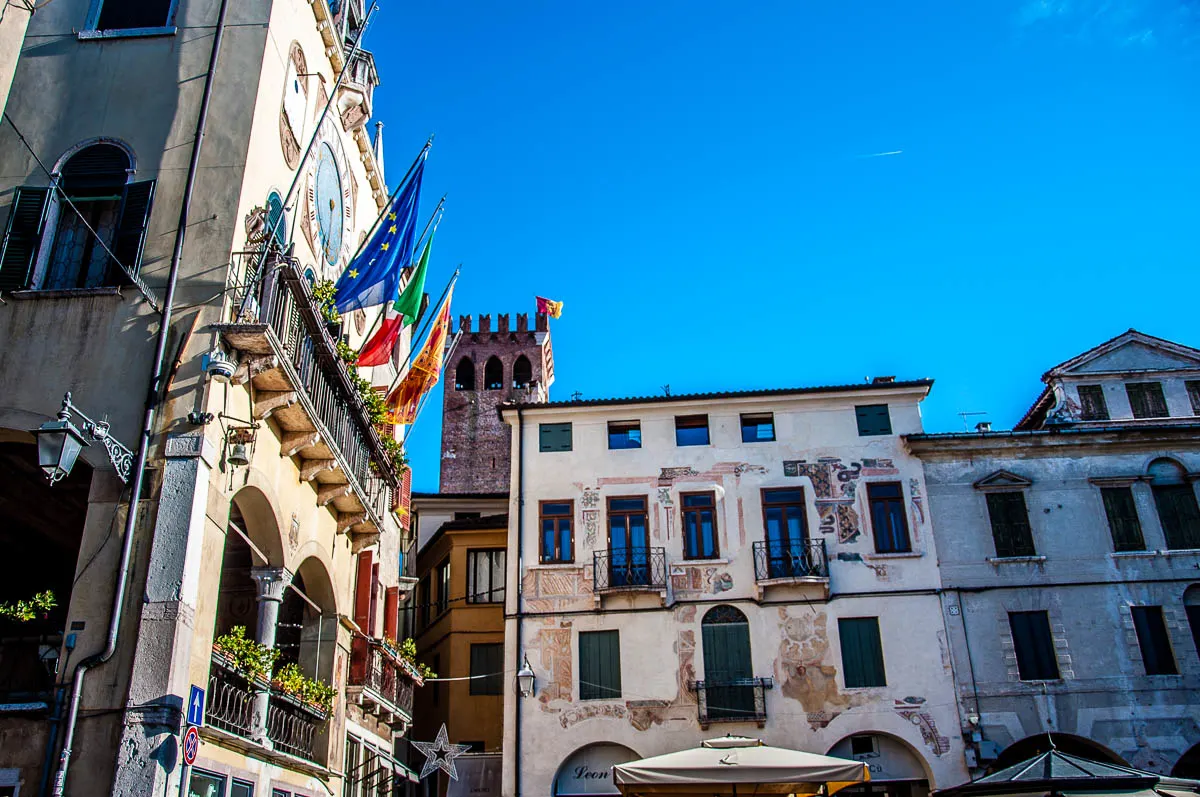
In my time here in Italy, I have enjoyed many special moments in Bassano del Grappa. This is the place in the Veneto that keeps on giving for me. Every time that we head there, we encounter a new event in the course of happening.
It could be a weekly market, a children’s festival, a folk representation, or, as it happened on a memorable occasion once, a city-wide celebration of Befana – the long-nosed old lady who brings presents to the good Italian children on Epiphany Eve. The latter included a marching band performing with gusto ‘I am freak… I am super freak!’ while all the musicians were wearing long Befana noses on their faces.
The focal point of all these celebrations and fun are always Bassano del Grappa’s two main squares – Piazza della Liberta’ and Piazza Garibaldi.
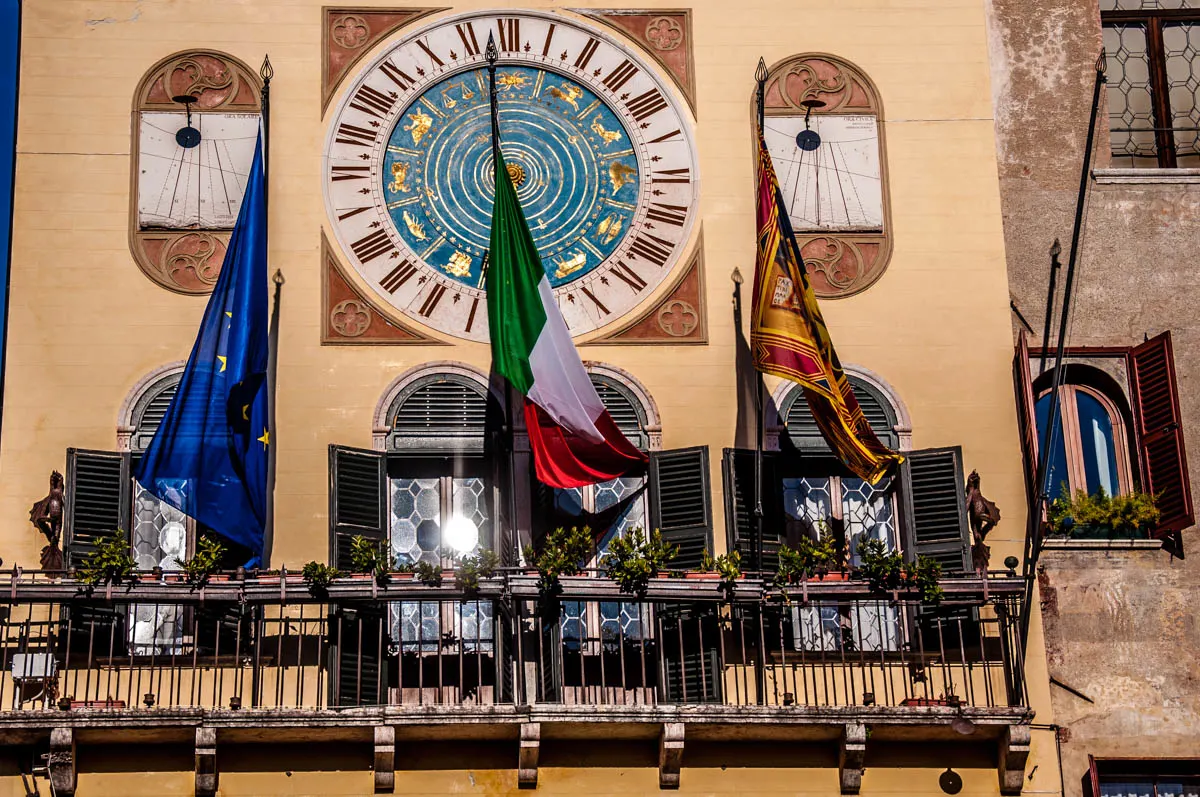
At Piazza della Liberta’ don’t miss the 15th-century Loggia del Comune with the splendid astronomical clock on its facade. You can go up the steps and walk inside the loggia free of charge for a great view of the square below.
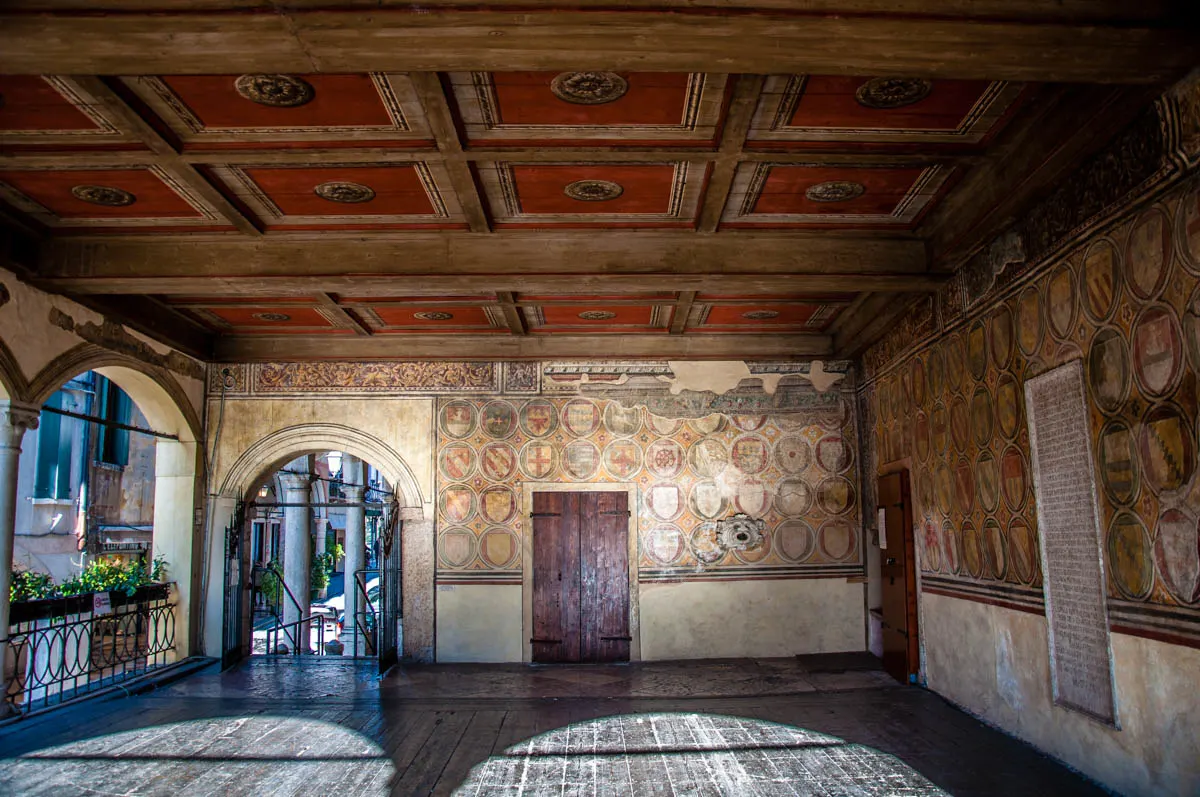
Piazza Garibaldi is also known as Piazza delle Erbe and Piazza della Fontana on account of hosting for centuries a fresh produce market and having the splendid 19th-century Bonaguro Fountain as its focal point.
The large Church of San Francesco flanks this square and just beyond it, you will find the impressive Civic Museum which is housed in a former Franciscan monastery with a peaceful cloister.
10. Piazza Maggiore, Feltre
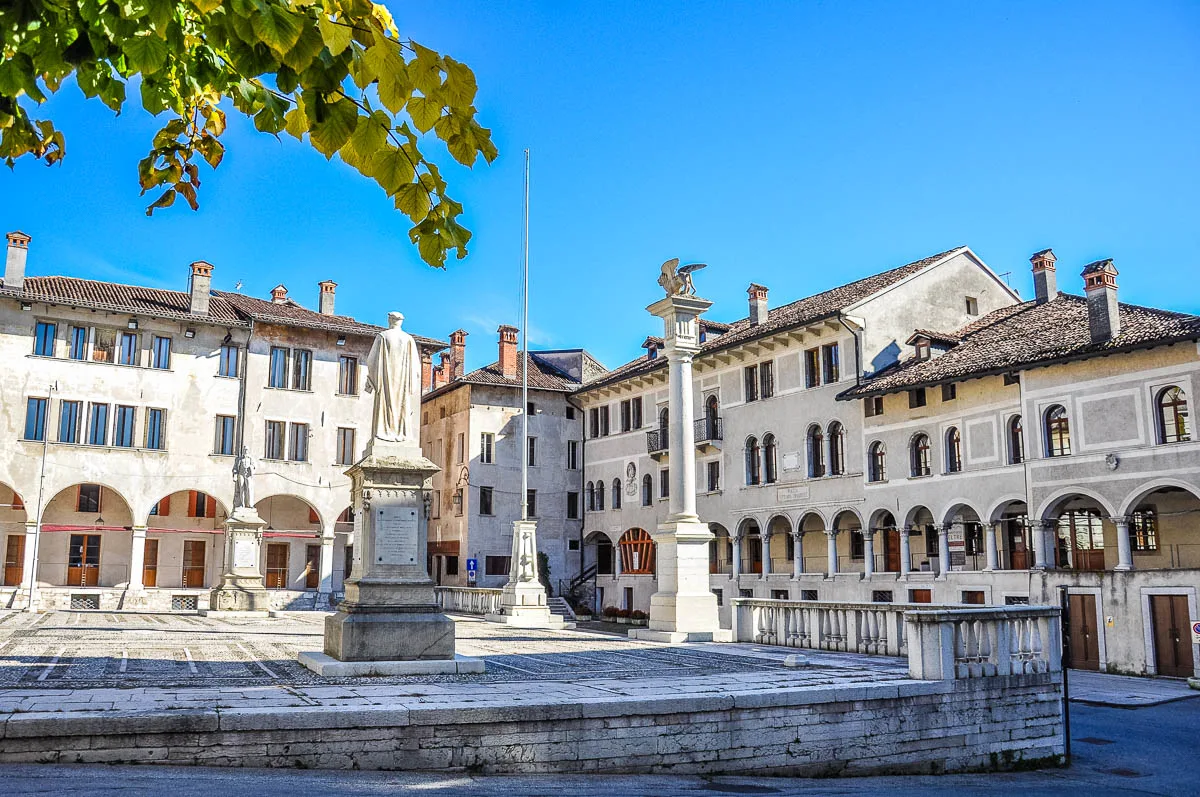
Feltre is a small town on the doorstep of the Veneto’s Dolomite Mountains. Its historic centre is perched on top of a long fortified hill and its cobbled streets are flanked by tall houses with frescoed facades.
It’s a quiet, calm place where you can easily imagine yourself mingling with ladies and knights of bygone times.
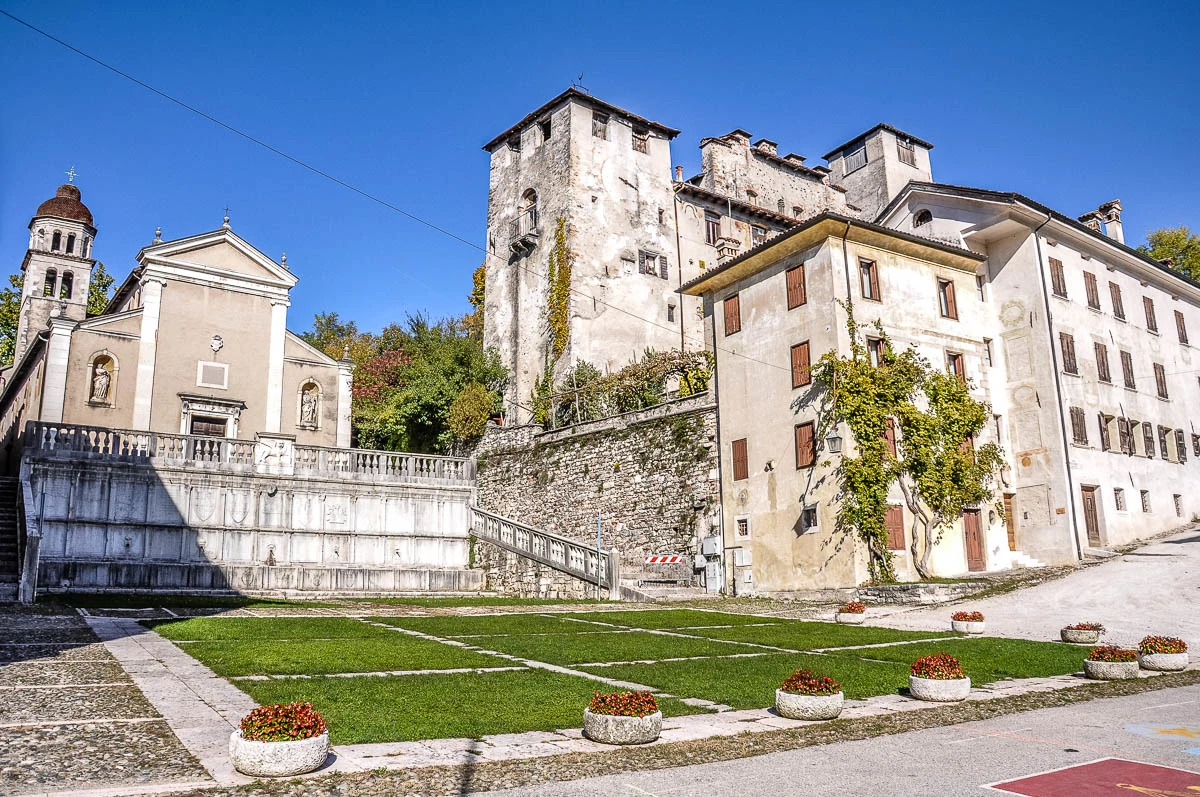
In the heart of it all stands Feltre’s main square – the Piazza Maggiore. A veritable suntrap on hot days, the square is surrounded by elegant palaces, a theatre decorated by the same artists that worked on La Fenice Opera House in Venice, and a large fountain with stone basins that in the past centuries was the town’s source of water.
Like all good things, I found myself in Feltre by complete chance during one of our first day trips in the Veneto. We spent a lovely autumn day there enjoying the unexpected beauty of the town. Reaching Piazza Maggiore in the early afternoon – right at the start of the traditional riposo break – we found the square deserted of people.
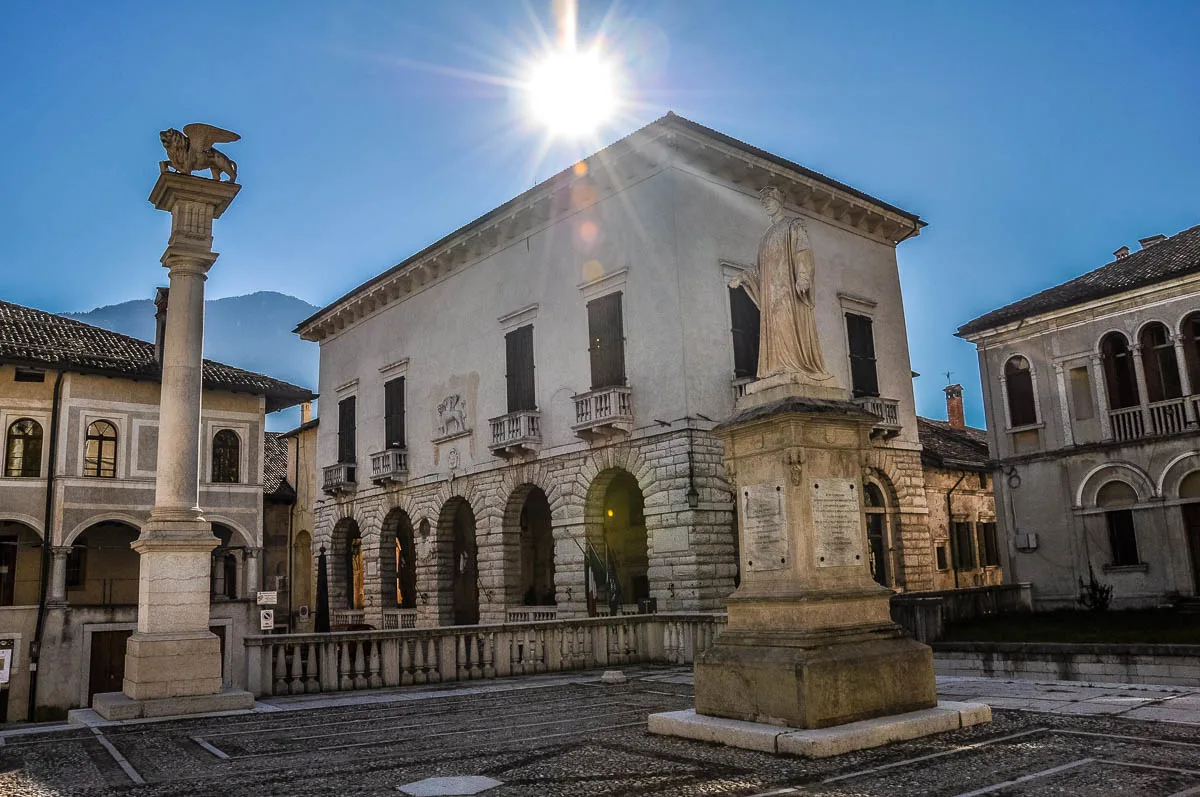
It was wonderful to simply sit there and take it all in:
- The Palladian style porticoes of the palaces providing shade during the hottest hours of the day.
- The stone pillar crowned by the Venetian lion – a symbol of the dominion of the Republic of Venice over Feltre from the beginning of the 15th to the end of the 18th century.
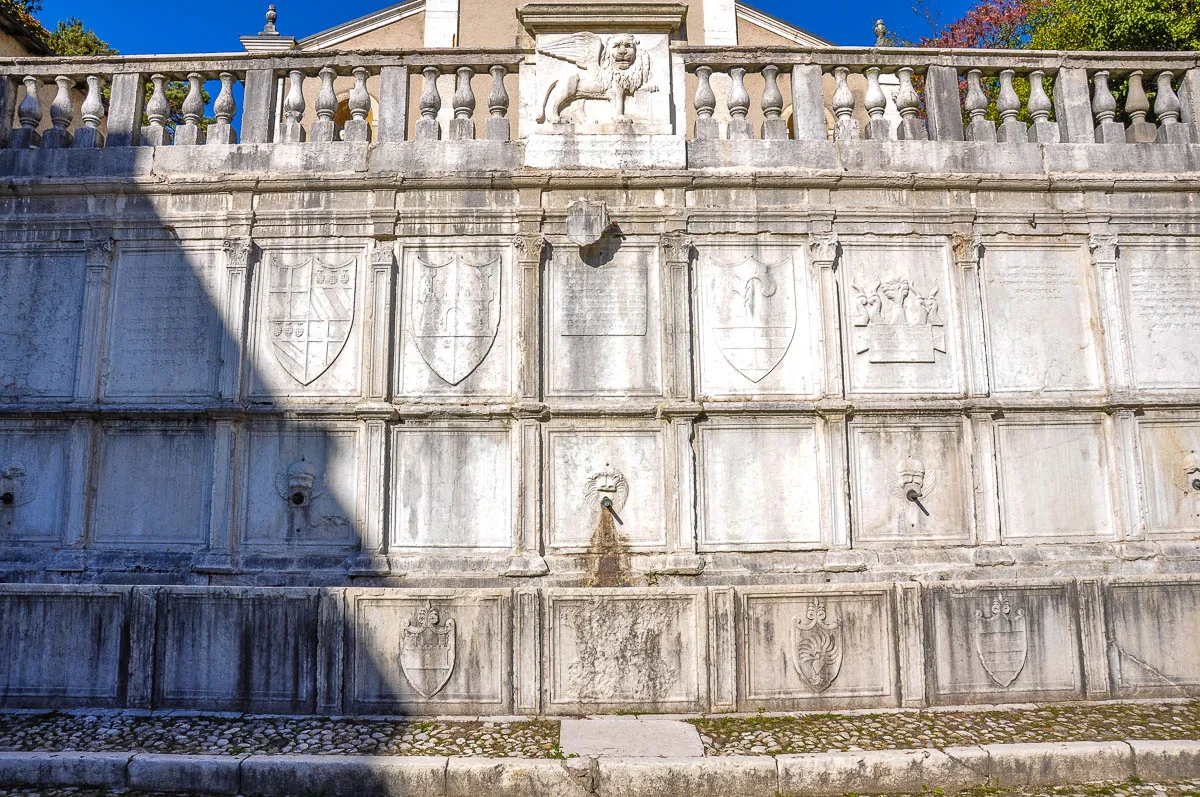
- The fountain by Tulio Lombardo – a member of the famous trio of father and sons Lombardi who built churches and sculpted monuments in Renaissance Italy and among whose most famous works is the Church of Santa Maria dei Miracoli in Venice.
- The Church of St. Roch and St. Sebastian overlooking the square from above having been built in the 16th century to ward off the bouts of plague and famine that were befalling the town.
- The Baroque staircase that flanks Lombardo’s fountain on both sides and leads up to the church.
- And, finally, the Alboino Castle built on top of the ruins of a Roman watchtower.
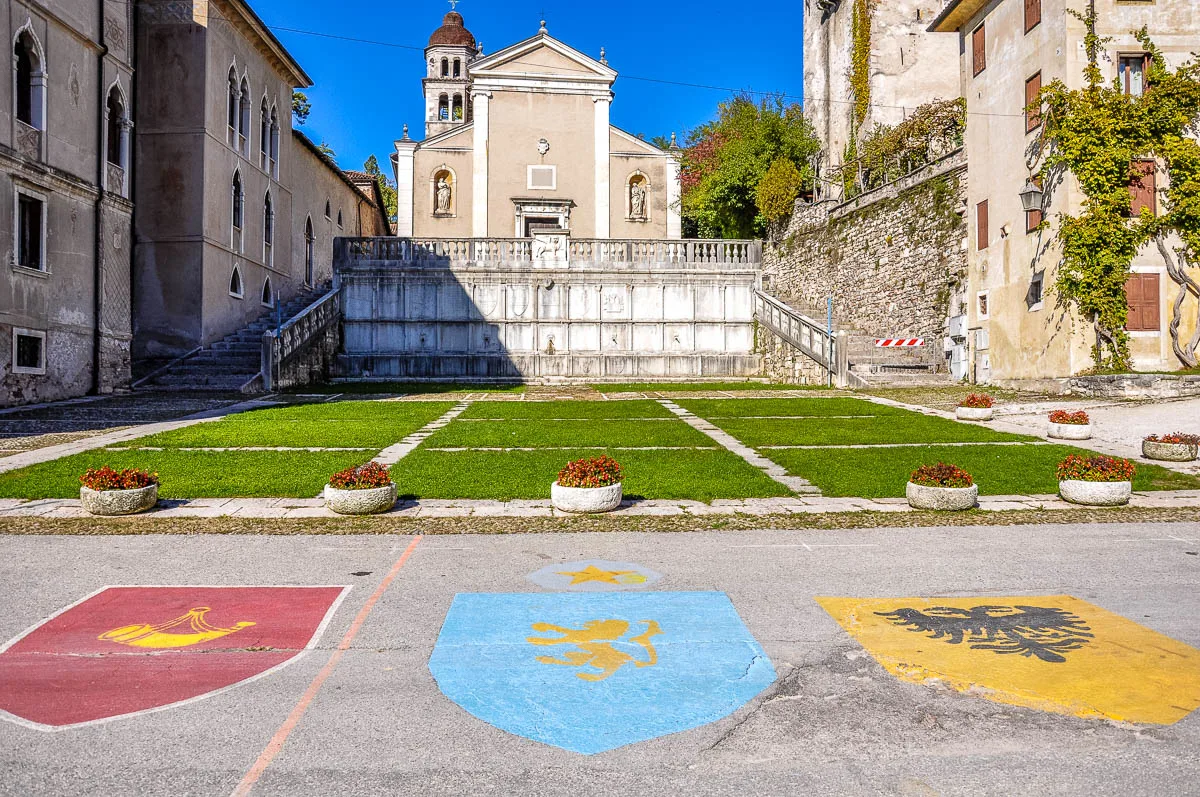
We took our time looking at the flags of Feltre’s contrade that are painted on the ground in front of the large fountain. A contrada is a historical quarter of a town in Italy.
Once a year, Feltre’s contrade take part in the town’s Palio – a horse race with roots that stretch over 600 years back in time. This is when, Piazza Maggiore becomes the focal point of the celebrations with flag throwers, drum beaters, and people dressed in period costumes descending on it in their constant and dedicated strive to keep the local traditions alive.
More Information:
11. Piazza Paolo Camerini, Piazzola sul Brenta
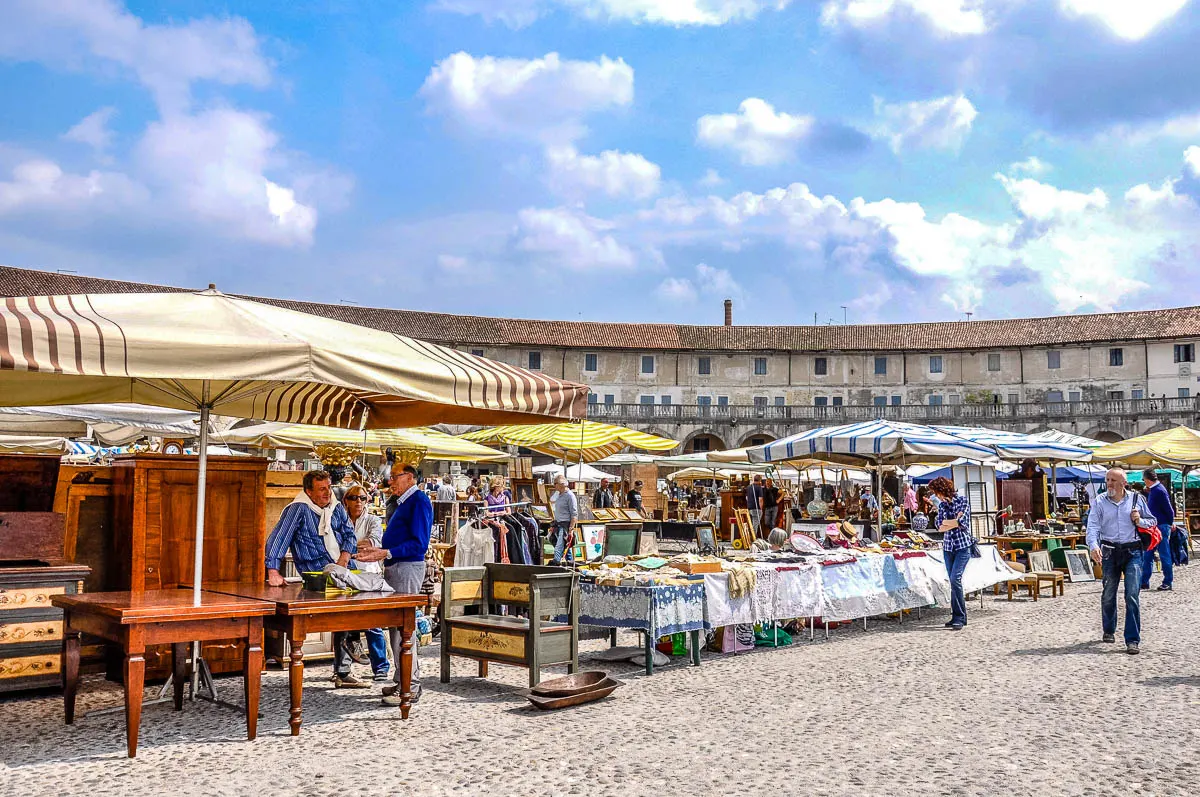
Here is another beautiful piazza in the Veneto that is easy to overlook but if you make the effort to visit it, you will be so glad that you did.
This square is immense. It seems bigger than Piazzola sul Brenta – the small town that it is attached to. Called Piazza Paolo Camerini, it looks like an enormous amphitheatre.
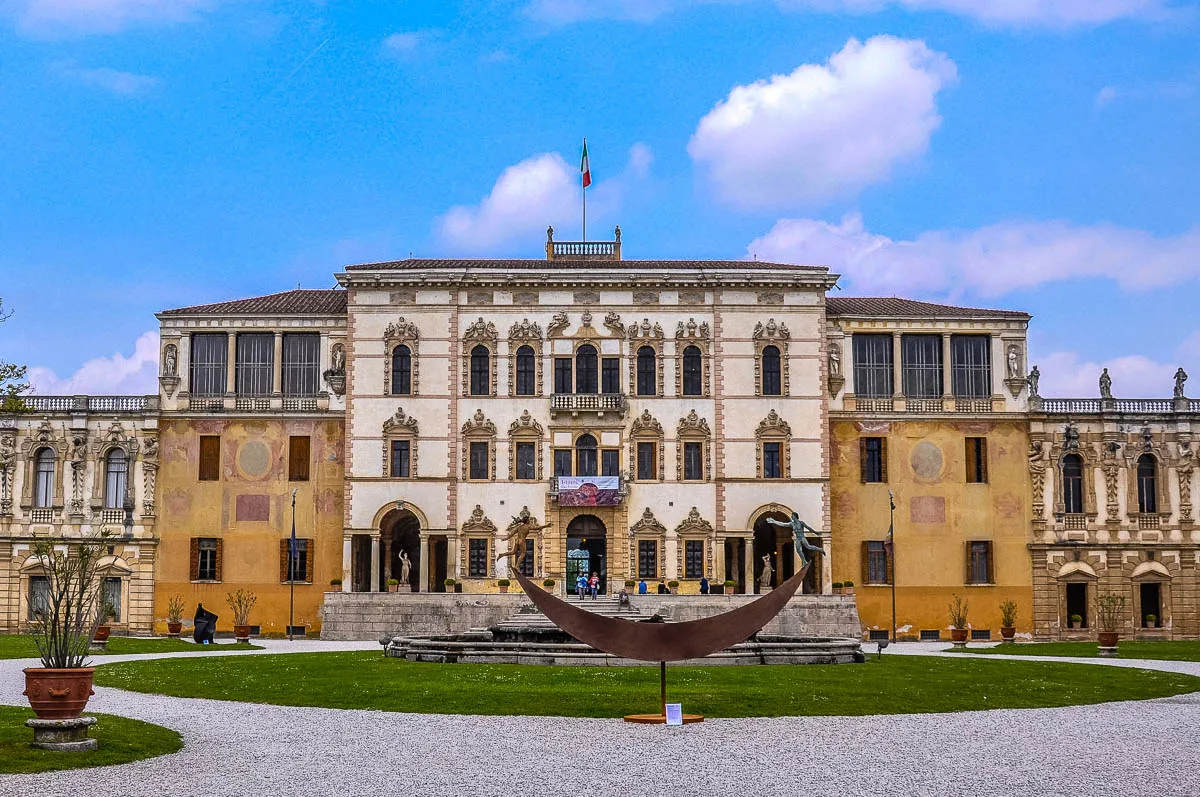
On one side, the square borders the palatial Villa Contarini. On the other, it is enclosed by a large portico that seems to have been built to accommodate not humans but giants.
The ground floor of the portico is taken by typical Italian bars and cafes serving coffees and aperitivi combined with tasty lunches. On hot days, the tables spill alfresco and take over a tiny portion of the huge square. It is incredibly nice to sit there in the sun feasting your eyes on the beautiful facade of Villa Contarini which looks very much like a small Versailles.

The pull of Piazza Paolo Camerini for me though lies in the events that are hosted there all throughout the year. This is when this huge square comes alive with throngs of people.
In summer, head there for rock and pop concerts headlined by stars like Elton John and cult favourites like Motorhead and Massive Attack. In winter, a skating rink is placed at this Italian piazza so that you can glide on ice with a palatial villa in the background. I gave it a try last winter and I had a blast.
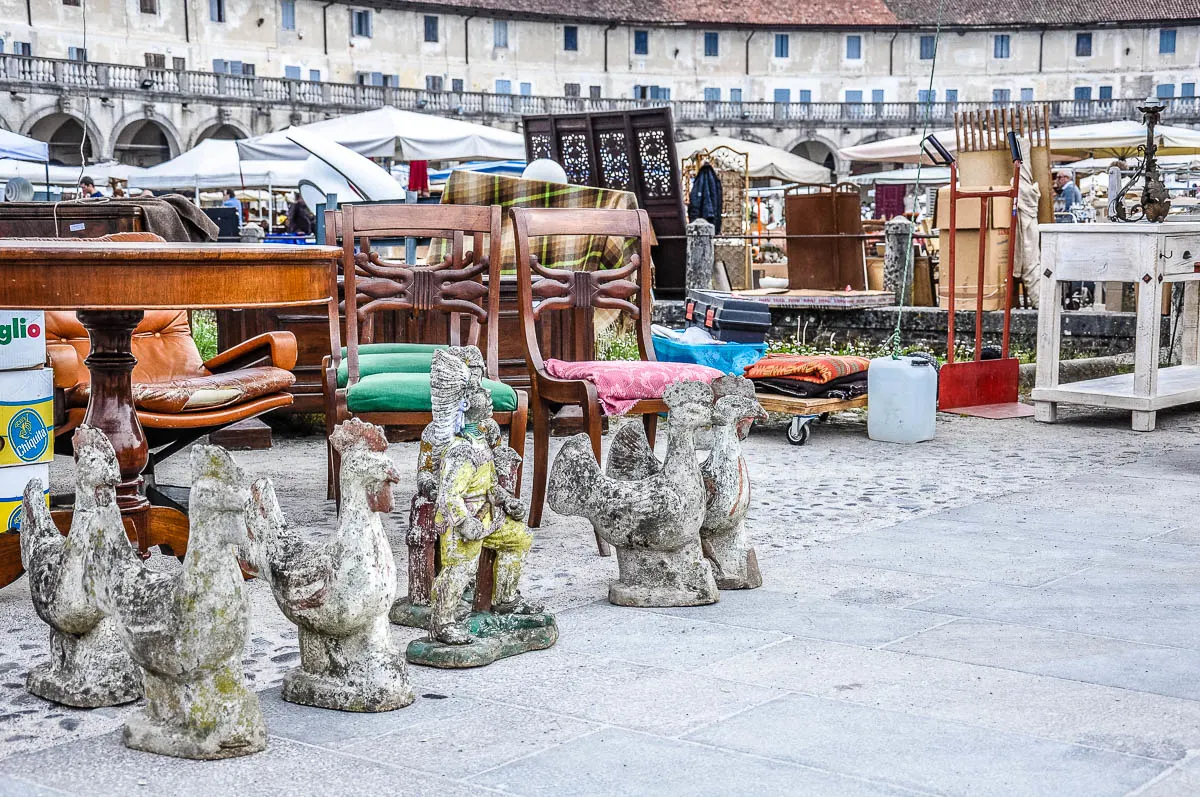
And then, once a month, a huge antiques market takes place at Piazza Paolo Camerini in Piazzola sul Brenta. There are hundreds of stalls selling everything and anything from centuries-old Murano glass chandeliers to vintage dolls and typewriters. Just come wearing your most comfortable shoes and bring lots of cash as you will want to buy it all to fill your house with unique finds.
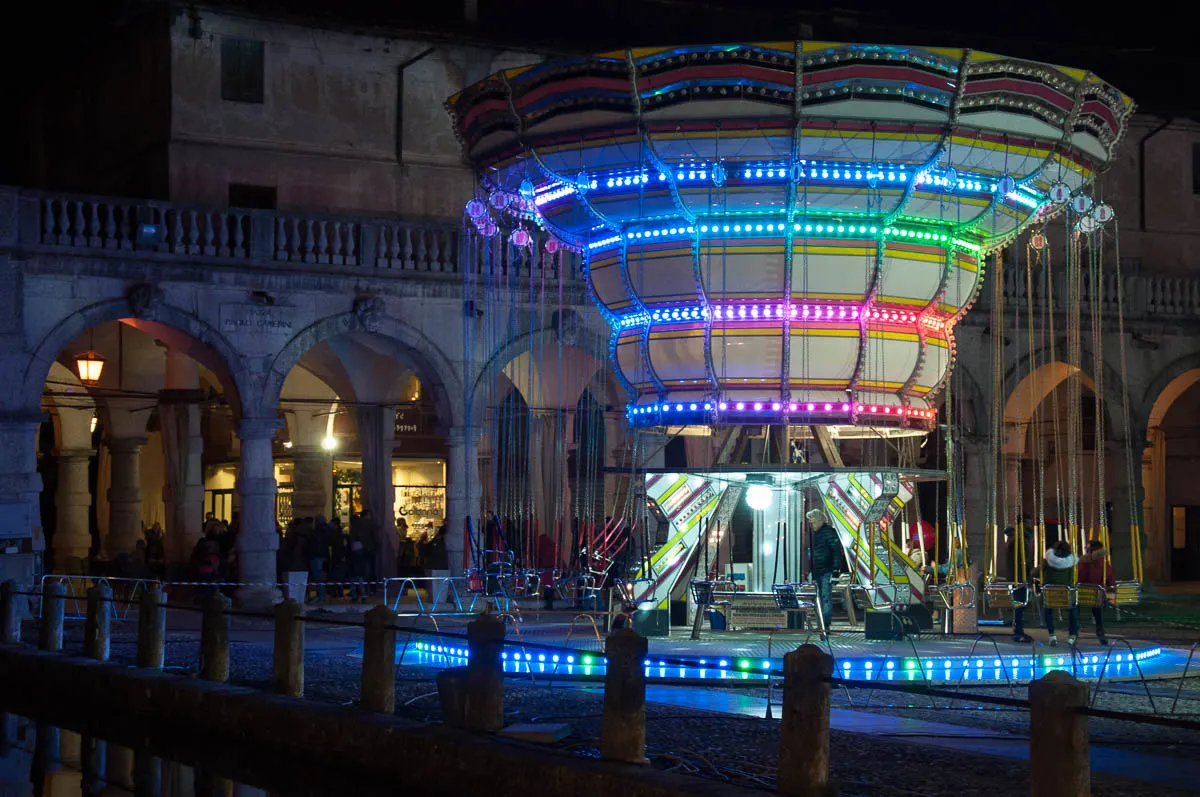
My favourite memory of this huge piazza in small-town Veneto is of a large fairground we visited there. We had so much fun on all the rides. Circling above the square in a carousel with music thumping in the air is an image I hold dear in my bank of Italian memories.
12. Piazza dei Signori, Padua
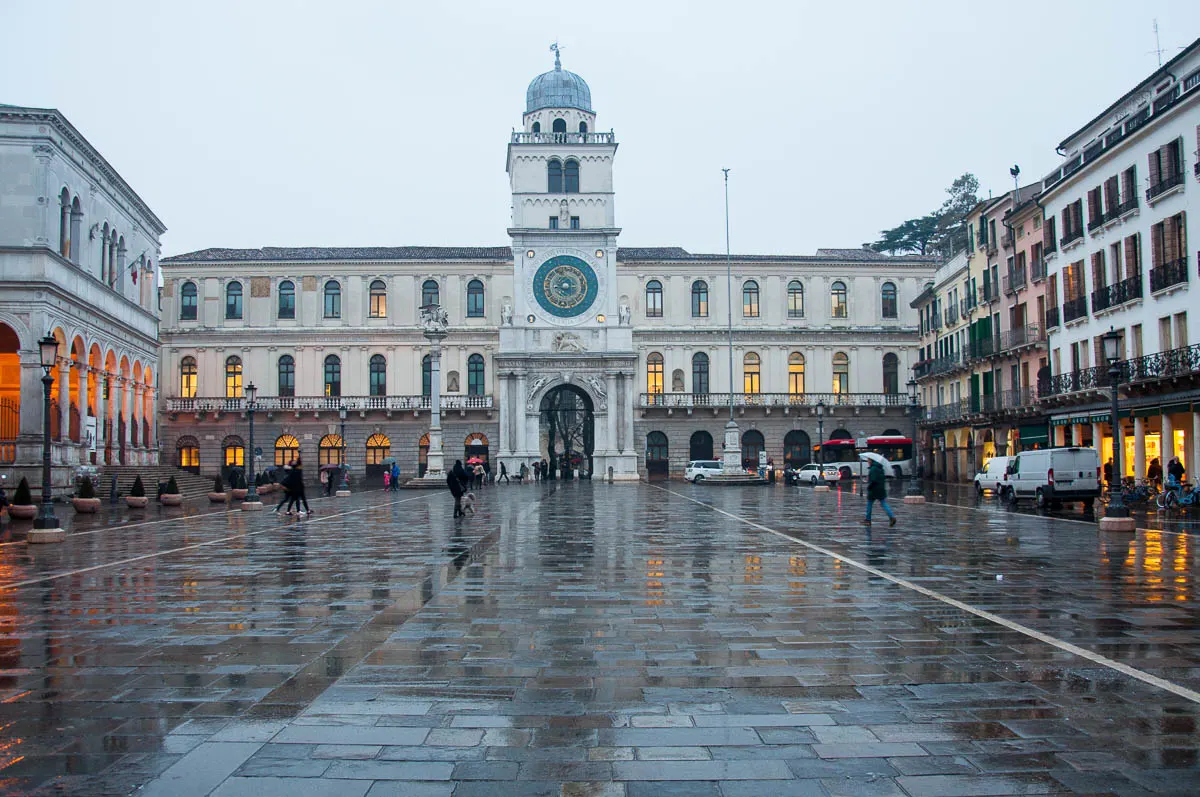
It’s time to fly back to Padua to take in the beauty of its Piazza dei Signori.
There are many Piazze dei Signori dotted all over the Veneto. They owe their names to the fact that historically they were the most important squares in town and were flanked by the buildings housing the rulers or signori assigned by the Republic of Venice to each city or town in its vast territory.
Padua’s Piazza dei Signori is among the most beautiful of them all. Standing at this spot since the 14th century, the square is right next door to Padua’s Piazza delle Erbe and Piazza della Frutta (see point 3 above).
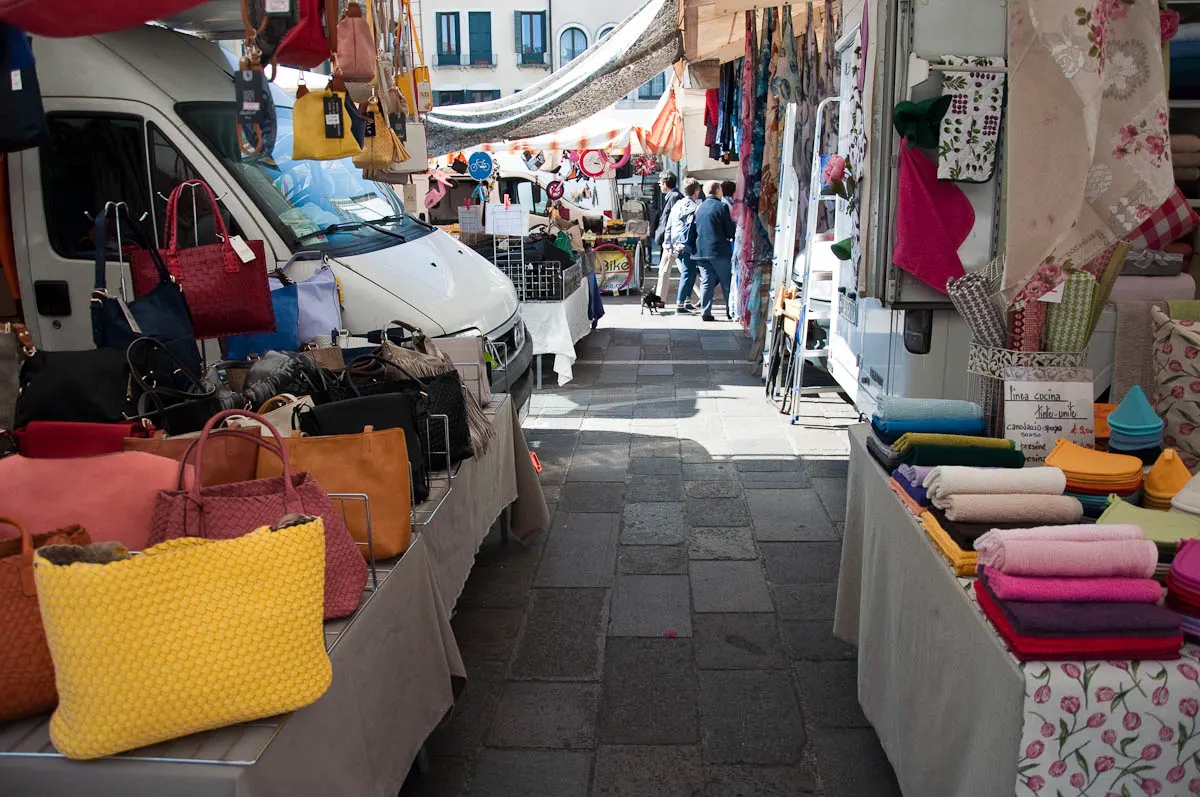
Just like them, Piazza dei Signori hosts a lively market during the day and becomes a hotspot for meetings with friends over an aperitivo at night.
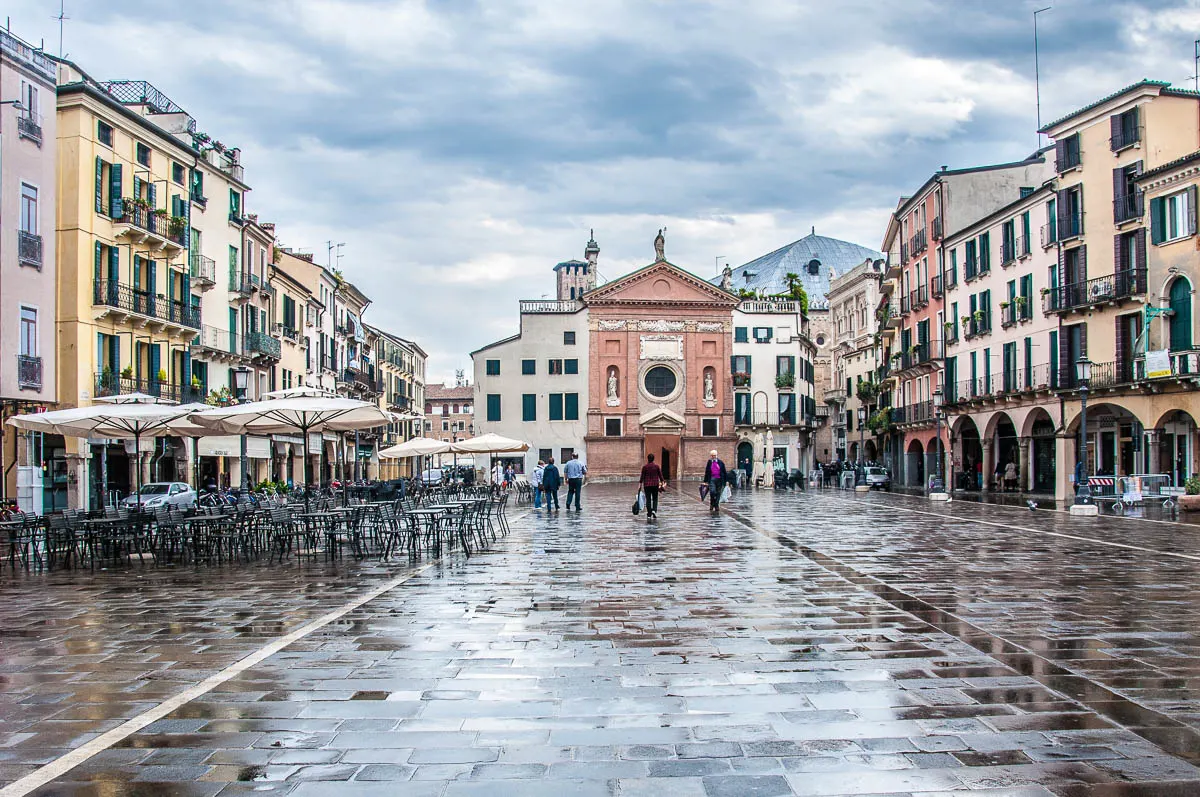
This is also where Padua’s most important official and civic events have been held throughout the centuries. Several interesting buildings surround the square.
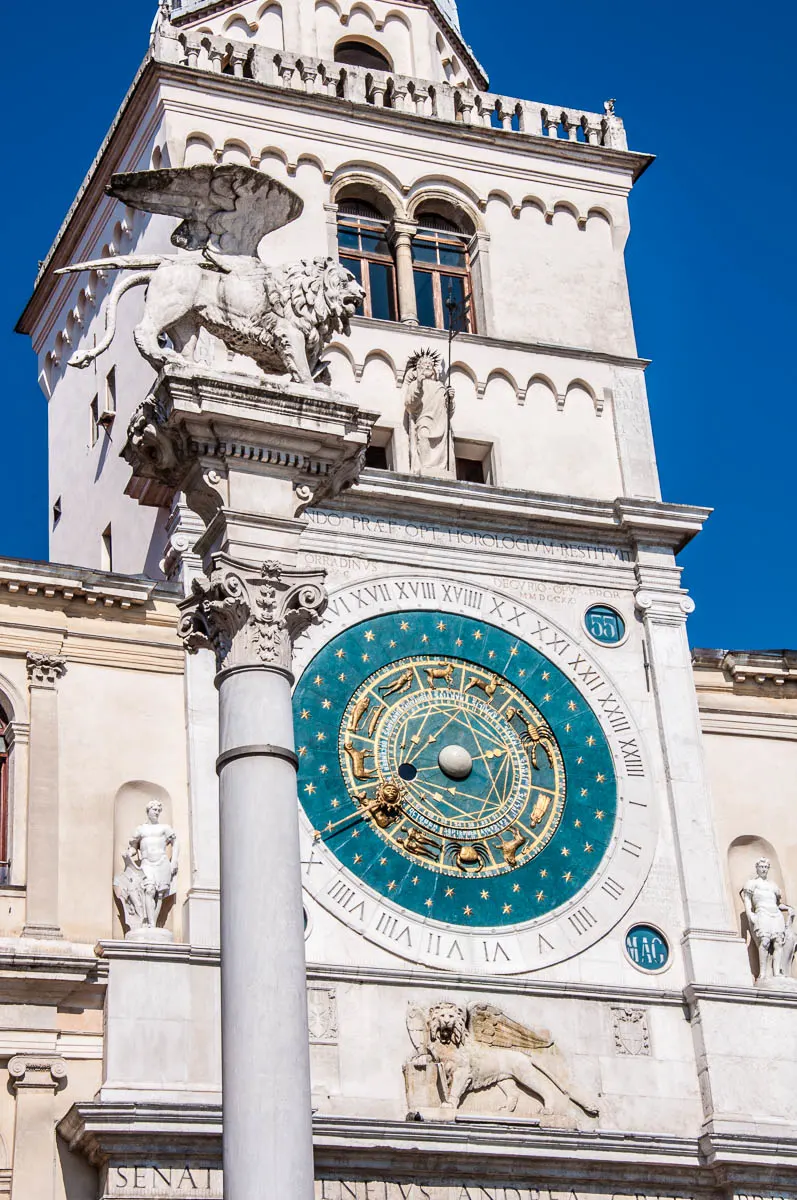
The most striking one is the clock tower with its astronomical clock. Look at it closely and soon you will notice that it has a 24-hour clock face on which 11 instead of 12 zodiacal signs are depicted. The missing one is Libra. Another curious thing about the clock is that it follows the geocentric model of the Solar System with the Earth and not the Sun in the centre of the dial.
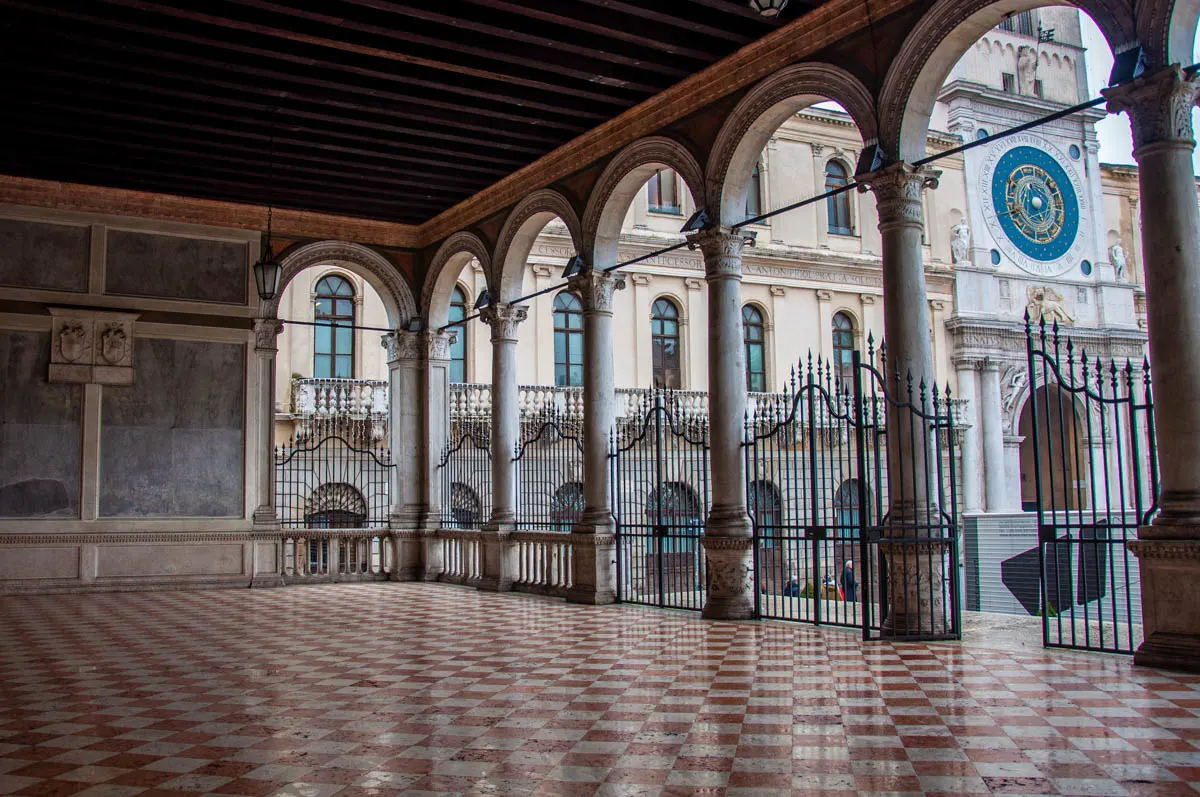
My favourite building at Padua’s Piazza dei Signori though is the 16th-century Loggia del Consiglio (also known as the Loggia della Gran Guardia).
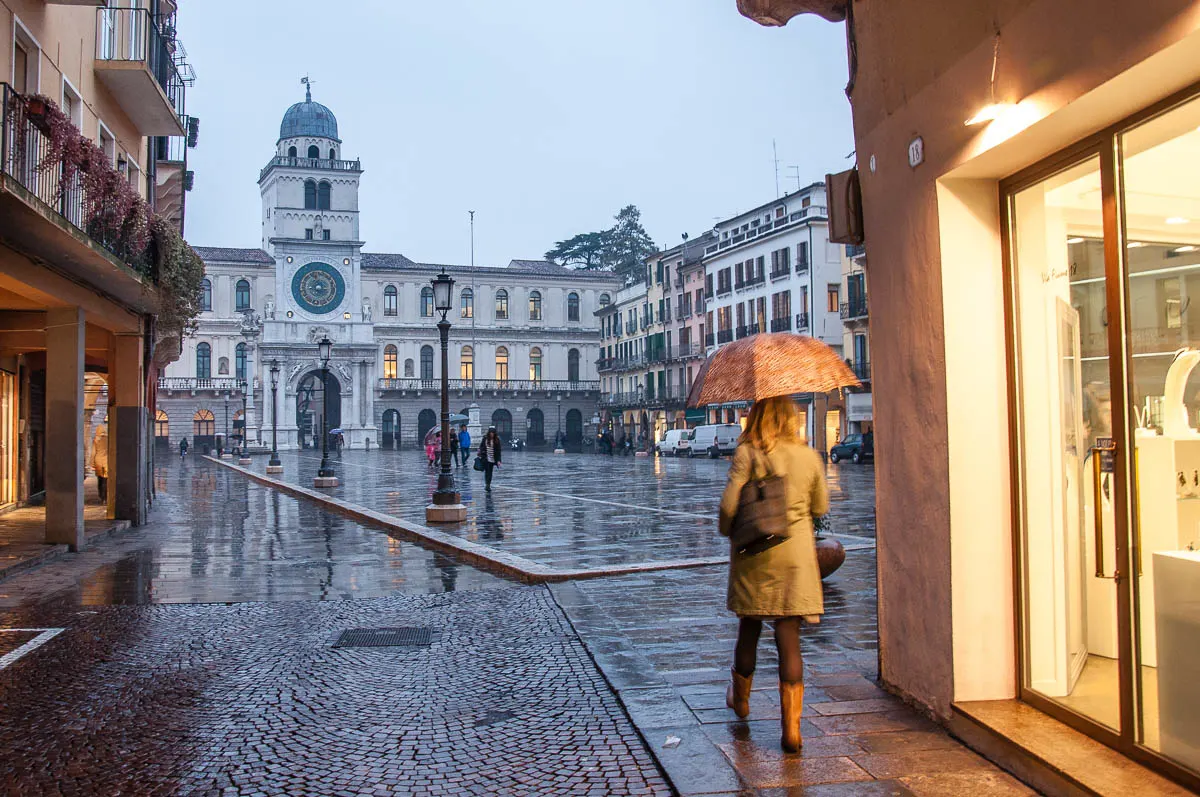
Once you have had your fill of the beauty of Padua’s Piazza dei Signori, make sure that you:
- face the clock tower and then follow the street that leaves Piazza dei Signori to the left. Within a few short steps, you will come across another of Padua’s squares of interest. Called Piazza del Duomo, it hosts Padua’s main church – the Duomo. There are two other buildings here though to put on your must-see list. One is the Baptistery – a plain on the outside building the interior of which is covered with one of the most important fresco cycles of the 14th century. It was painted by Giusto de Menabuoi. Walk in (a small entrance fee applies) and lift your eyes up. You will meet the gaze of Jesus Christ surrounded by seemingly endless circles of saints. The effect is incredible. The other building of interest at this square is Padua’s Diocesan Museum. It holds a rich collection of paintings and art. I particularly love its fully frescoed Salon of the Bishops with the first one hundred bishops of Padua painted on the walls.
- And, again, face the astronomical clock tower and then follow the street that leaves Piazza dei Signori to the right. After a short walk, you will reach Ponte Molino – an ancient Roman bridge with arched design – which opens picturesque views over the river Bacchiglione.
More Information:
- Padua’s Astronomical Clock – Where Time, Science, and History Await You
- 10 Reasons to Stay in Padua during Your Italy Holidays
- Padua, Italy – 89 Reasons to Visit the City of the Saint
13. Piazza dei Signori and Piazza Independenza, Treviso
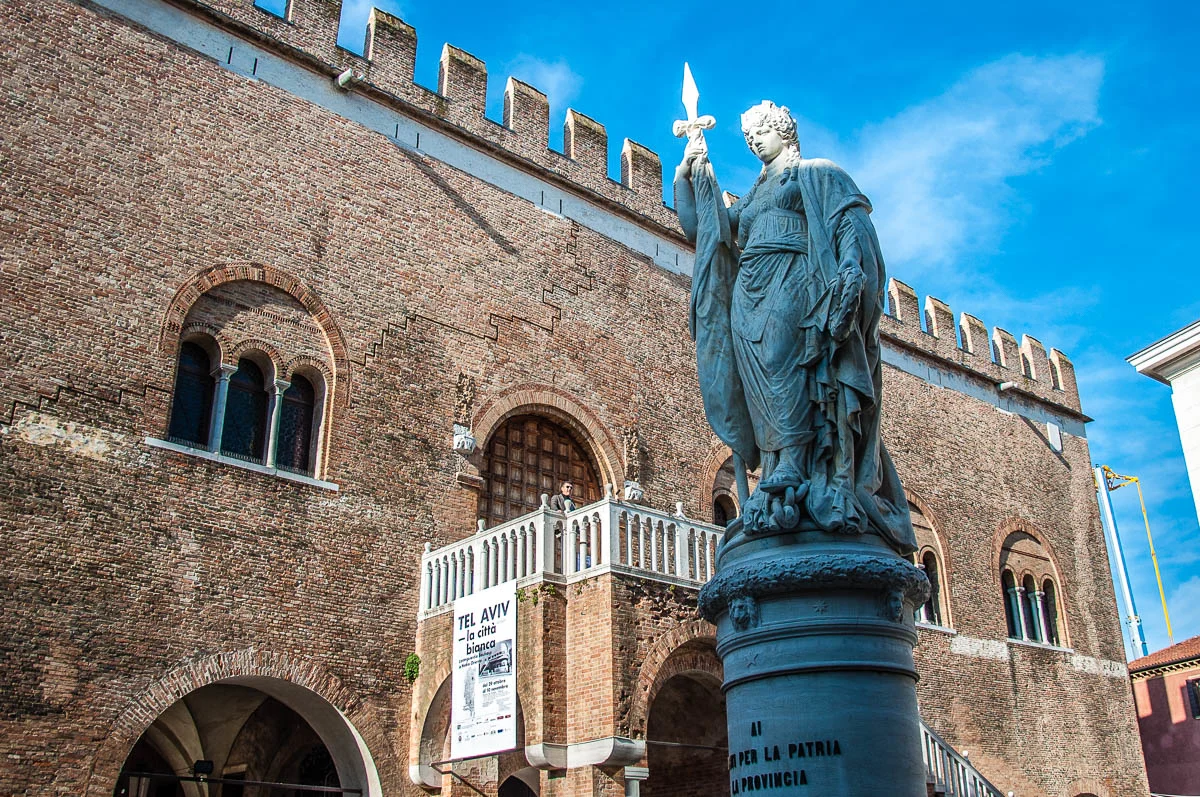
Treviso is often thought of simply as a low-cost airport that is near Venice. So, the big tourist masses bypass it as soon as they deplane. Their loss!
Treviso is one of the prettiest cities in the Veneto and it keeps many charming corners and hidden gems in its bosom. I love going to Treviso when I can. I spend my time there walking around the historic centre and visiting an exhibition or a sight.
With its frescoed facades, tall porticoes with vaulted ceilings, canal-side cobbled streets, and excellent patisseries, Treviso is a delight to discover time and time again.
No matter which curving cobbled street you will follow there, sooner or later you will find yourself at the heart of Treviso’s old town: the majestic Piazza dei Signori and the adjacent Piazza Independenza.
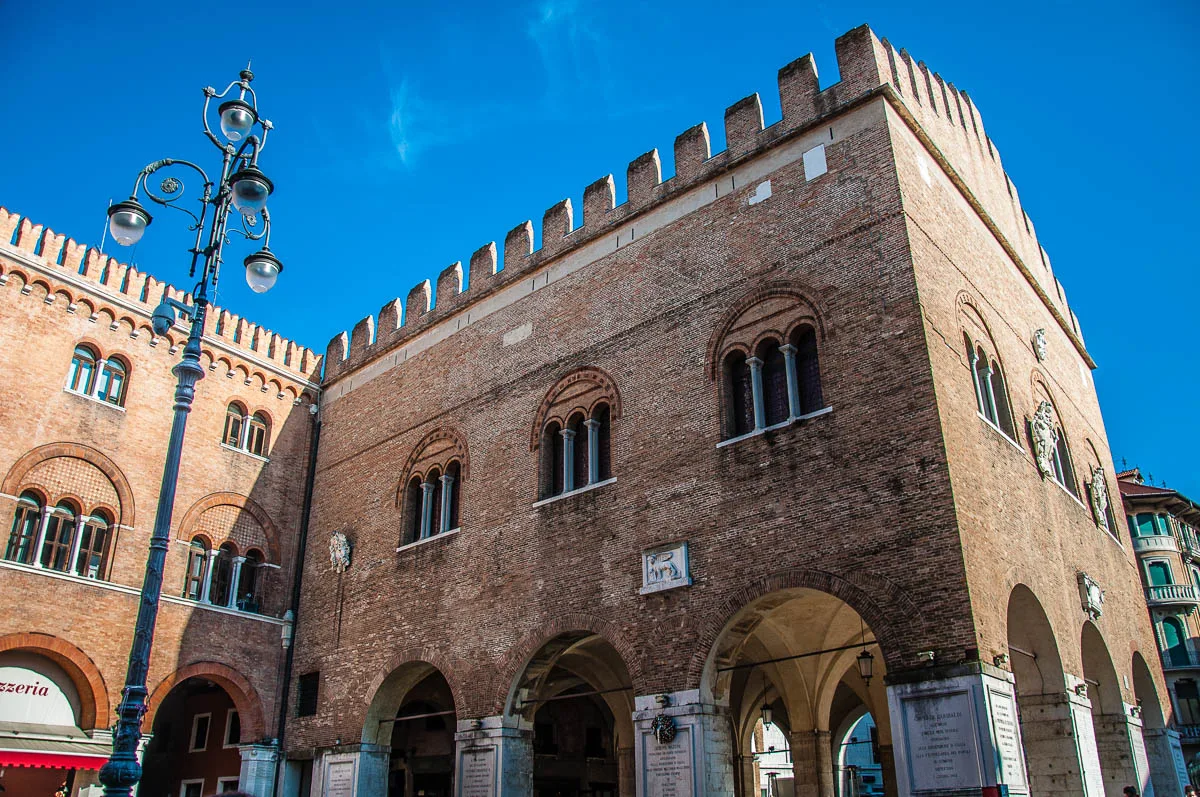
Between the two stands the Gothic Palazzo dei Trecento. Made of bricks, it has a nice battlement on top looking like a lacy edge and giving the robust body of the building a somewhat more elegant appearance. It’s interesting to note that the Palazzo dei Trecento was bombed in 1944 by the Allied Forces. It was badly damaged and then rebuilt after the end of the Second World War. To this day, you can see a deep crack going down the palazzo’s wall on the side of Piazza Independenza.
Other notable buildings to see at Piazza dei Signori in Treviso is the Palazzo del Podesta with the 13th-century Civic Tower, as well as the Palazzo Pretorio with its 17th-century facade. At Piazza Independenza, a large monument will catch your eyes. Dedicated to those who lost their lives for the Motherland, the sculptural composition is dominated by a beautiful and dignified lady with a turreted crown on her head and a sword in her hand.
While many think that the marble lady is a personification of Italy, others insist that she actually represents the Province of Treviso. Curiously, through the years she has come to be known as the Teresona by the citizens of Treviso.
Surrounded by beautiful historical buildings and with windows adorned with potted plants, personally for me, the loveliest thing about these two central squares in Treviso is how lively they are.
Large events take place here. From a yearly Carnival parade that attracts people in their thousands to the Tiramisu World Cup, I have had the chance to enjoy so many unforgettable moments at Treviso’s Piazza dei Signori and Piazza Independenza. Even when an event is not on, in the evenings the squares fill up with people in their droves eager to meet up with friends, shop, go for a nice evening walk or simply relax at the outside tables of the many bars and cafes dotted around. Being there, seeing it all for yourself is a great way to get authentically close to the Veneto and Italy.
14. Piazza Vittorio Emanuele, Montagnana
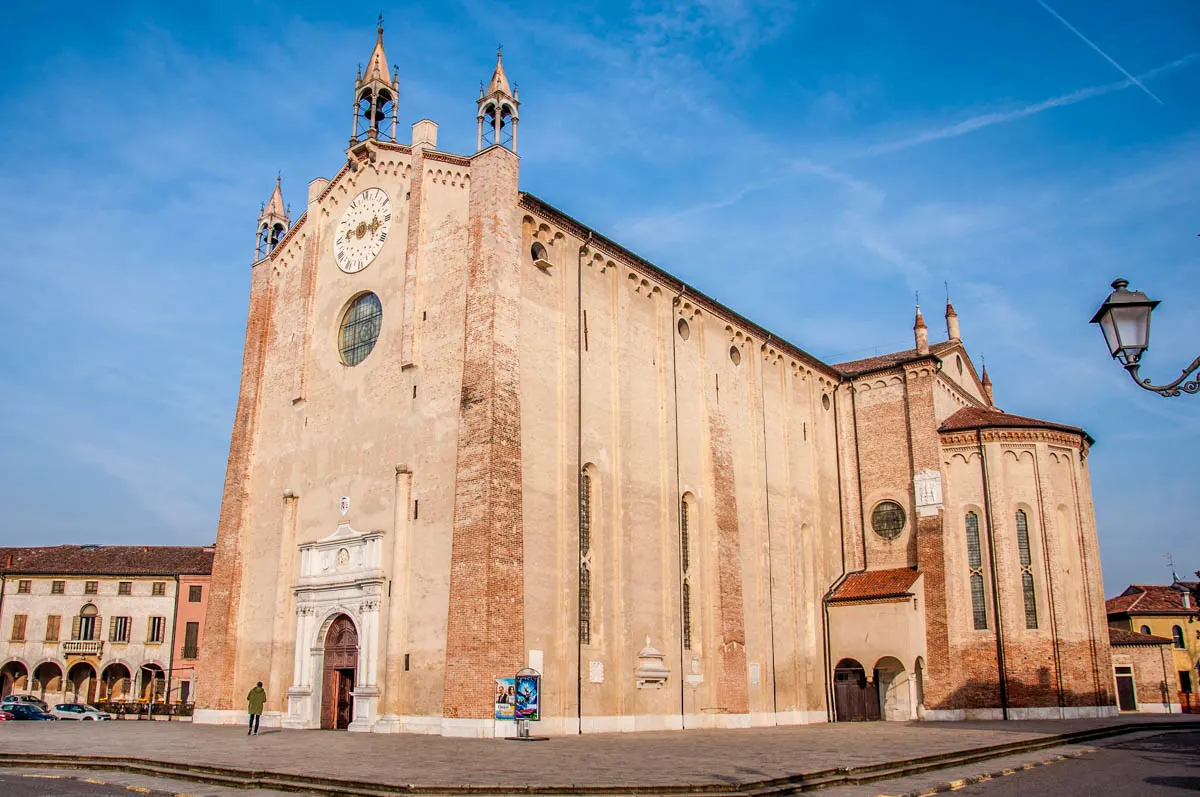
Some of the smallest places in the Veneto have some of the largest and most beautiful squares.
Montagnana is a case in point. Equidistant from Padua, Vicenza, and Verona, this is a fortified town in the plains of the river Po. Its origins pre-date the Roman Empire.
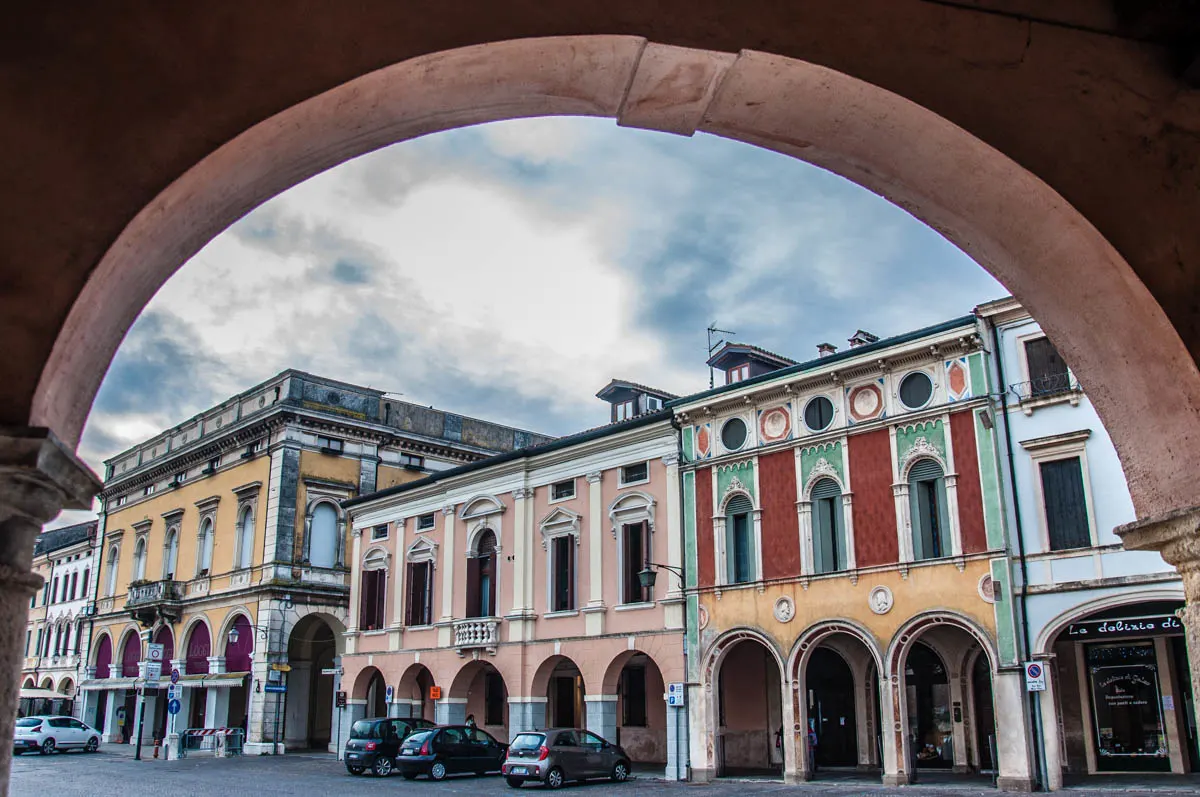
I love visiting Montagnana for many reasons. The town is small in size but very picturesque and it has an impressive main square. Called Piazza Vittorio Emanuele II, its expanse is surrounded by gorgeous houses and palaces.
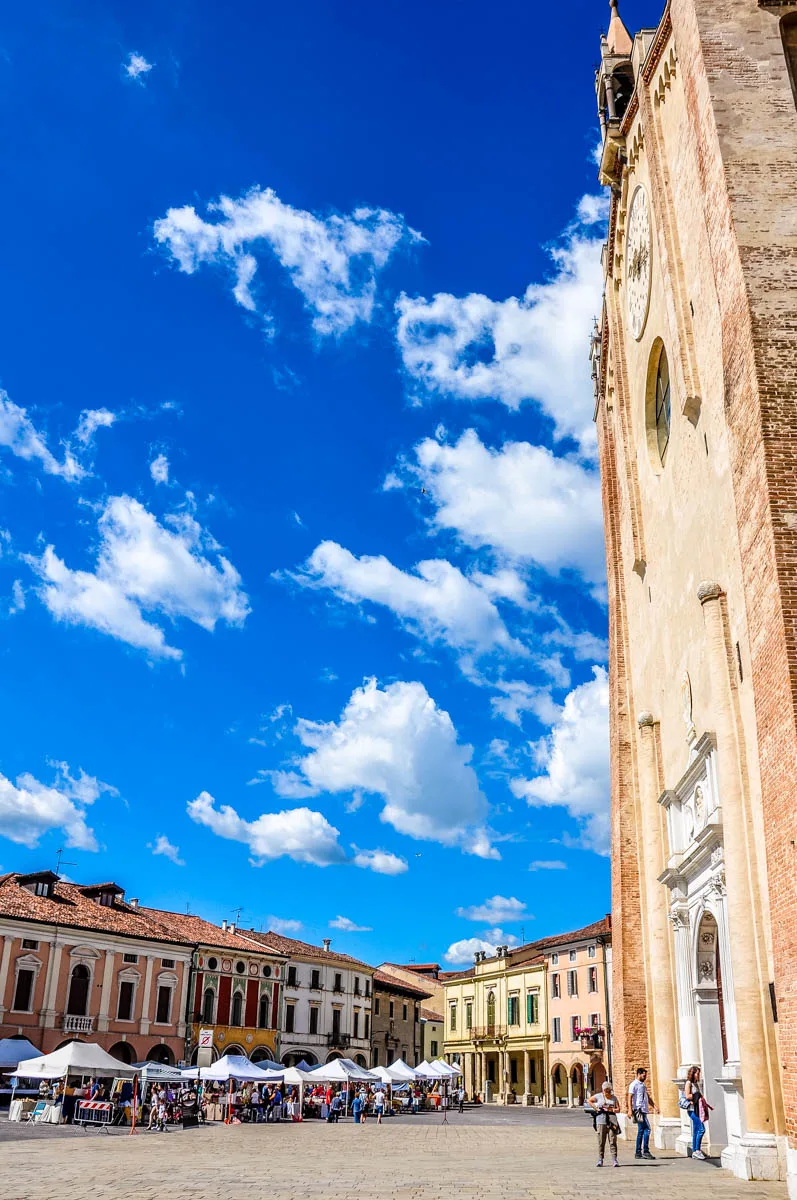
The landscape of this Italian piazza is dominated by the gigantic body of the Duomo of Santa Maria Assunta which is one of the most interesting churches to visit in the Veneto.
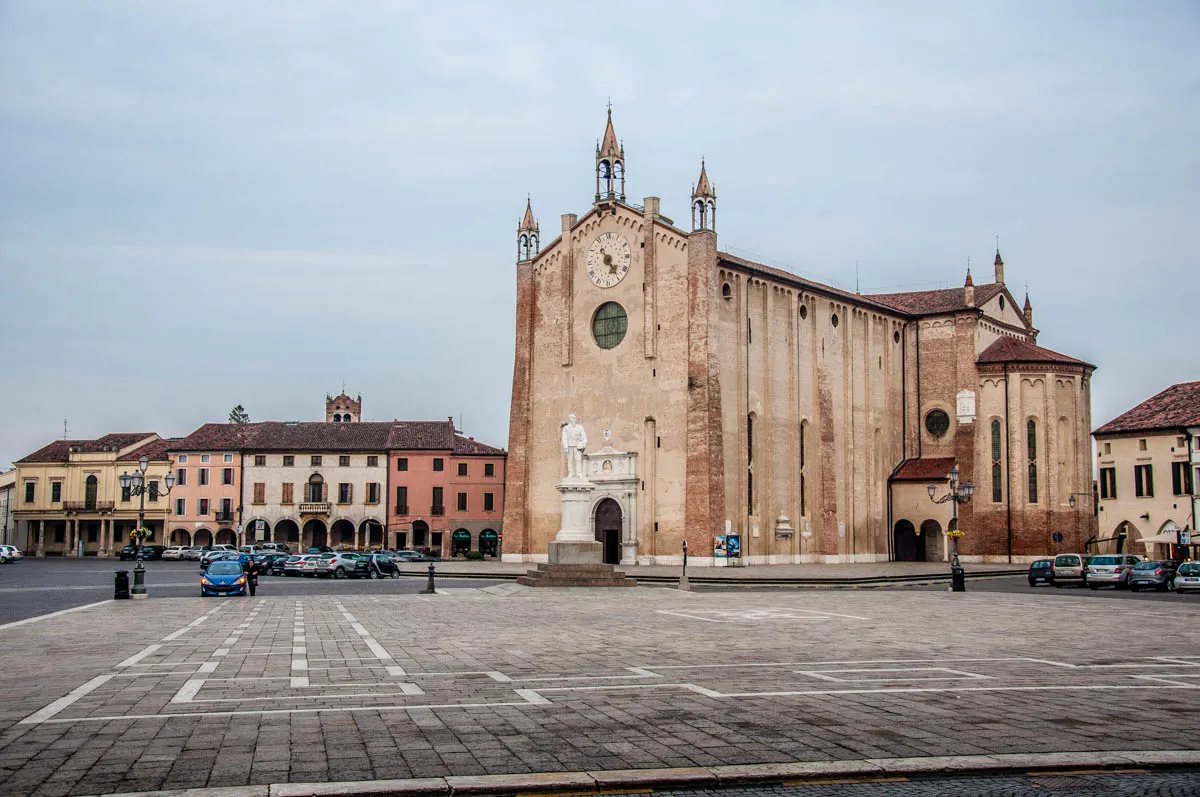
A curious thing about Montagnana’s piazza is that it’s made to look like St. Mark’s Square (see point 5 above) in Venice. Covered with blocks of grey trachyte – a volcanic rock from the nearby Euganean Hills – look closer and you will spot decorative outlines made of white stone just in the fashion of the square’s Venetian Big Brother.
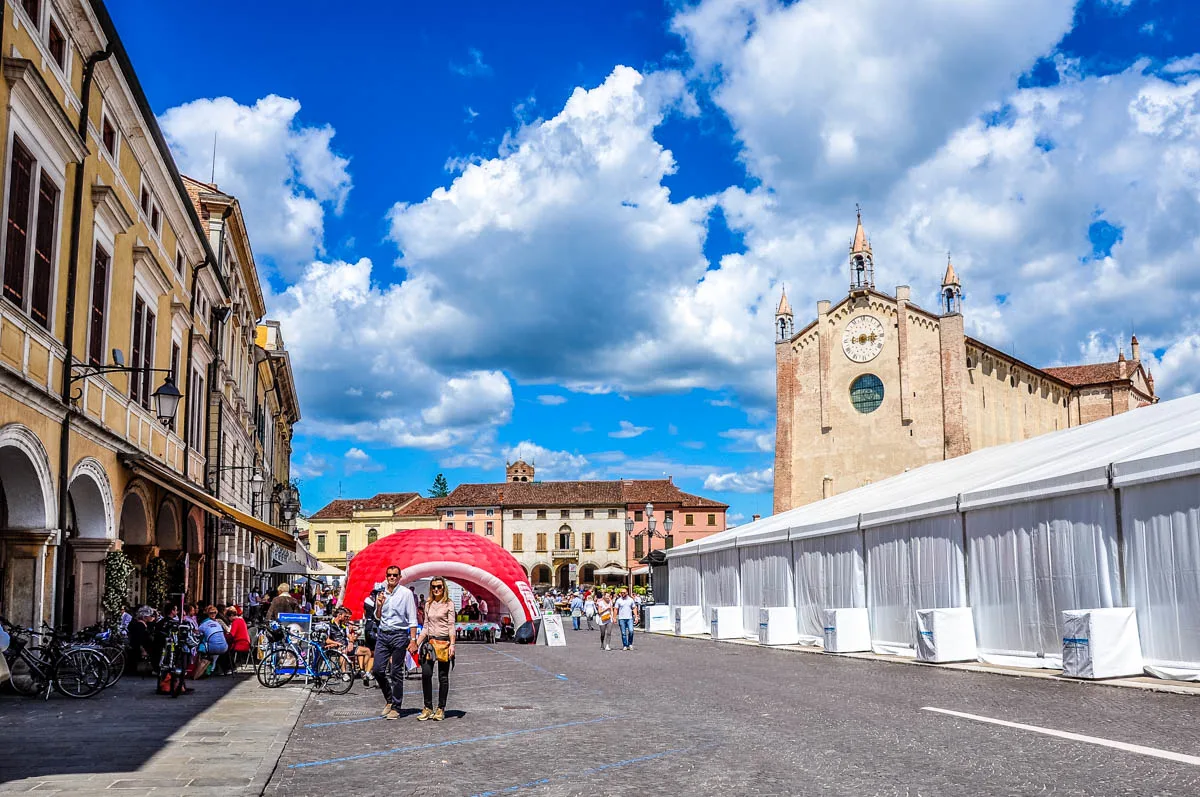
In order to see Montagnana’s main square at its best, you need to come here when a large event is being held. This is when the town and its piazza truly come alive.
For example, one of my favourite events in the Veneto, is Montagnana’s prosciutto festival. It takes place every year in May. The small town is the leading centre of production of one of the best dry-cured hams in all of Italy. Known as Prosciutto Veneto Berico-Euganeo DOP and enjoying a Protected Designation of Origin status, the prosciutto of Montagnana is a source of local pride.
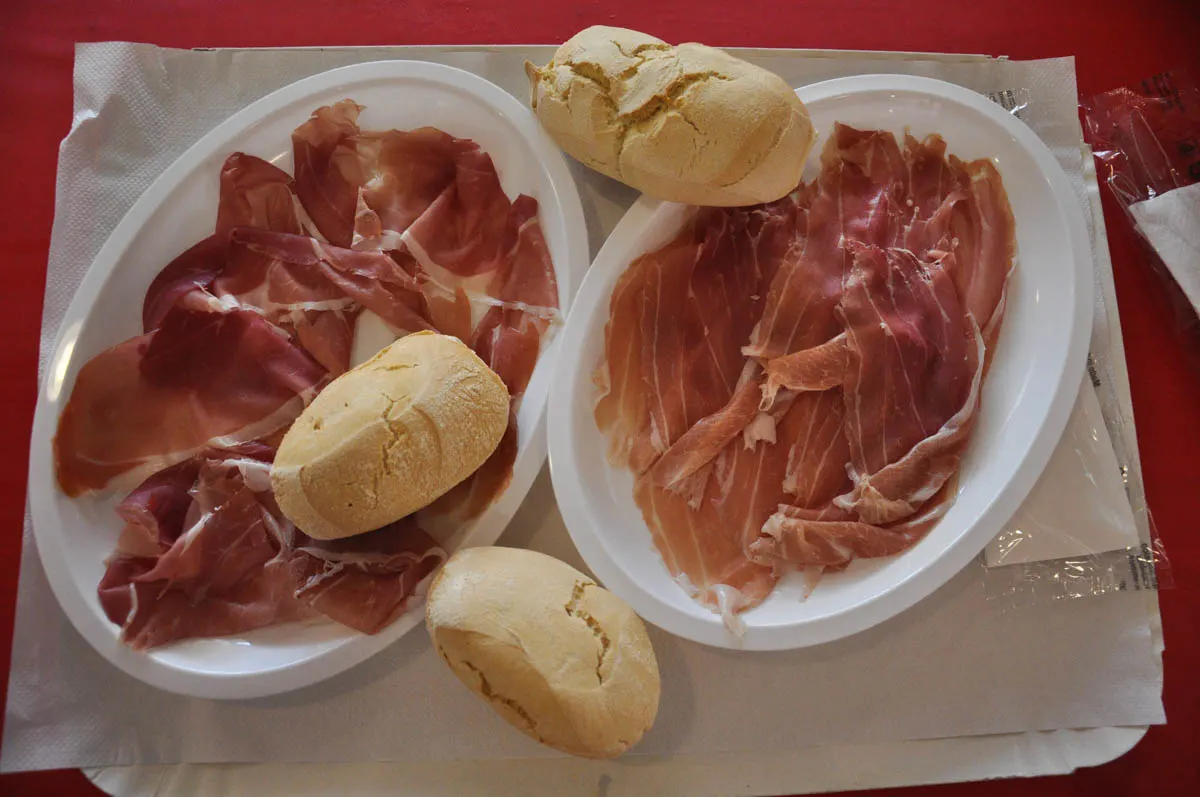
The main piazza is the focal point of the prosciutto festival. In the middle of the square, a large marquee is set up serving perfect slices of dozens of the best prosciutto brands to the discerning locals.
There is music, markets, dinners dedicated to prosciutto and different dishes prepared with it. It feels really nice being there, in the centre of Montagnana’s life, at its main piazza having an authentic Italian experience first hand.
More Information:
15. Piazza Vittorio Emanuele, Lazise
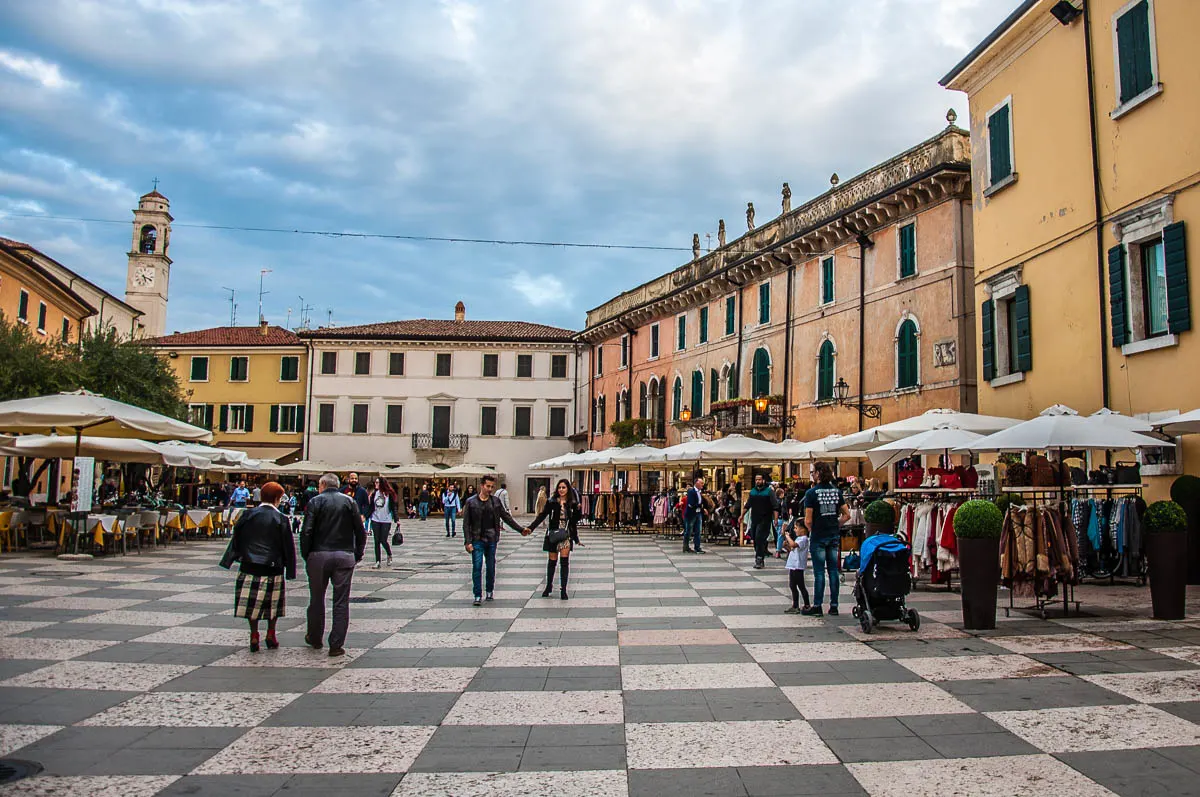
Lazise is a picture-perfect town on the shores of Italy’s largest lake – Lago di Garda. As luck would have it, Lazise has a picture-perfect main square, too. It has a checkboard pattern and it overlooks a gorgeous little harbour where colourful boats are moored in the shadows of the 12th-century Church of San Nicolo’.
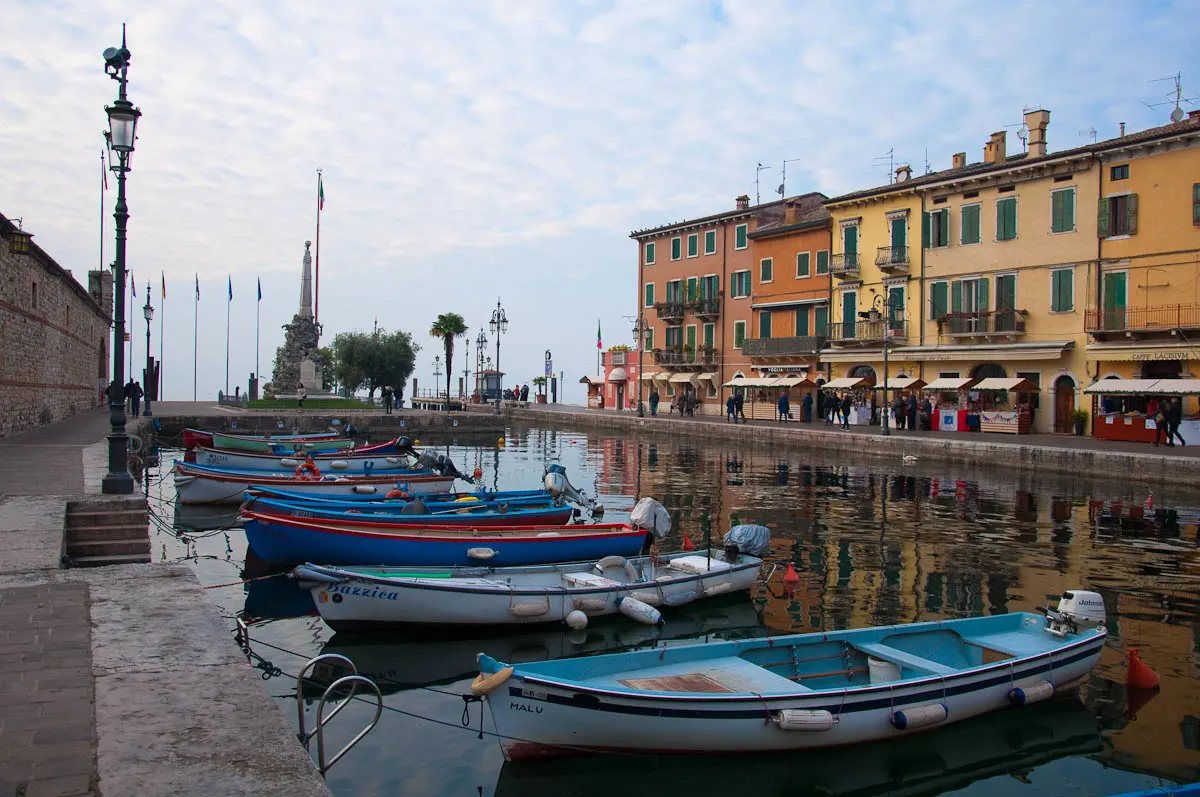
Restaurants and cafes place their tables around Lazise’s main square and the many small shops on the ground floors of the large buildings that surround it arrange rails with clothes and tempting displays with local products alfresco, too.
Large markets and seasonal events take over this Italian piazza at regular intervals. I particularly love the Christmas market when the tourist crowds of the hot months are no more and you can peruse the Christmas stalls strictly in the company of the local residents.
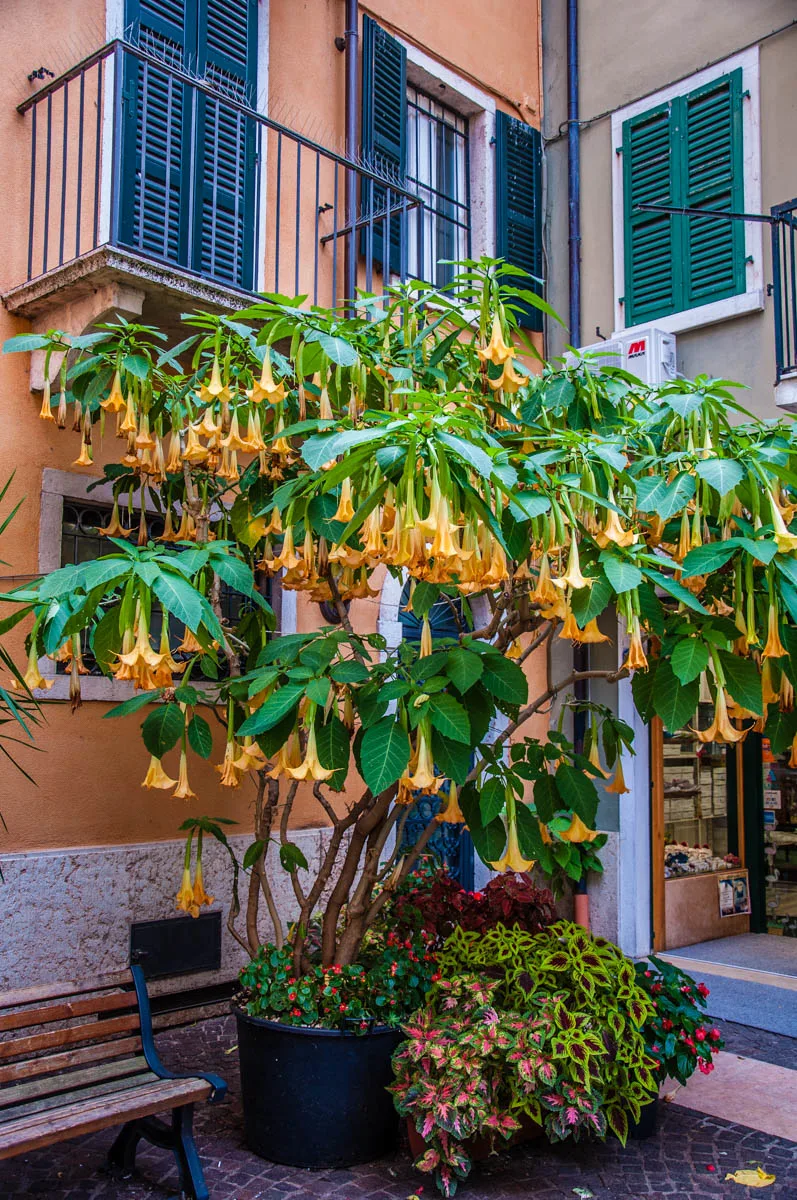
A thick web of narrow streets starts from Lazise’s main square. I love following them at random and thus discovering many charming corners around this little yet very beautiful town.
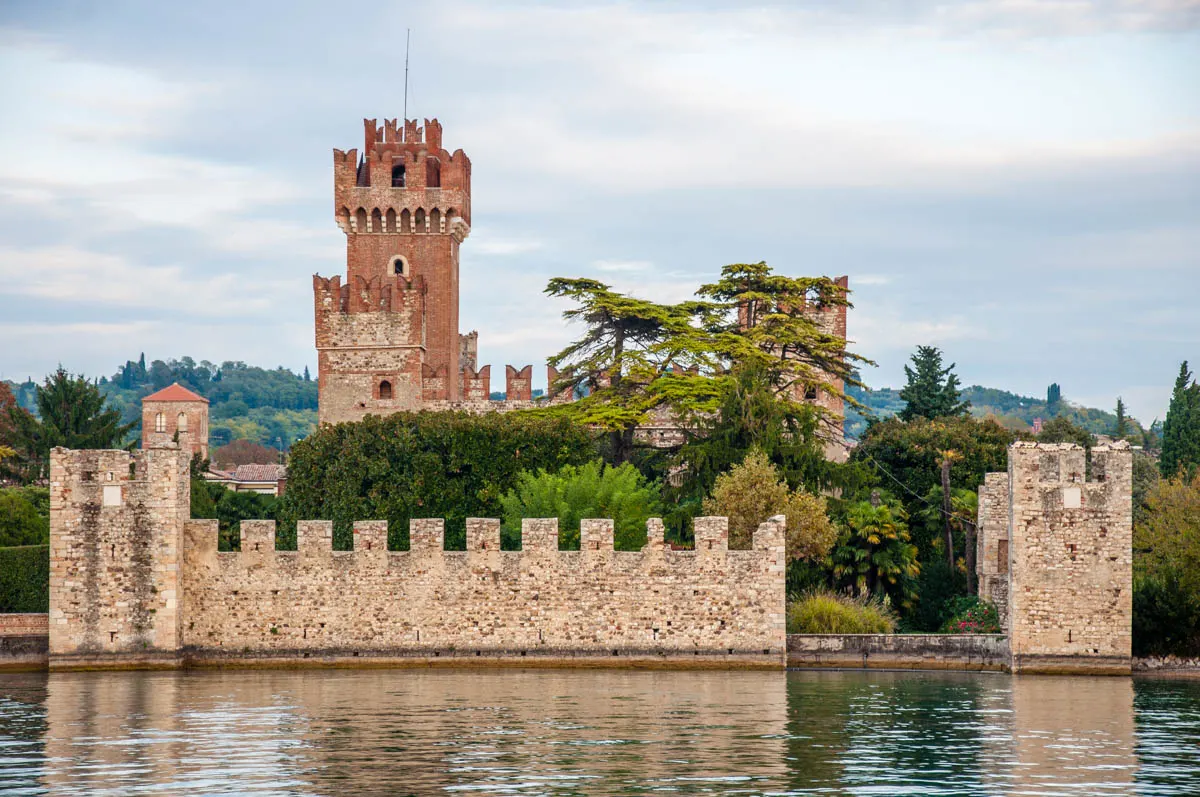
Lazise’s medieval castle – closed to the general public but gorgeous to see from the outside – is a short walk from Piazza Vittorio Emanuele, too.
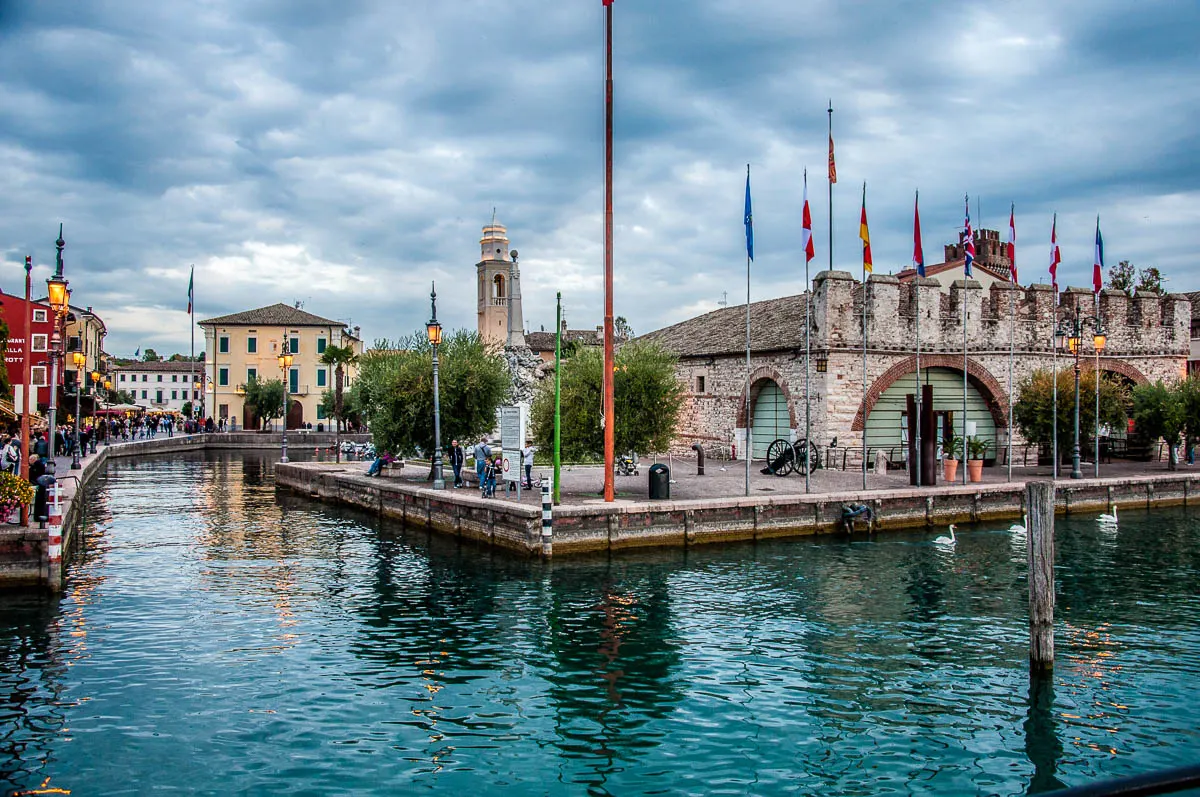
Just a stone’s throw away from the square is the Venetian Dogana – an early 17th-century customs house at the place at which a medieval arsenal once stood. Curiously, in the past, the Dogana used to represent the border between Lombardy and the Republic of Venice.
Every time that I go to Lazise, I have a beauty overload. With a history spanning several millennia back in time, in the Middle Ages Lazise was Italy’s first free commune. Later on, it became an important port for the Republic of Venice. Nowadays, this small town on Lake Garda is a popular summer resort.
With its medieval defensive walls and lake views, Lazise is a delight to explore. Its main square – Piazza Vittorio Emanuele – is a great spot to find yourself and spend a relaxing hour at during your time here.
More Information:
- Best 12 Towns to Visit Around Lago di Garda – Italy’s Largest Lake
- Lake Garda with Kids or the Best 11 Things to Do at Lake Garda for Families
16. Piazza San Liberale, Castelfranco Veneto

One of the prettiest medieval towns in the Veneto, Castelfranco Veneto, has a suitably gorgeous piazza that stands right in the heart of its walled historic centre.
Extending in front of the town’s elegant 18th-century Duomo, Piazza San Liberale in a way looks more like a large and carefully tended to frontyard than a traditional square.
The piazza carries the name of an Early Christian saint from the once-powerful nearby town of Altino. The relics of San Liberale are nowadays kept in the Duomo of Treviso and the first settlers who founded Castelfranco Veneto came here in the Middle Ages precisely from Treviso.
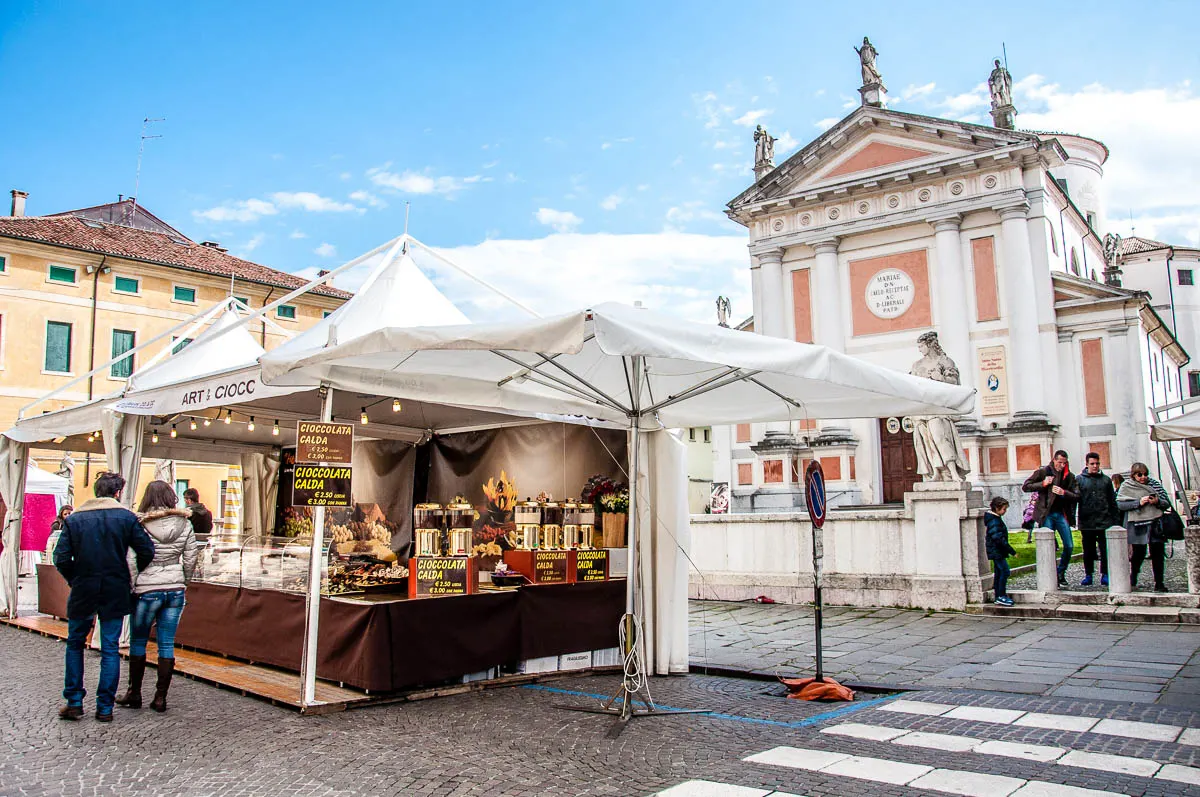
I have spent many happy moments in Castelfranco Veneto – it is a gorgeous place to go for a stroll at any time of the year. Plus, the local events – from a chocolate festival in spring to a medieval festival in the late summer – are a great way to have fun in the town’s beautiful historic centre. This is when the piazza hosts all sorts of shows and demonstrations.
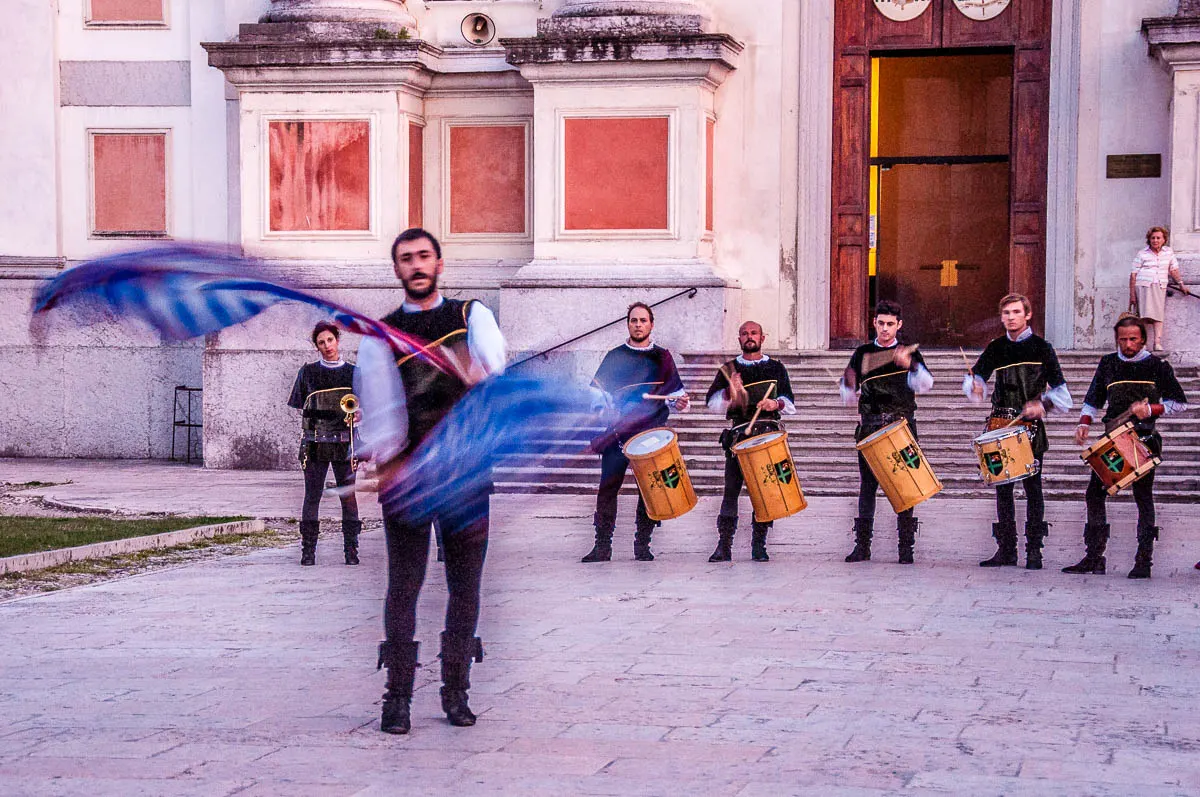
I still remember a great group of flag throwers demonstrating this traditional for Italy art throwing and swirling their flags in the early evening dusk under the accompaniment of the beat of drums.
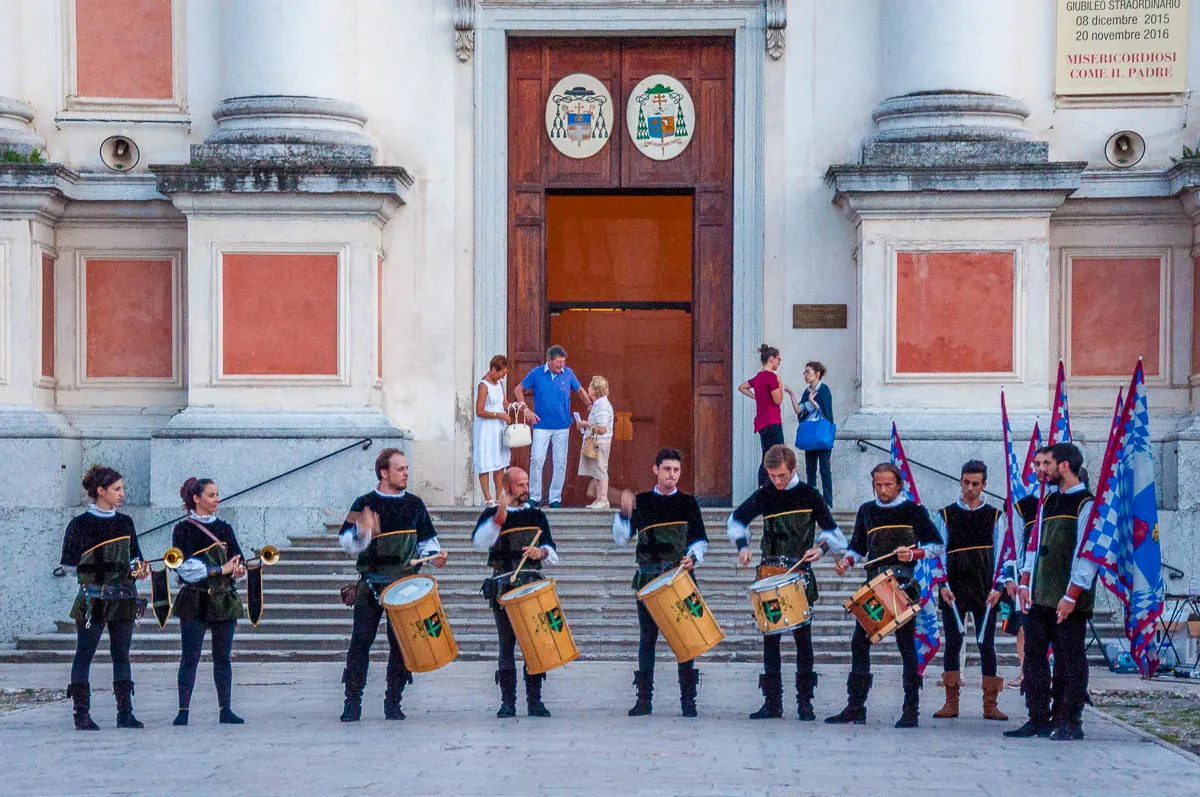
The Duomo that overlooks Piazza San Liberale in Castelfranco Veneto has works of art by many world-famous Venetian artists among whom stand out:
- Paolo Veronese – fragments of whose frescoes, originally painted for a patrician villa near Castelfranco Veneto, are preserved in the church;
- Giorgione – a native to Castelfranco Veneto, in the Duomo you can admire his masterpiece ‘The Madonna and Child Between St. Francis and St. Nicasius’.
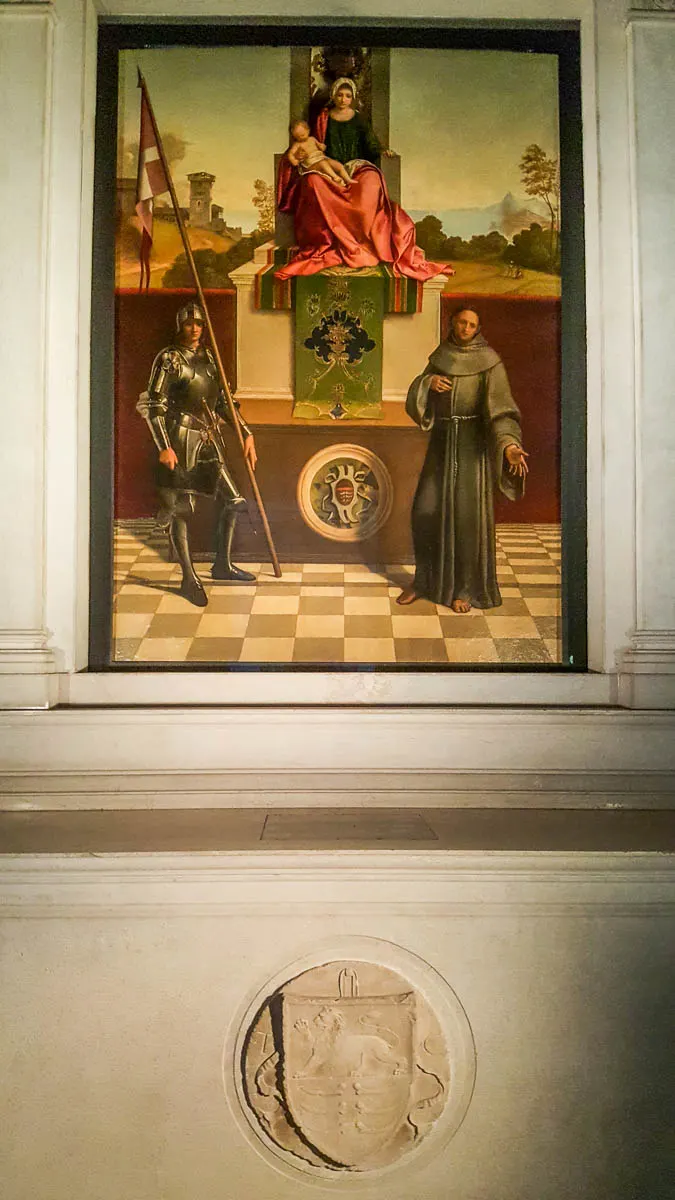
Just outside of the Duomo and on the corner of Piazza di San Liberale stands Giorgione’s House. It is a great place to visit to learn more about one of the greatest painters of the Italian Renaissance.
Giorgione was an enigmatic figure with a life that was cut short by the plague. Spending time in this house museum in his hometown of Castelfranco Veneto is akin to immersing yourself in the era of great cultural and scientific progress that he inhabited.
More Information:
- Giorgione’s Madonna – A Masterpiece You Mustn’t Miss in Castelfranco Veneto, Italy
- The Medieval Fair in Castelfranco Veneto, Italy
17. Piazza Bra, Verona
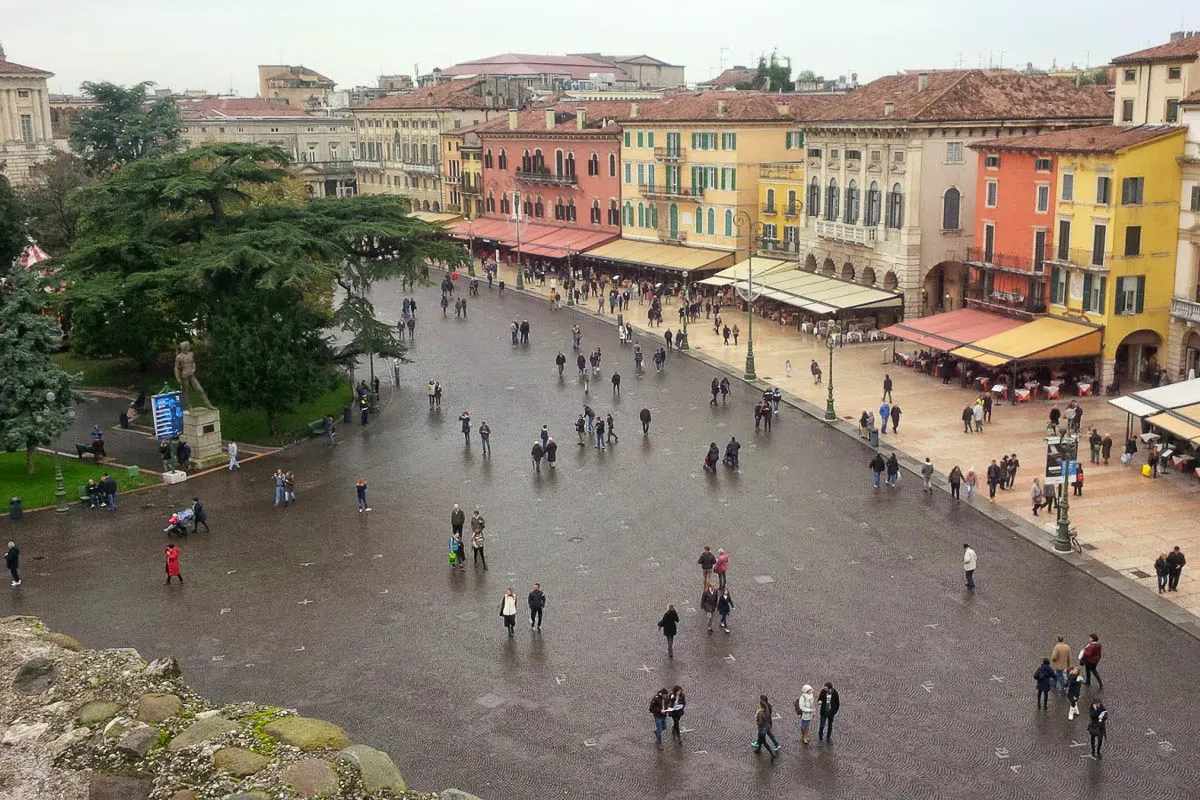
Lined with colourful houses, bustling restaurants, and imposing historic structures, Piazza Bra is the largest square in Verona and one of the largest in Italy, too. I find it a great place to practice my photography skills. There is so much to see here, so many angles to enjoy it all from and then, it seems, there is always something happening at this expansive piazza, a multitude of people milling around, an event taking place. It’s a happy, bright place.
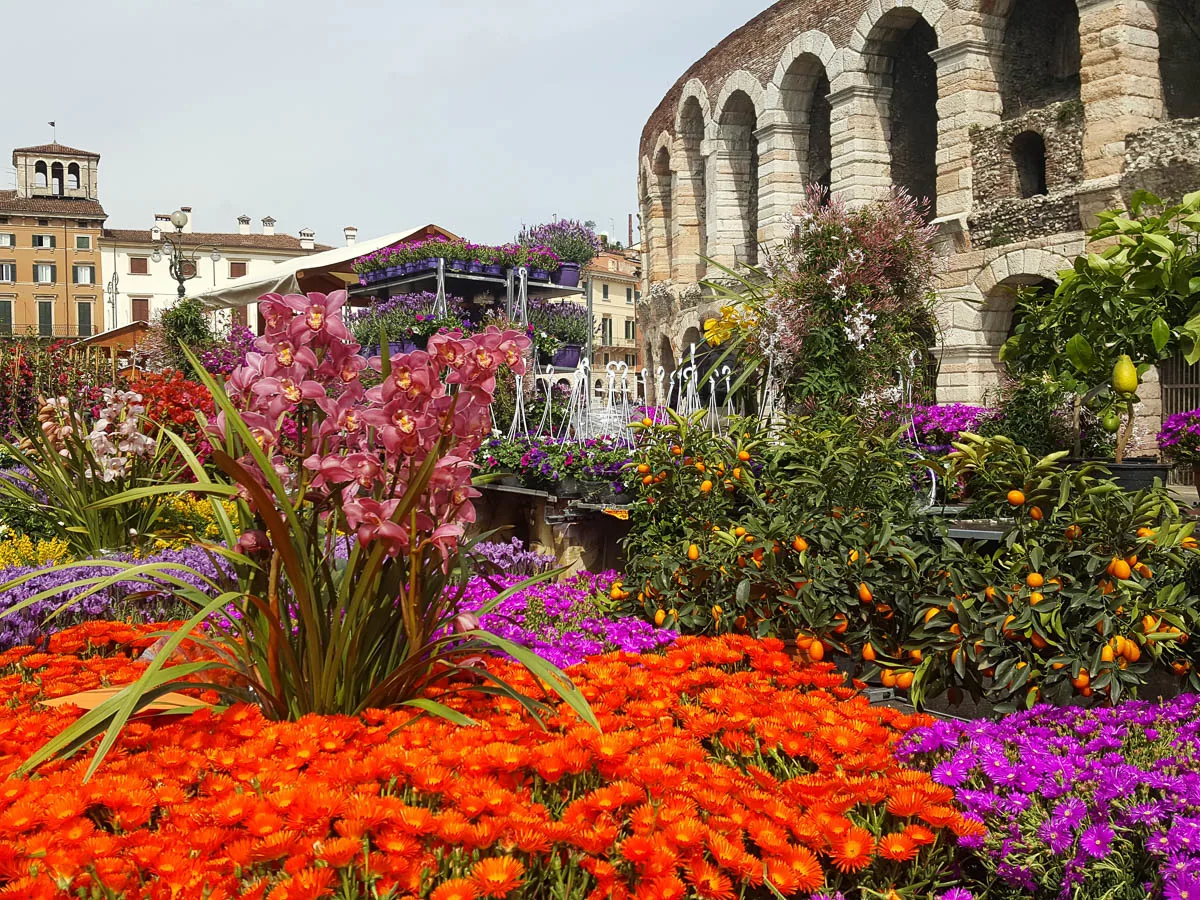
Piazza Bra is also where you will find one of Verona’s largest and most important sights – Arena di Verona. This is a Roman amphitheatre which is older than Rome’s Coliseum and where the world-famous Verona Opera Festival takes place every summer.
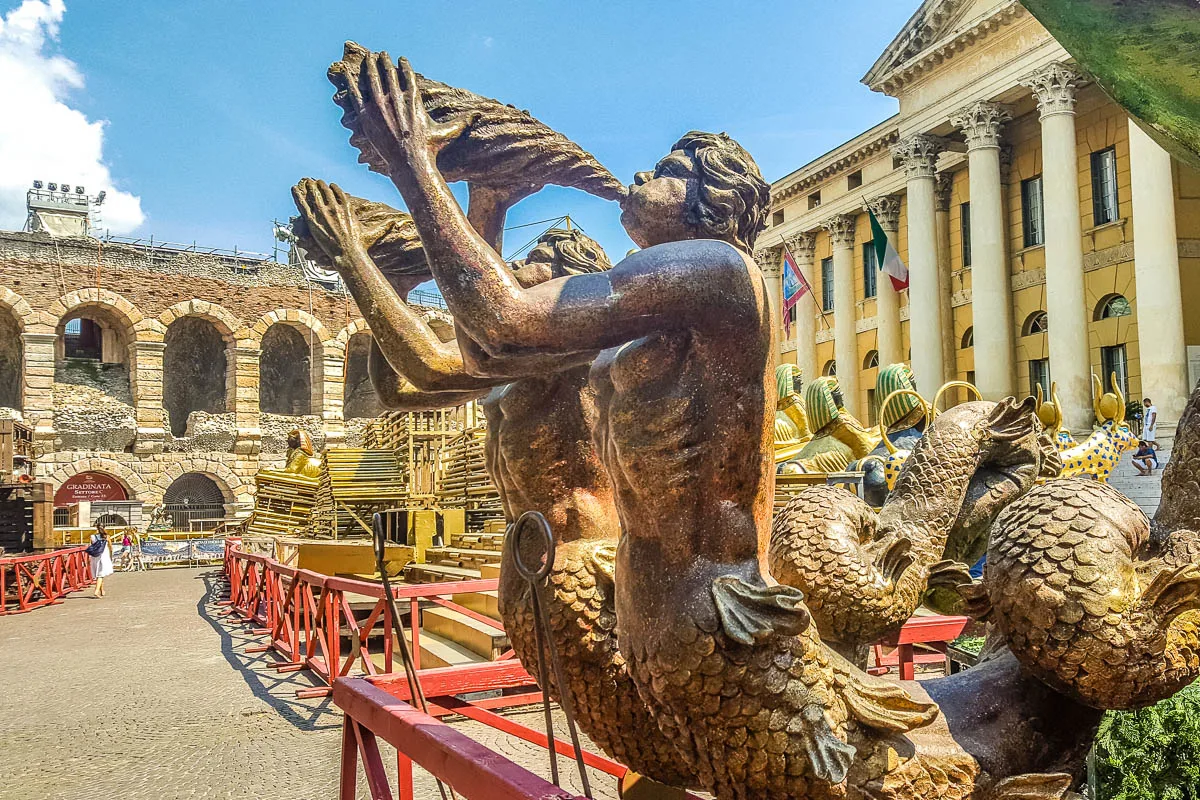
When the Verona Opera Festival is on, the stage sets for the different performances are stored outside of Arena di Verona. I love going for a walk around Piazza Bra then and see up close the stunning props.
There is nothing like seeing Ancient Egypt and Ancient Rome at the same place!

In the middle of Piazza Bra, there is a small green garden with a fountain surrounded by cedar and pine trees. In summer, when it gets really hot, lots of tourists seek refuge from the sun in this little green oasis. Known as the Fountain of the Alps, the garden’s water feature was given to the city of Verona in 1975 by the German city of Munich. The occasion was the twinning of both cities.
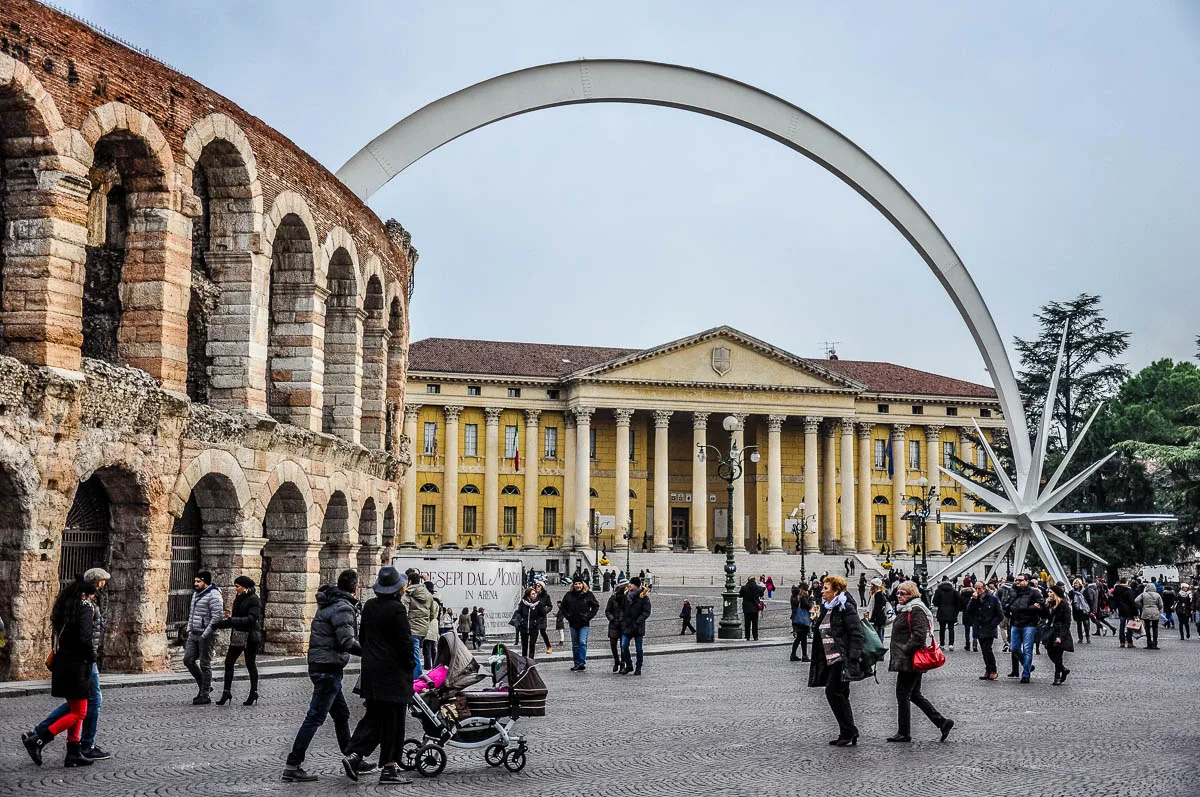
Apart from Arena di Verona, there are two other imposing buildings on Piazza Bra in Verona, Italy:
- Palazzo della Gran Guardia (also known simply as Gran Guardia) – this is the imposing building right opposite the Arena. Built between the 17th and the 19th centuries, nowadays the palazzo hosts many important cultural events and art exhibitions.
- Palazzo Barbieri – a yellow building with a neoclassical facade that nowadays serves as Verona’s Town Hall. It was built in the first half of the 19th century.

People often walk through Piazza Bra on their way to Verona’s other sights and places of interest. I invite you to actually stop at this square for a little bit and take in its atmosphere. You may be in luck and find yourself in the midst of a flower market, a chocolate festival, Verona’s marathon, or even Verona’s Carnival.
Or it could be just a normal day.

In any case, Piazza Bra is like a huge, wonderful stage where history and present meet and where opportunities to take lovely photos and to people-watch abound.
More Information:
18. Piazzale della Vittoria, Vicenza
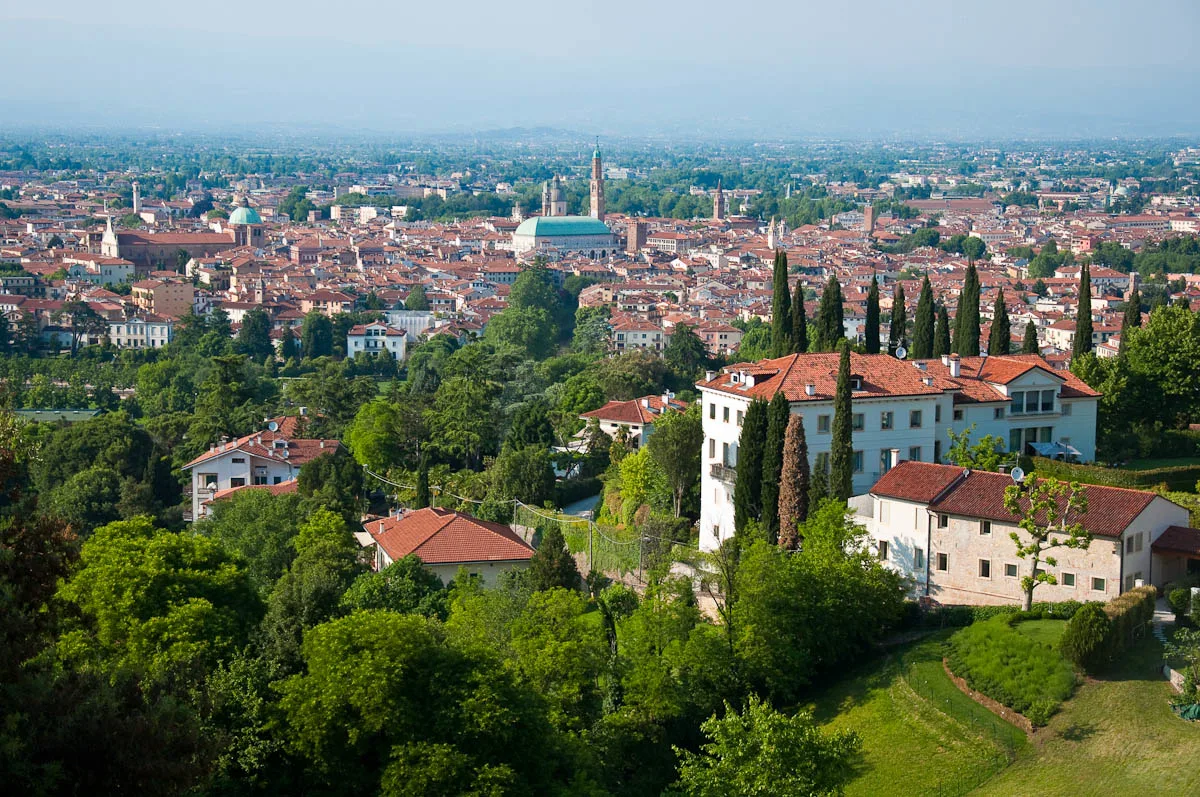
Some of the best Italian piazzas are not in the heart of the historic centre of the respective town or city. Instead, they are like a huge terrace overlooking the whole urban area and offering beautiful panoramic views of it.
A case in point is Vicenza’s Piazzale della Vittoria. This is a small square on top of Monte Berico – a small hill bordering the city’s historic centre. According to the local tradition, the Virgin Mary appeared twice on this hill to a peasant girl called Vincenza Pasini – first in 1426 and then in 1428. At the time, Vicenza was being ravished by a terrible plague and the Virgin promised that if the local people were to build her a church on Monte Berico, the contagion would come to an end.
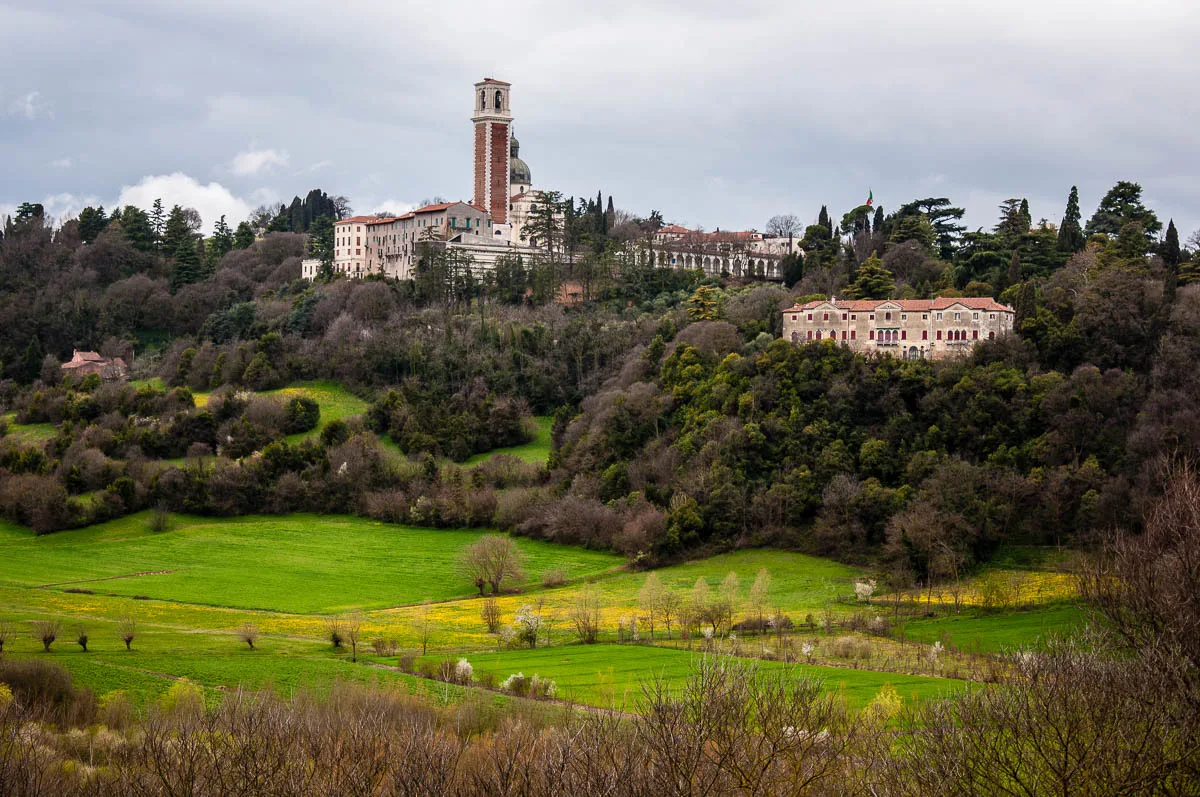
A church was built there in three months. In the centuries that followed, it grew into one of Italy’s most important sanctuaries dedicated to the Virgin Mary.
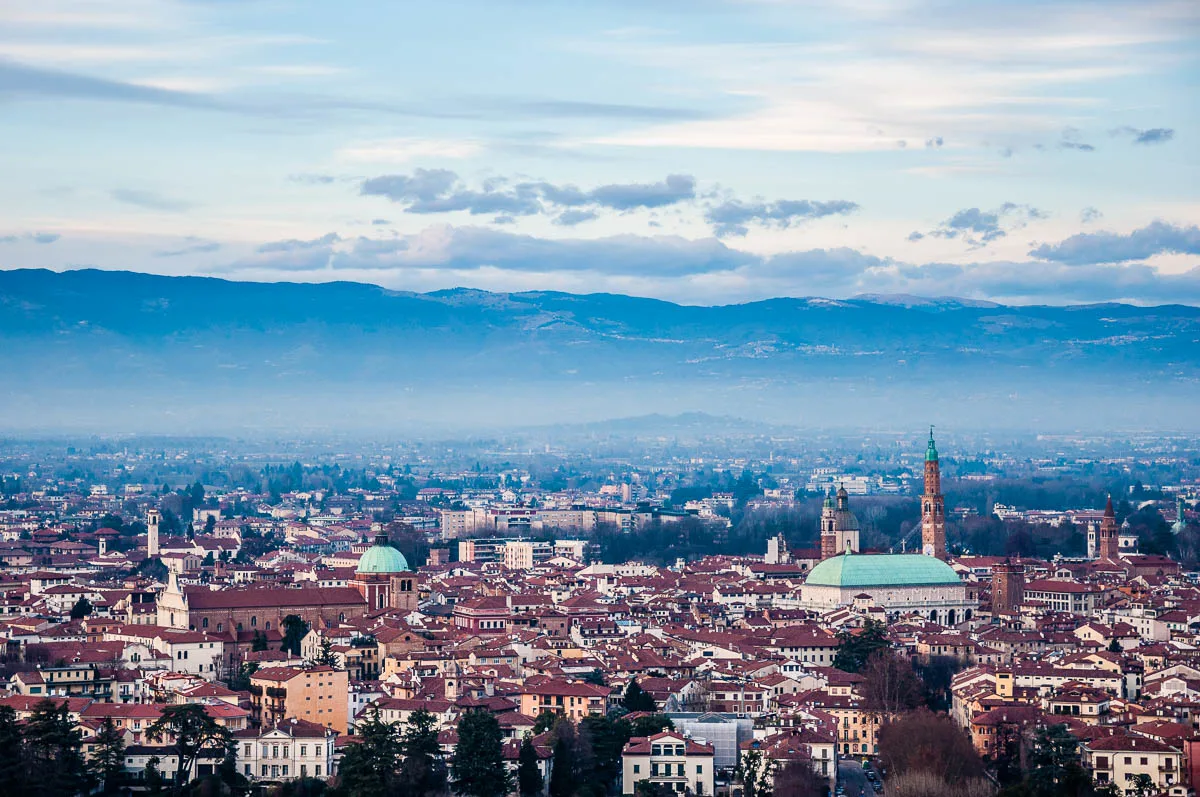
The Piazzale della Vittoria stands just a few steps away from the sanctuary. The small square is surrounded by a stone balustrade and opens a striking view of the whole of Vicenza and the surrounding mountains. From Monte Grappa and the Dolomites to the Venetian Lagoon, on a crisp day the views from up there are truly memorable.
I love going up the hill to Piazzale della Vittoria in Vicenza. Sometimes, I walk up there and sometimes we drive. Once, we greeted the New Year up there surrounded by crowds of vicentini. It’s a lovely place to be at, leaning against the balustrade and taking in the views.
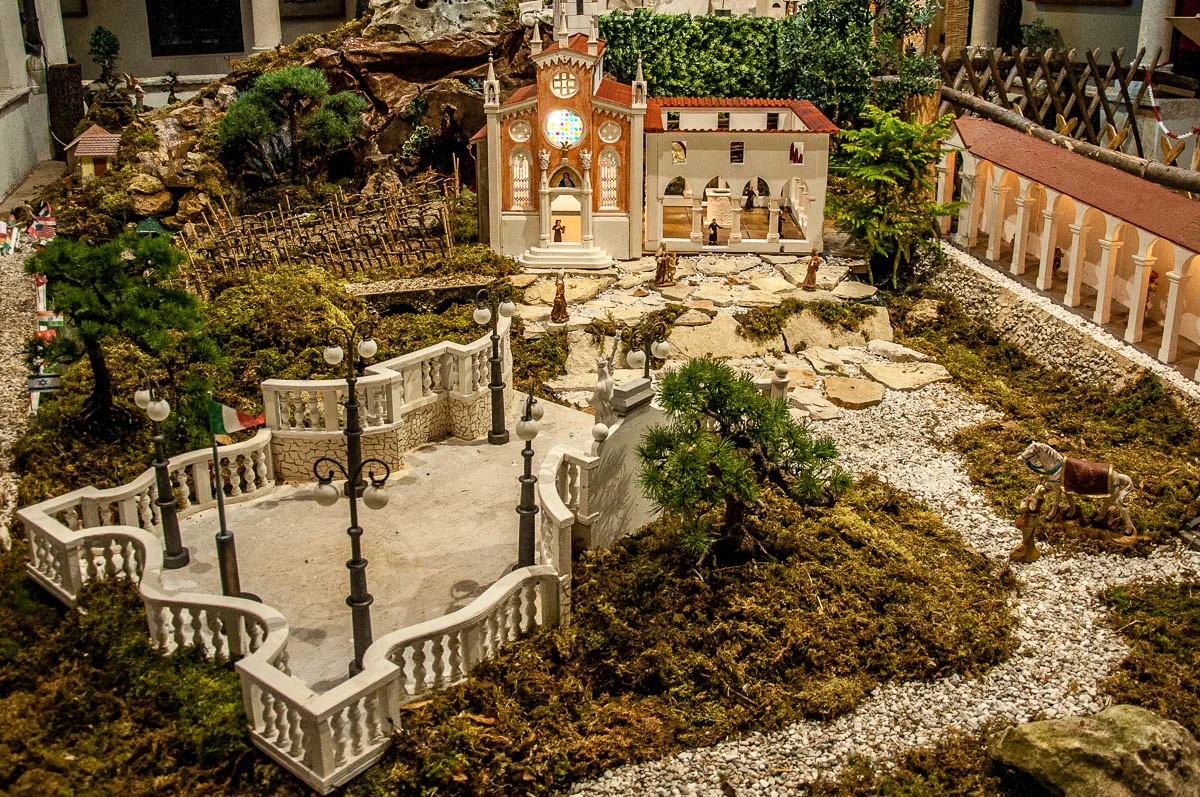
Last Christmas, the Piazzale della Vittoria was recreated as part of a large Nativity Scene set up in the cloister of the monastery attached to the Sanctuary of Monte Berico.
Here it is!
For the first time, I could enjoy a truly panoramic view of the Italian square at which I have spent so many moments taking in Vicenza’s striking panorama.
More Information:
- Vicenza, Italy – 25 Best Things to Do and See in Vicenza – Northern Italy’s Hidden Gem
- The Beauty of Vicenza, Italy in 30 Photos and Stories
19. Prato della Valle, Padua
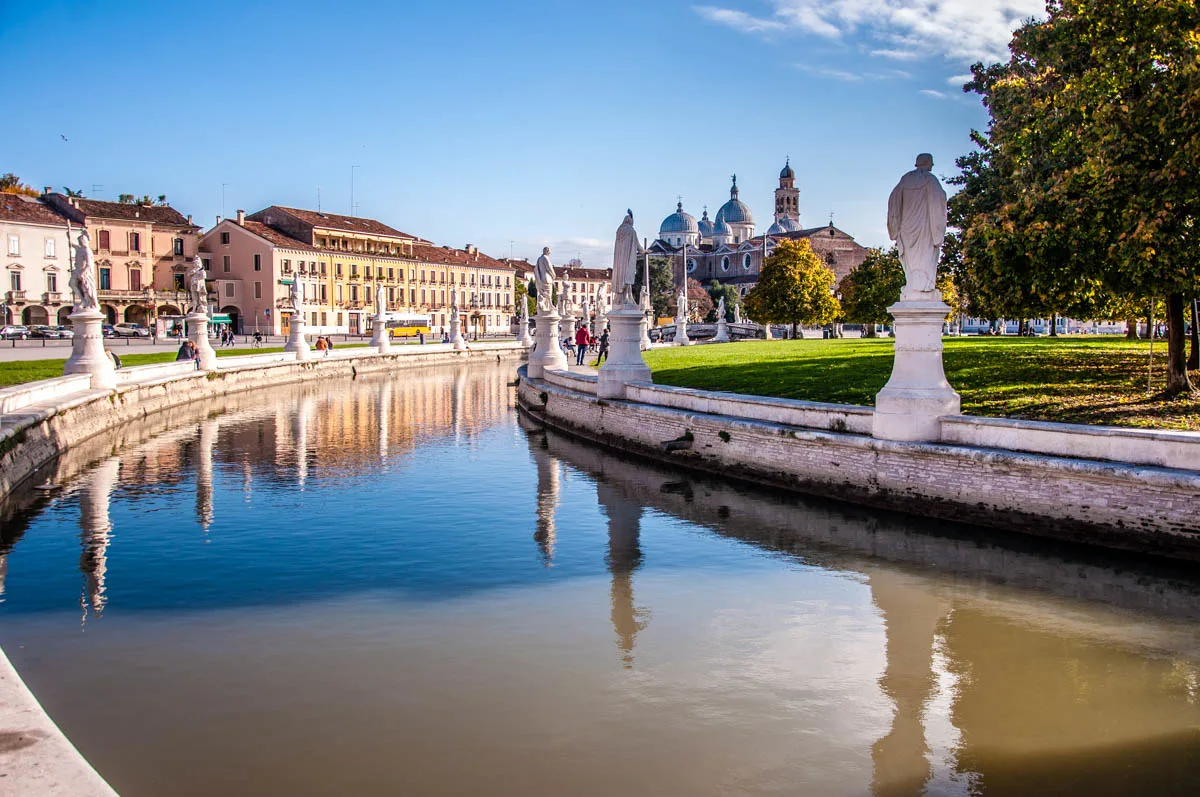
Come see Italy’s largest piazza! It’s in the city of Padua in the Veneto. Padua, as we discovered above, is home to several beautiful squares. Yet, it’s the enormous oval of the Prato della Valle that dominates the Paduan cityscape.
With its 90 000 square meters, Prato della Valle is also one of the biggest squares in Europe. It has an elliptical shape, around which runs a canal adorned with two rings of statues. The green space inside is known as the Isola Memmia. Seen from above, the island’s wide alleys resemble a huge cross.

Prato della Valle was created by Andrea Memmo in the 18th century. If you look at old lithographs, you will see elegant ladies and gents depicted walking around the island in the middle of the square, whereas horse-drawn carriages trot on the other side of the elliptical canal.
Today Prato della Valle regularly holds markets, festivals, parties, and city-wide events. Over my six years in the Veneto, I have had the chance to walk around Prato della Valle many times. People come here at any time of the day to sit on the grass or on the stone edges of the canal, to read or talk with friends. As the square is so enormous, it almost never gets fully crowded.
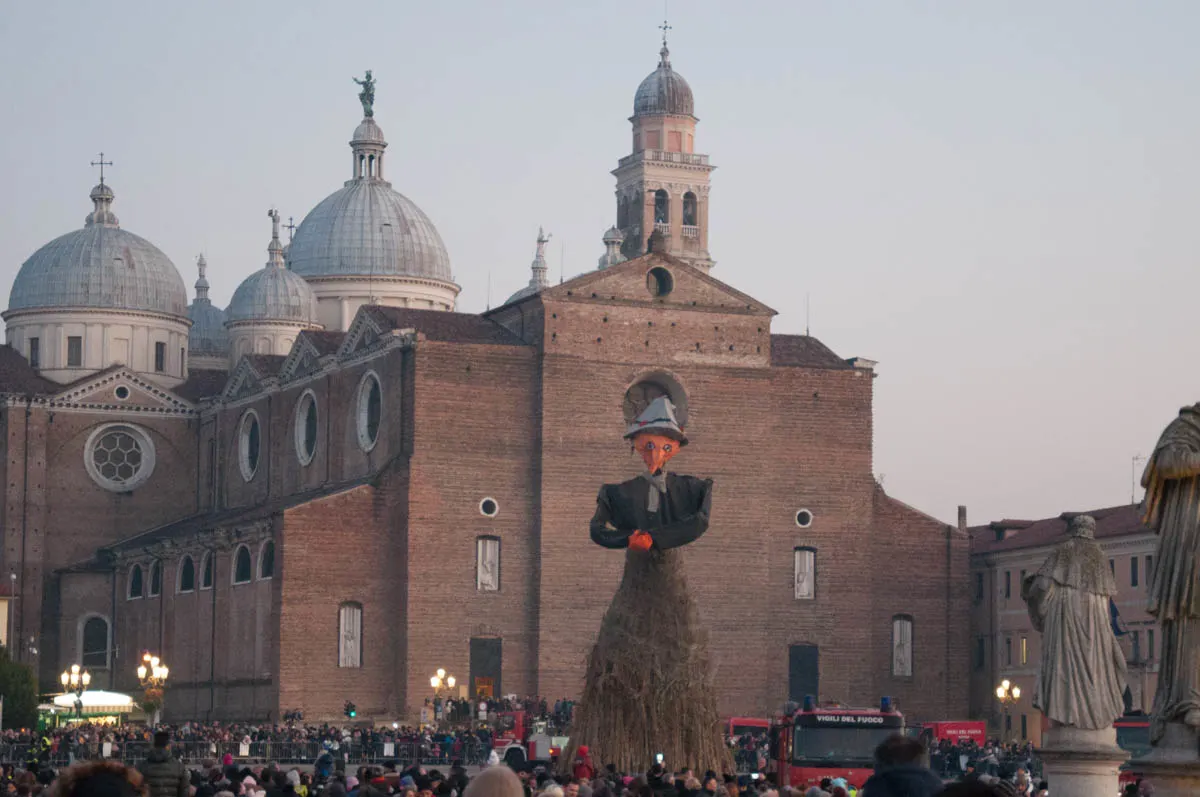
My favourite experience at Prato della Valle so far was seeing the burning of a ten-meter tall effigy of Befana. Befana is the kind old lady who brings presents to the well-behaved Italian children on Epiphany’s Eve. The burning of her effigy on Epiphany is a centuries-old tradition in Italy that is a symbol of leaving the old year behind and starting the new year afresh.

Even if you don’t find yourself at Prato della Valle in Padua during a large event, there is lots to see there. Just across from the square stands the equally gigantic Basilica di Santa Giustina. And then, a stone’s throw away are Padua’s most important church – the Basilica of Saint Anthony – and the world’s first University botanical garden – the Orto Botanico di Padova.
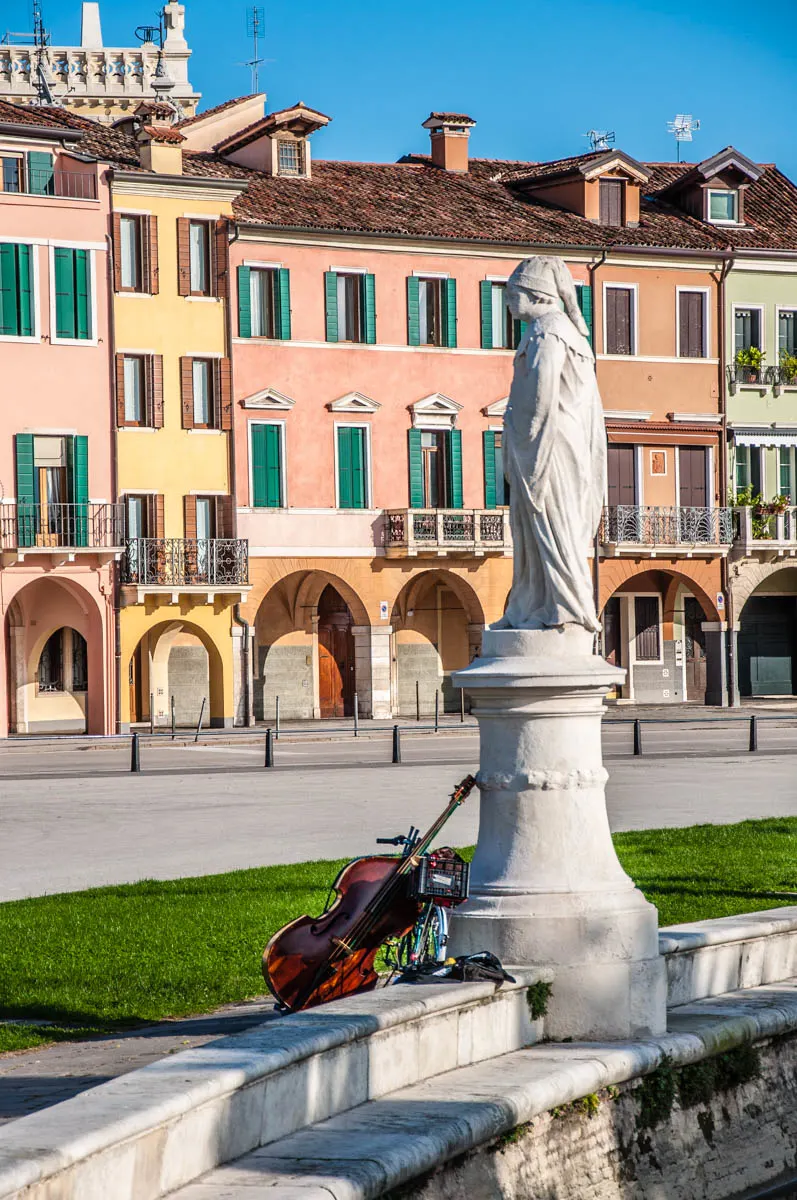
The most interesting thing about Prato della Valle though is right here at the square itself. If you look at the canal that goes around this Italian piazza, you will see 78 statues dotted at regular intervals around it. The statues are of famous people connected with the history and culture of Padua.
I love looking at these statues and learning about the people they represent. Some are of personalities that are famous all over the world. Like Galileo Galilei whose statue is at number 36. Others have had a more local reach. All of them have contributed to the development of the arts, sciences, business, and politics in the city of Padua.
More Information:
- Point 2 from 30 Days of Adventures in the Veneto, Italy
- 10 Reasons to Stay in Padua during Your Italy Holidays
- Padua, Italy – 89 Reasons to Visit the City of the Saint
20. Piazzale Perotolo, Chioggia
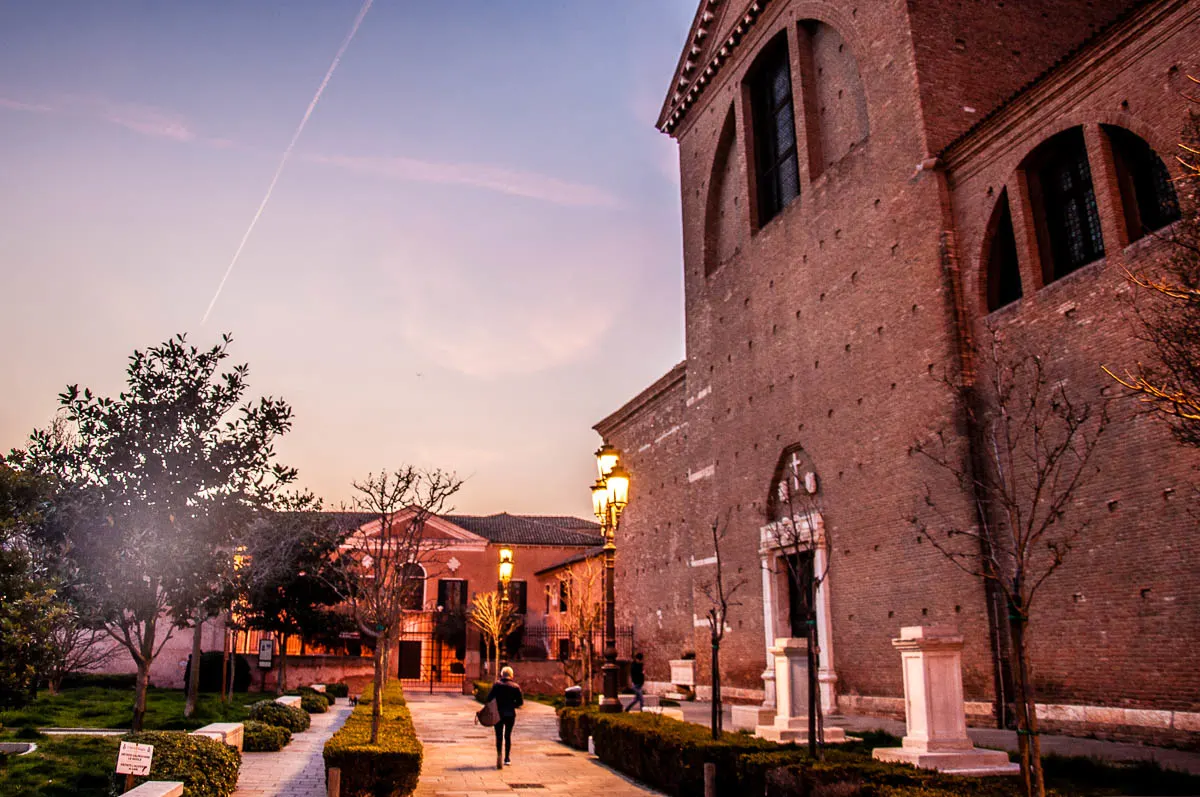
Some of the smallest squares in the Veneto have some of the most fascinating stories attached to them. A case in point is Piazzale Perotolo in the town of Chioggia.
Chioggia is at the southern end of the Venetian Lagoon. Built on small islands and crisscrossed by canals, the town is delightful to visit and explore. It is right here, between the late medieval Porta Garibaldi and Chioggia’s large Duomo, that a tiny square stands.

Called Piazzale Perotolo it is bordered by the historical Perotolo Canal and it’s dotted with benches allowing you to sit down and relax in the shade of the Duomo gigantic sidewall. For me, it’s a lovely little place to stop at on your way in or out of Chioggia’s historical part.
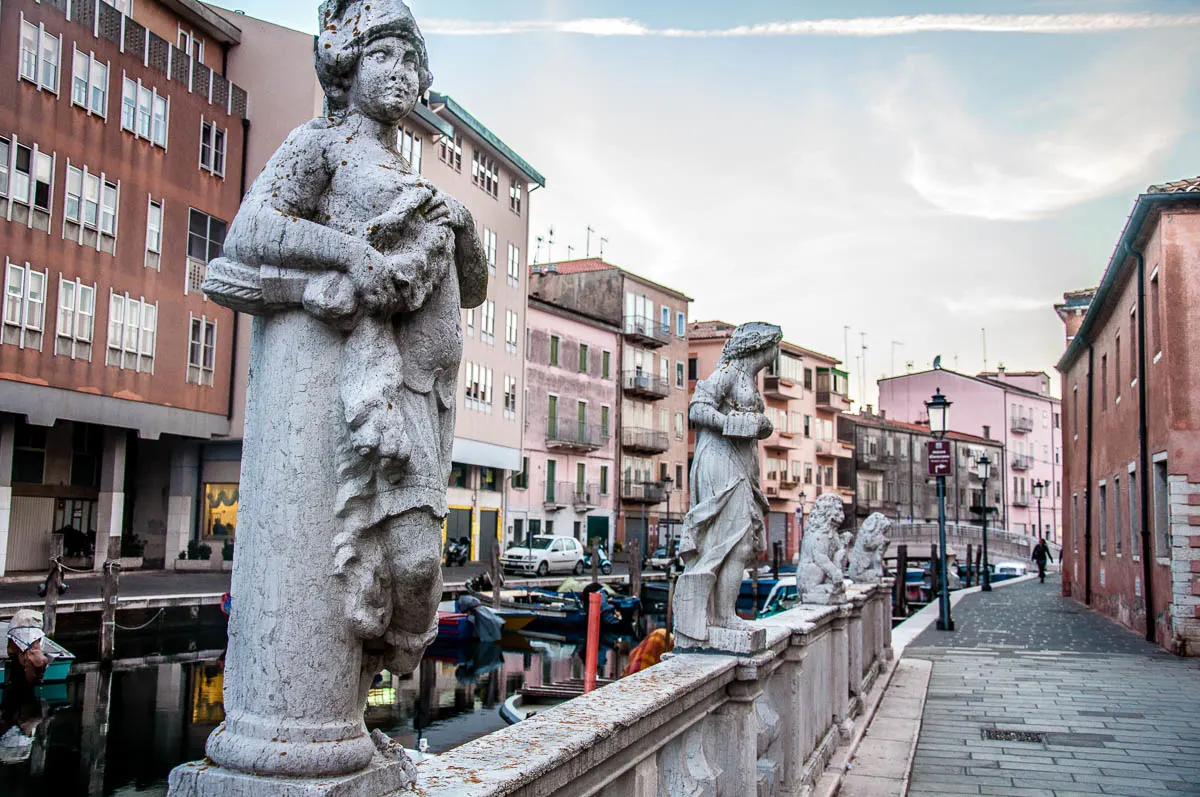
Perotolo, quite amazingly, is a name of pre-Hellenic origins. It’s one of a handful of pre-Hellenic names preserved in Chioggia to this day and pointing to the ancient history of this picturesque town which was founded around 2,000 BC!
The small square takes its name from the adjacent Perotolo canal. Only about ten or so years ago, the canal waters were stagnant and green with algae. A large scale clean-up operation and redirection of the water flow have improved the health of the canal. It is now full of colourful boats.
I like looking at them and imagining what living in Chioggia must be like.
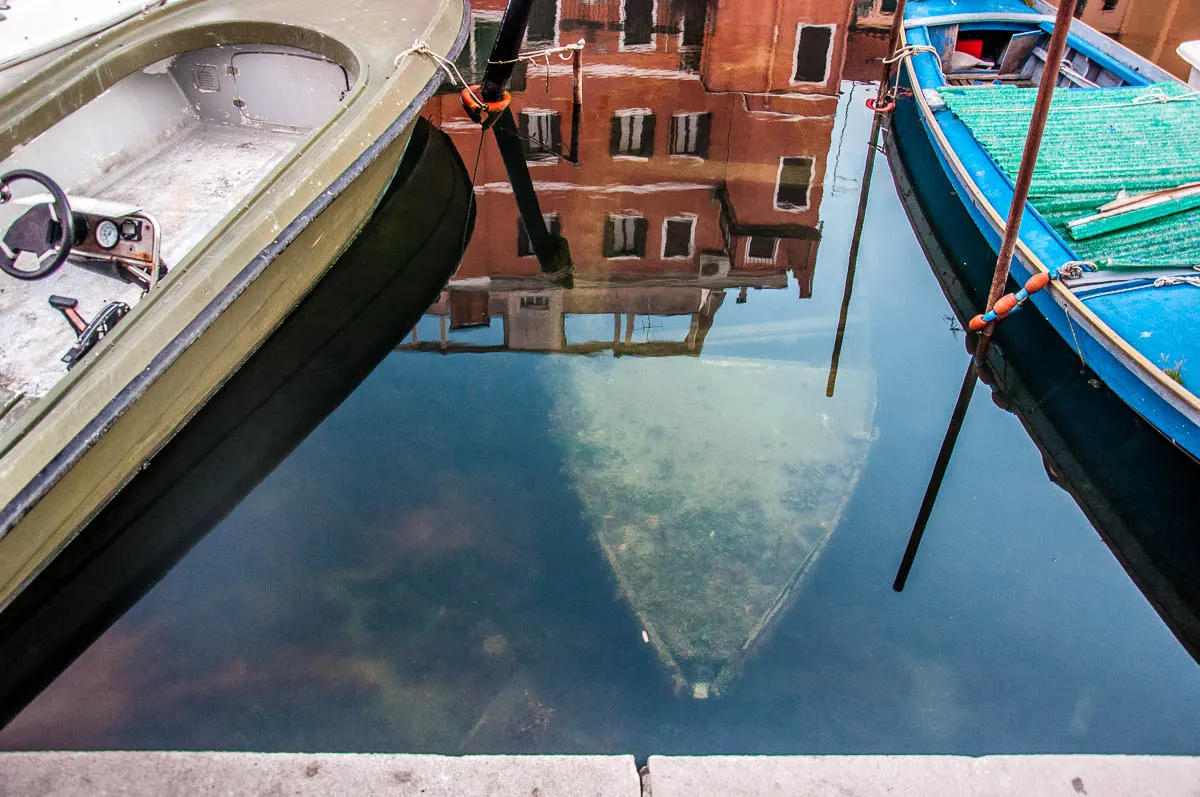
On occasion, I have spotted a ghost boat resting on the bottom of the canal like the one pictured above.
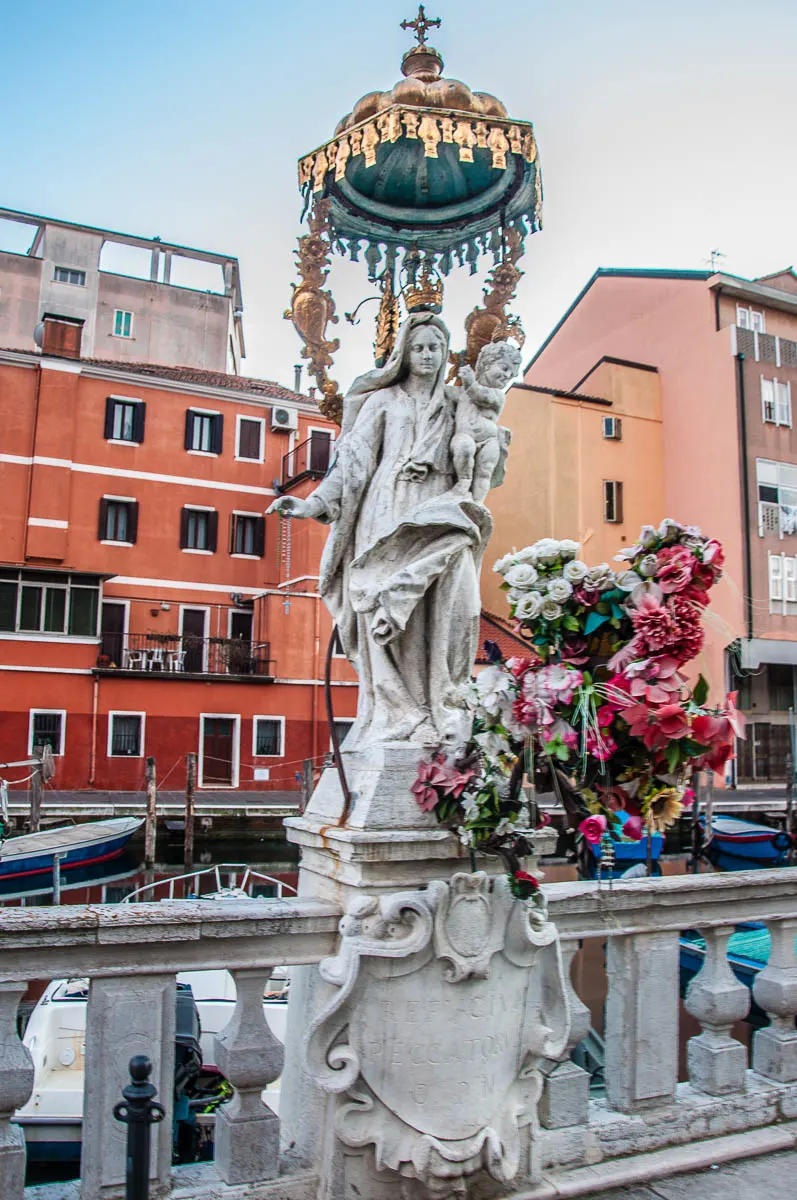
The most interesting thing about Piazzale Perotolo though is the so-called Refugium Peccatorum.
This is a statue of the Virgin Mary holding the Infant Jesus and it was placed there in 1837. The statue itself was carved in 1730 by, allegedly, the Venetian sculptor Alvise Tagliapietra. A golden dome protects the statue and a bunch of flowers is permanently attached to it as a sign of devotion.

Refugium Peccatorum is a Roman Catholic title of the Virgin Mary. It means Refuge for Sinners and it is particularly appropriate for the statue in Chioggia as originally it was placed next to the old Town Hall and those condemned to death were allowed to stop in front of it to pray for their souls on the way to the scaffold.
Once the statue was moved to its current place at Piazzale Perotolo, the women of Chioggia would come to it to pray for the safe return of their husbands and sons from their arduous fishing trips.
Several other statues of people and lions, as well as four fruit baskets, carved out of stone, complete the sculptural group around the Refugium Peccatorum. A must-see when in Chioggia!
More Information:
In Conclusion

The piazza is at the centre of life in Italy. It’s the pulsating heart of the Italian community, a place where large events take place and where people head to at the end of their day in order to enjoy a relaxing family walk and a chat with friends over a nice glass of aperitivo.
Surrounded by beautiful buildings, Italian piazzas are a gateway to the history and the traditions of towns and cities all over Italy. They house important churches, centuries-old town halls, lively daily markets, and historic coffee houses and restaurants.
Visiting an Italian city without exploring its piazzas is like missing on what makes that particular city a living and breathing community of people.
The above blog post presents you with the most beautiful piazzas in the Northern Italian region of the Veneto. From the worldwide famous and admired St. Mark’s Square in the tourist magnet of Venice to the quirky piazzas of off the beaten track medieval walled towns, from some of the largest squares in Europe to tiny piazzas offering gorgeous views over the nature and the cityscape of the Veneto, all sorts of piazzas are covered to give you a good idea of the beauty and the history of the squares in this corner of Italy.
I hope that you enjoy reading this blog post and that it will give you just the spur that you need to discover new corners in the Veneto, Italy to fall in love with.
More Helpful Links
- Top 15 Places to Visit in the Veneto, Italy – The Ultimate Guide
- 30 Days of Adventures in the Veneto, Italy – #30daysofadventures
- Hidden Gems in Venice – 101 Things to Do in Venice, Italy Off the Beaten Track
- 20 Best Things to Do and See in Verona, Italy in One Day – The Ultimate Itinerary with Photos and Tips
- 25 Best Things to Do and See in Vicenza – Northern Italy’s Hidden Gem
- 13 Best Things to Do in Padua, Italy in One Day (Full Itinerary with Times, Photos, and Map)
- 10 Reasons to Stay in Padua during Your Italy Holidays
- 8 Most Beautiful Villages to Visit in the Veneto, Italy
- Day Trips from Verona – 16 Destinations to Fall in Love With (With Travel Times and Train Tips)
- Day Trips from Padua, Italy – Over 35 Unmissable Destinations in the Veneto, Lombardy, and Emilia-Romagna
- Day Trips from Vicenza, Italy – Over 90 of the Best Destinations
- 11 of the Best Day Trips from Venice (With Lots of Photos, Travel Times and Italy Train Tips)
- Best 12 Towns to Visit Around Lago di Garda – Italy’s Largest Lake
- Most Beautiful Piazzas in the Veneto, Italy – Story
Thank you for reading! Please, leave me a comment, pin the image below or use the buttons right at the top and at the end of this blog post to share it on social media.
For more useful information like this, please, like my blog’s page on Facebook and subscribe to my strictly no-spam newsletter.
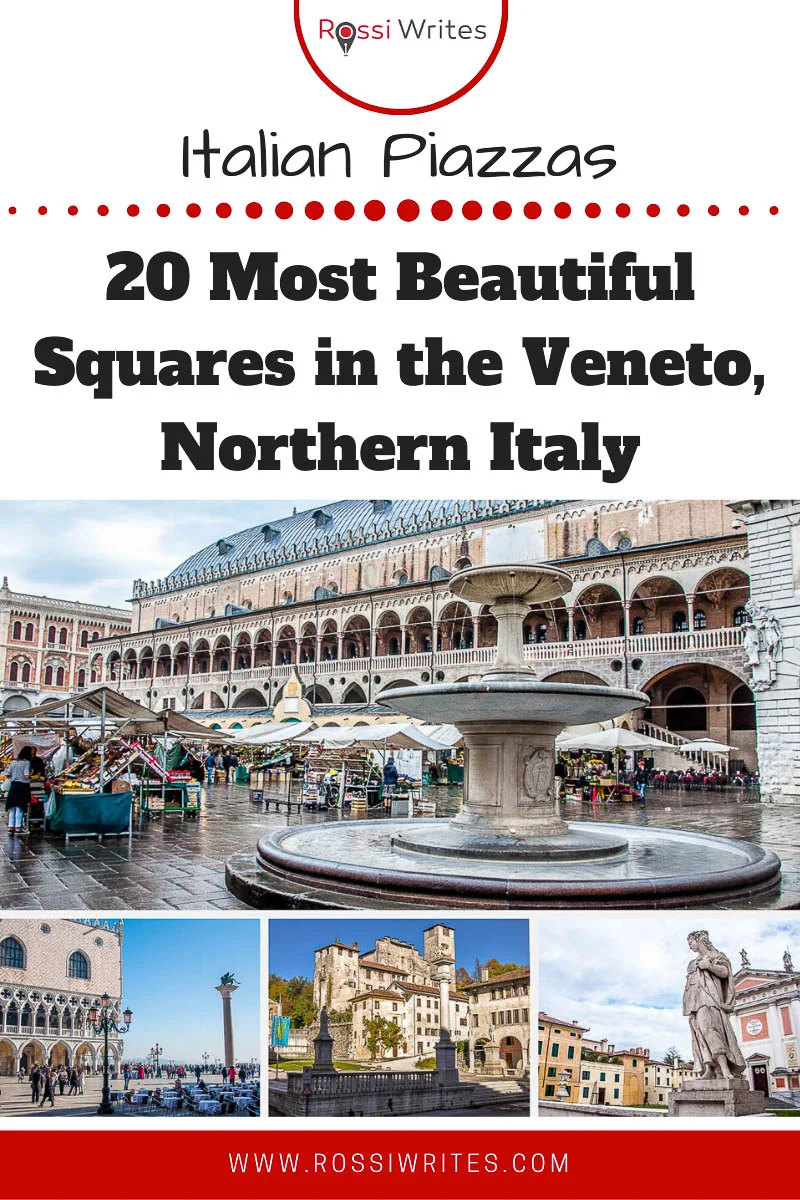

Alexandra Docherty
Monday 18th of May 2020
We have sat on a few of these beautiful piazzas but so many still to visit.
admin
Monday 18th of May 2020
Yes, the choice is huge here! So much to see, time is never enough! Thank you for stopping and Best wishes,
Rossi :)